Sand Hill Road
description: a road in Menlo Park, California, known for its concentration of venture capital firms
145 results
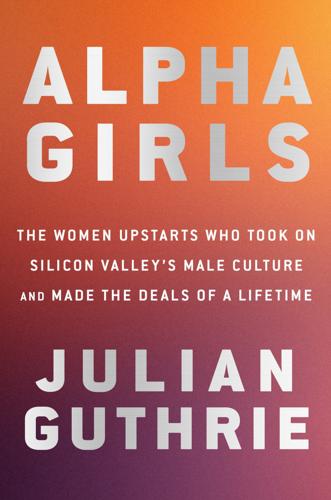
Alpha Girls: The Women Upstarts Who Took on Silicon Valley's Male Culture and Made the Deals of a Lifetime
by
Julian Guthrie
Published 15 Nov 2019
ISBN 9780525573920 Ebook ISBN 9780525573937 Cover design: Lucas Heinrich Cover image: (gradient) A-Star/Shutterstock v5.4 ep To my mother, Connie Guthrie, an original Alpha Girl CONTENTS Prologue PART ONE: The Valley of Dreams PART TWO: Getting in the Game PART THREE: The Outsiders Inside PART FOUR: Survival of the Fittest PART FIVE: Girl Power Photo Insert PART SIX: Marriage, Motherhood, and Moneymaking PART SEVEN: Life, Death, and Picassos PART EIGHT: The Days of Reckoning PART NINE: The Awakening Author’s Note Acknowledgments PROLOGUE SAND HILL ROAD MENLO PARK, CALIFORNIA Mary Jane Elmore was giddy as she looked down at the rusted-out floorboards of her old green Ford Pinto. She could see the road rushing by below. But she wasn’t driving on just any road. She was making her way up Sand Hill Road, in the heart of Silicon Valley, about to start a new life intent on changing the world. A pretty young woman with brown hair and brown eyes, Mary Jane had graduated from Purdue University in 1976 with a degree in mathematics.
…
Her beat-up Pinto, which leaked radiator fluid and still had its original Firestone 500 tires, had taken her nearly two thousand miles, from Kansas City to northern California, where she had landed a job at an eight-year-old technology company called Intel. Although Sand Hill Road was the center of the venture capital world, no bronze statue of a charging bull, no Gilded Age architecture, and no artificial canyons towered over by gleaming skyscrapers commemorated it. At that time it was a stretch of rolling land laced with scrub brush, sprawling oak trees, big pink dahlias, and buildings that stretched long and low like an old Lincoln Continental. The midcentury modern structures, with outer skins of cedar, redwood, and masonry, featured numbers but no names. Unlike other centers of commerce, Sand Hill Road is intentionally inconspicuous; it consciously resists contemporary symbols of money and power.
…
Returning home from her latest Broadway Angels meeting, she smiled when she saw the sign for the Sand Hill Road exit. She was older and wiser than when she’d first arrived in Silicon Valley and seen that sign. She was now driving a BMW X1 instead of a rusted-out Ford Pinto, and she had the latest smartphone instead of a CB radio. But she still had the spirit of that adventure-seeking girl looking at a future full of promise. As she told Sonja at the meeting, “I feel like I have something big still to do.” Whizzing by Sand Hill Road, she cranked up the music. Tim McGraw was singing “My Next Thirty Years”: I think I’ll take a moment, celebrate my age The ending of an era and the turning of a page.
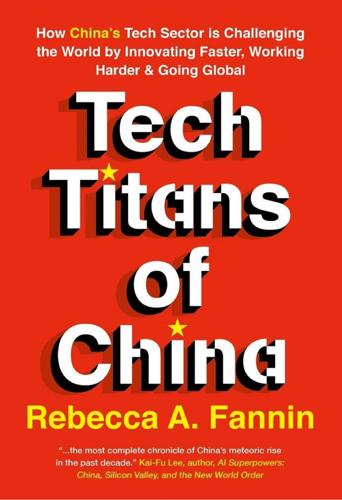
Tech Titans of China: How China's Tech Sector Is Challenging the World by Innovating Faster, Working Harder, and Going Global
by
Rebecca Fannin
Published 2 Sep 2019
PART TWO China’s Silicon Valley Venture Capitalists A core group of US-China leaders set high standards as a Silicon Dragon-style VC market rises to challenge Silicon Valley. A look at who’s scoring in China venture investing, and why. Chapter 5 Sand Hill Road Gets a Mega-Rival China’s red-hot venture capital market has risen to nearly match the US level and no longer looks to California’s Sand Hill Road for cues. Top VC firms in China are funding game-changing innovations at unicorn valuations and achieving high marks for performance. PART THREE Tech Sectors that Matter Most: China’s Grab for Superpower Status A look at key market sectors with strong potential to shake up leadership and overturn technology standards in the world as East and West vie for tech superpower status.
…
part two CHINA’S SILICON DRAGON VENTURE CAPITALISTS A core group of US-China venture capital leaders set high standards as a Silicon Dragon-style VC market rises to challenge Silicon Valley. A look at who’s scoring in China venture investing, and why. CHAPTER 5 ________________ SAND HILL ROAD GETS A MEGARIVAL China’s red-hot venture capital market has risen to nearly match the US level, and no longer looks to California’s Sand Hill Road for cues. Top VC firms in China are funding game-changing innovations at unicorn valuations and achieving high marks for performance. Sequoia Capital China partner Glen Sun knows what it takes to get ahead in venture capital investing.
…
They are chauffeured around by private drivers or Uber (Didi in China) and work in beautifully designed and spacious offices along Sand Hill Road close to Stanford University or city center towers in Beijing and Shanghai. It may sound cushy, but it takes hard work, commitment, and determination. Crosscurrents and Synergy China’s Silicon Valley owes much of its initial magic to a reliance on the United States for a cross-border flow of ideas and capital. A two-way highway runs from Beijing’s Zhongguancun Software Park to Menlo Park’s Sand Hill Road, raising capital and funding startups hinged from both coasts of the Pacific Ocean. This two-way channel creates synergy and speeds up startup launches, innovation, and scale across the United States and China, as well as globally.
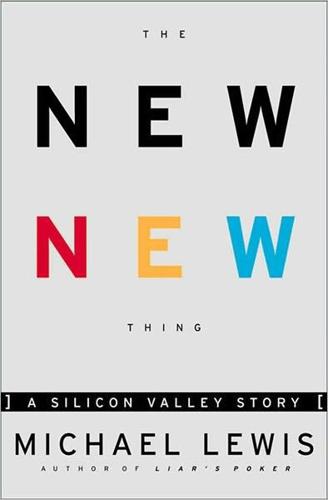
The New New Thing: A Silicon Valley Story
by
Michael Lewis
Published 29 Sep 1999
Page 101 7 Throwing Sand in Capitalist's Eyes Not long after he drew the Magic Diamond with himself at the center of the U.S. health care industry, Clark drove up to Sand Hill Road to see the venture capitalists. The venture capitalists advertised themselves as the great financial risk takers of the Valley, but you could learn everything you needed to know about their attitudes toward risk, simply by driving up Sand Hill Road. Sand Hill Road was where the venture capitalists clustered together for safety, like ducks in a park waiting for the bread crumbs to fall. Each time Clark made this trip, the ducks came out of it worse than the time before.
…
It was an extraordinary performance, and it wasn't over yet. Clark's lack of nostalgia for the history beneath us was nearly complete. Actually, as we circled overhead, what he said was "They need to tear it all down and start over. It's a ridiculous waste of space." He pointed out that offices on Sand Hill Road were going for twice the rents of space in midtown Manhattan. Sand Hill Road had the most expensive commercial real estate in the United States. And they were still putting two-story buildings on it! "One day it'll all be skyscrapers," he said. The thought pleased himhe became less irritated by the crashed plane. The impermanence of the place allowed him, and it, to remain suspended in a state of pure possibility.
…
Xerox PARC, birthplace of the personal computer: Clark had built his Geometry Engine there, and the Geometry Engine had changed computing. The great sprawling campuses of the old work station companies, Silicon Graphics and Sun Microsystems: Clark had created the former; some friends of his had created the latter. The dozens of tiny ski chalets on Sand Hill Road, for which venture capitalists now paid ninety dollars a square foot: they paid that money so that they could be near Clark, and people like Clark, when they announced the new new thing. The companies born on the Internet: Yahoo, Excite, @Home, eBay, and so on: they derived, one way or another, from Netscape, which Clark had founded after he left Silicon Graphics.

The Power Law: Venture Capital and the Making of the New Future
by
Sebastian Mallaby
Published 1 Feb 2022
—Intel’s Andy Grove, addressing John Doerr Contents Introduction Unreasonable People Chapter 1 Arthur Rock and Liberation Capital Chapter 2 Finance Without Finance Chapter 3 Sequoia, Kleiner Perkins, and Activist Capital Chapter 4 The Whispering of Apple Chapter 5 Cisco, 3Com, and the Valley Ascendant Chapter 6 Planners and Improvisers Chapter 7 Benchmark, SoftBank, and “Everyone Needs $100 Million” Chapter 8 Money for Google, Kind of for Nothing Chapter 9 Peter Thiel, Y Combinator, and the Valley’s Youth Revolt Chapter 10 To China, and Stir Chapter 11 Accel, Facebook, and the Decline of Kleiner Perkins Chapter 12 A Russian, a Tiger, and the Rise of Growth Equity Chapter 13 Sequoia’s Strength in Numbers Chapter 14 Unicorn Poker Conclusion Luck, Skill, and the Competition Among Nations Acknowledgments Appendix: Charts Notes Timeline Index Introduction Unreasonable People Not far from the headquarters of Silicon Valley’s venture-capital industry, which is clustered along Palo Alto’s Sand Hill Road, Patrick Brown strode out into his yard on the Stanford University campus. Atop a little hill behind his house, Brown got down on his hands and knees, a shaggy fifty-four-year-old professor in a T-shirt, peering at the vegetation through rounded glasses. Proceeding delicately, like a detective collecting samples that might yield a vital clue, Brown began digging out the roots of some wild clover plants.[1] It might impress the ordinary gardener to know that those roots would soon yield $3 million.
…
In most places and at most points in human history, Brown’s epiphany would have been inconsequential. But, as Brown himself reflected later, he had “the very good fortune of living in the epicenter of venture capital.”[3] Because Stanford sat at the heart of Silicon Valley, its golf course laid out along the edge of Sand Hill Road, Brown was digging up his yard with a clear purpose. Those clover roots contained heme, an iron-carrying molecule found in hemoglobin, which gives blood its red color. If Brown could show how this plant molecule could mimic the properties of bloody meat, there was a good chance that a venture capitalist would fund a plantburger company.
…
They channel capital, talented employees, and large customers to promising startups; in this way, they replicate the team formation, resources, and strategic vision to be found in corporations.[33] But at the same time, because their network is fluid and amorphous, they have the flexibility of the market. The rainmakers of Sand Hill Road can get behind a startup with a fresh business idea or a scientific breakthrough; they can shape it, expand it, murmur its name into the right ears. But when a round of venture funding is exhausted, it is time to put the startup to a market test. If there are no enthusiastic buyers for the next tranche of the startup’s equity, the price signal will do its work: the venture capitalists will close it down, avoiding the waste of resources that comes from backing speculative R&D beyond the point at which success appears impossible.
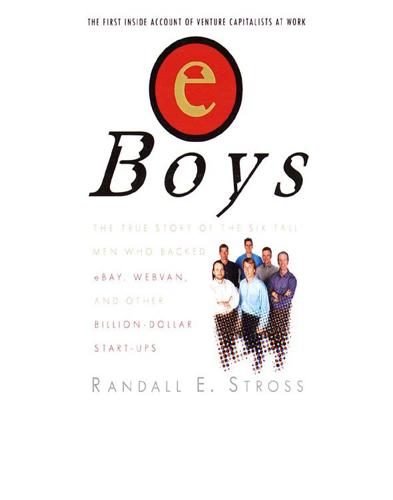
eBoys
by
Randall E. Stross
Published 30 Oct 2008
For the entrepreneur, a wait so long would have been intolerable were it not for the consoling thought that the leading venture capital firm in the galaxy was saying it might invest in his company. By the time Kleiner Perkins finally got around to tendering an offer, the entrepreneur had been wooed by another venerable Sand Hill Road firm, Mohr Davidow Ventures, founded in 1983. Seeing the entrepreneur hesitate in accepting Kleiner Perkins’s offer, Mohr Davidow, in turn, contacted two other venture firms to see if either would be willing to be a co-investor. One was Benchmark, founded fewer than three years previously and chosen because Mohr Davidow viewed the Benchmark partners as a hardworking, aggressive group that would love nothing more than the opportunity to beat Kleiner Perkins in winning over the entrepreneur.
…
Beige and white, constructed of glass, wood, stucco, and more glass, perched on a hillside amid sheltering oak and eucalyptus, the small office building in which Benchmark resides would look quite at home at Pebble Beach. Two stories, each flanked with flower-edged terraces on the sides and rear, create a Mediterranean effect, undisturbed by the lower parking level, which is hidden at the rear of the hill. By the late 1990s, these offices and the others like it along Sand Hill Road commanded the highest commercial rents in the country. The first venture capital firm to take up residency in that stretch had been Kleiner Perkins, in 1972, when Interstate 280 was newly opened and the nearby land behind Stanford University was still undeveloped. Since then it had become exceedingly valuable as elsewhere the last remaining orchards of Silicon Valley gave way to condominiums, offices, and strip malls.
…
From his previous experience as a venture capitalist, he was at Benchmark’s formation already extremely wealthy, but material success was a garment he refused to wear. He was determined to remain unchanged, as hungry to learn, to connect with you, as he’d ever been. Benchmark’s mahogany-and-art-appointed office on Sand Hill Road was an unlikely destination for a working-class student from a single-parent household in Flint, Michigan. Like Beirne’s family in New York, Kagle’s relatives in every direction were employed by General Motors, but their careers lacked the happy ending. Kagle’s great-grandfather was killed at the age of thirty-eight in the great 1937 Buick sit-down strike.
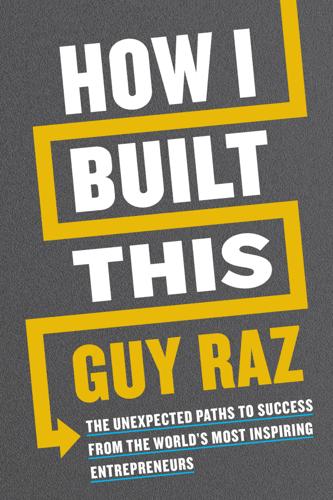
How I Built This: The Unexpected Paths to Success From the World's Most Inspiring Entrepreneurs
by
Guy Raz
Published 14 Sep 2020
Which means it needs your partner—your co-founder—too. 6 Fund the Business, Part 1: Bootstrapping Adam Lowry and Eric Ryan found their first retailer for Method in February 2001, with a chain of family-owned grocery stores along the San Francisco peninsula called Mollie Stone’s Markets. The first location was in Burlingame, just off El Camino Real, which runs like an artery down the peninsula, through two of the richest counties in California and into Silicon Valley, crossing Sand Hill Road along the way. That road’s famous concentration of venture capital firms had all basically snubbed Adam and Eric when they first went out looking for investors. This was a time, just as the dot-com bubble was preparing to burst, when if you had “.com” in the name of your business, there was a line out the door to give you money.
…
But if you were doing something more analog, like trying to disrupt a stagnant consumer goods category dominated by two multibillion-dollar conglomerates—in this case, Procter & Gamble and Unilever—that door wasn’t just closed, it was locked and dead-bolted, and the lights were turned off inside.* Adam and Eric didn’t worry too much about the initial rejections they received from the Sand Hill Road guys (and make no mistake, it was almost all guys on Sand Hill back then), because they knew they wouldn’t actually need that much money to get their business off the ground. These were not dangerous industrial solvents they were trying to make, after all. They were creating natural, nontoxic cleaners with water, vinegar, baking soda, plant extracts, and essential oils—“very common, everyday, mild chemicals . . . that don’t require a professional lab in order to mix,” as Adam described it.
…
Those first couple years, they did most everything themselves: perfecting their formula, guiding the design and manufacture of the bottles, printing Eric’s personal cell phone number on the bottle as the customer service number,* doing in-store demos to get customers (Eric even wore a lab coat), pitching investors like the Sand Hill Road firms, calling on retail accounts like Mollie Stone’s Markets. They even handled inventory management. Every day, as they expanded into more Mollie Stone’s and then into additional boutique groceries, Adam and Eric would take turns driving around to each store to check inventory levels and restock the shelves as necessary.
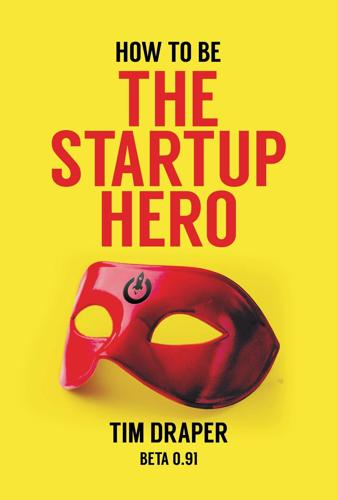
How to Be the Startup Hero: A Guide and Textbook for Entrepreneurs and Aspiring Entrepreneurs
by
Tim Draper
Published 18 Dec 2017
No one had heard of Menlo Park, but Palo Alto was considered one of the big cities of the peninsula. But Tom kept at it and finally recruited some top venture capitalists to come work at the Sand Hill Road location. It became known as the place for venture capitalists. The press wrote it up regularly as the venture capitalist’s equivalent of Wall Street. Tom was a big success. The property is probably worth nearly $1 billion today. Walking around 3000 Sand Hill Road with Tom Ford was enlightening. He showed me around the property with great pride. Four times he bent down to pick up cigarette butts. He made mental notes of a drain that had been bent and some paint that had unwittingly covered a square centimeter of a window.
…
We were the first venture capitalist to advertise, first to build a network of venture capitalist s, first Silicon Valley venture capitalist to set up outside the US, and first to focus on the Internet. When we decided to move our offices to Sand Hill Road, where most of the venture capitalist gravity was, we threw a party. We called it the “There Goes the Neighborhood Party.” We invited all our brethren and neighbors from Sand Hill Road. The party had a safari theme and we had monkeys and various other animals in cages. I rode in on an elephant. The landscape was perfectly manicured in our new location. But when I rode in on the elephant, he took a slight detour, wrapped his trunk around a nice-sized elm tree, ripped the tree out of the dirt and ate it.
…
But maybe I can help you think about your journey in a new way. To better help you think about what a Startup Hero does and the impact he or she creates, whether in a success or a failure. I provide you here with a story. The Tesla Story Ian Wright came to pitch his new business, Wright Motors. We met at DFJ’s offices on Sand Hill Road in Menlo Park, California. He brought with him an invention that was strung together with tires, PVC pipes, some fabric, and magic Lithium Ion batteries. It was a new kind of electric car. He asked me to sit in the machine and get strapped in with a five-point harness. I asked why I needed to be strapped in since the only electric cars I had seen were golf carts and the original Chevy Volt that George Schultz drove, and none of them had much in the way of scary pickup.
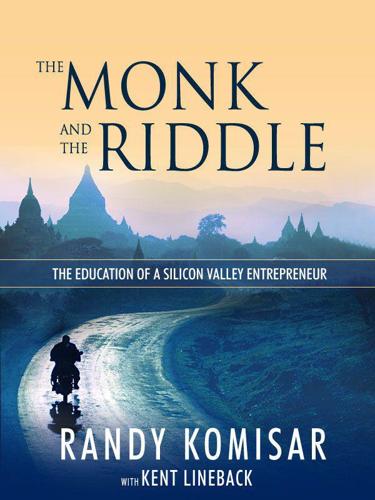
The Monk and the Riddle: The Education of a Silicon Valley Entrepreneur
by
Randy Komisar
Published 15 Mar 2000
Something about using the Internet to sell items most people buy at a funeral home when someone dies, items that arouse as many varied and complex feelings as sex toys. We are seated in the Konditorei, a comfy coffee shop nestled in bucolic Portola Valley. With the Santa Cruz Mountains to the west and Palo Alto and Route 280 to the east, we are but one exit away from Sand Hill Road, the famous home to Silicon Valley venture capital. The Konditorei is where I meet people like Lenny, the pitchmen of the Internet era. Here, or in a couple of restaurants in the same rustic strip mall. This is my office. (Forget Buck's Restaurant in next-door Woodside. That's where venture capitalists prefer to meet supplicants and huddle around deals under a giant painting of Roy Rogers on Trigger rampant.
…
Consequently most VCs (even if they insist otherwise) simply don't have the time to give close management attention to the companies they've funded. In addition, in contrast to the original VCs, who often gathered years of operating experience prior to becoming venture capitalists, many partners in today's firms have no executive management experience. They could be working on Wall Street as easily as on Sand Hill Road. With frenetic energy and a natural penchant for risk taking, these armies of prospectors are smart, hardworking, and aggressive. They do bring connections and contacts to the aid of the companies they fund, in addition to money. Often stereotyped as ''vulture" capitalists who drive expensive cars, drink pricey wines, collect extravagant toys, and wish they had the time to indulge in their expensive hobbies, they are reminiscent of Wall Street masters of the universe, or L.A. playersexcept for one thing: their bets build the future in remarkably tangible ways.
…
On the motorcycle, I bobbed and weaved around the grumbling commuters, remembering an episode of the ''Twilight Zone" in which the character finds himself meandering through a crowd of stone-frozen people stuck fast in the middle of their daily routines. I cut up the highway one exit, fields of golden grass on both sides, fingers of fog stretching down the pleats in the Santa Cruz Mountains to the west. I scooted across Sand Hill Road to the complex at 3000, the original Sand Hill address. No spaces, so I jumped the curb and popped the stand. First up, I sat in on a deal pitch at one of the VC firms where some good friends wanted my opinion. The plan was to sell pet supplies on the Net. The would-be entrepreneurs called their venture PetUniverse.com.

The Code: Silicon Valley and the Remaking of America
by
Margaret O'Mara
Published 8 Jul 2019
Gary Kildall, Computer Connections: People, Places, and Events in the History of the Personal Computer Industry, unpublished manuscript in the possession of Scott and Kristen Kildall, reproduced online with permission by the Computer History Museum at http://www.computerhistory.org/atchm/in-his-own-words-gary-kildall/, archived at https://perma.cc/NU3B-M47B. 6. Rinearson, “Young Students.” 7. Burt McMurtry, interview with the author, January 15, 2015; Leena Rao, “Sand Hill Road’s Consiglieres: August Capital,” TechCrunch, June 14, 2014, https://techcrunch.com/2014/06/14/sand-hill-roads-consiglieres-august-capital/, archived at https://perma.cc/6DN4-DERQ. 8. Charles Simonyi, interview with the author, October 4, 2017, Bellevue, Wash.; Michael Hiltzik, Dealers of Lightning: Xerox PARC and the Dawn of the Computer Age (New York: HarperBusiness, 1999), 194–210; Michael Swaine and Paul Freiberger, Fire in the Valley: The Birth and Death of the Personal Computer, 3rd ed.
…
New York and Philadelphia may have had the capital and the big electronics makers and some of the universities as well, but these places didn’t have the relentless focus on nurturing start-ups. Nowhere else but the Valley had the entrepreneurial and opportunistic Stanford, the thrusting bulldozers and hustling law firms, and the young money men opening up shop along Sand Hill Road. Nowhere else had the people. The California Gold Rush had been over for a century, but the Golden State remained a destination for the adventurous young from elsewhere, arriving with little to lose and an appetite for reinvention. Arrivals NEW YORK HARBOR, 1965 The bill we sign today is not a revolutionary bill,” President Lyndon B.
…
His name was Steve Wozniak, and his buddy’s name was Steve Jobs.4 Part swap meet, part intelligence gathering, part networking session, the biweekly Homebrew meetings quickly morphed into a local phenomenon. The second meeting moved from French’s garage to John McCarthy’s Stanford artificial-intelligence operation, then spilled out to the auditorium at the Stanford Linear Accelerator Center on Sand Hill Road, attracting hundreds of people each month. Conversations that started in meetings continued over beers and burgers down the road at The Oasis (or “The O”), the well-worn college dive on El Camino Real. It took a while to settle on a name for the club. Steam Beer Computer Club, 8-Bit Byte Bangers, and Tiny Brains all got rejected before the group arrived at Homebrew.5 French ran the first two meetings, but his droning delivery wasn’t the right match for the restless crowd.

The Optimist: Sam Altman, OpenAI, and the Race to Invent the Future
by
Keach Hagey
Published 19 May 2025
“It actually was one of the highest ARPU of any mobile app in history,” he added, referring to “average revenue per user,” a key metric for any subscription-based business. “It was game-changing.” On the back of that success, Sprint began cultivating relationships with VCs, using its Burlingame office just up the road from Palo Alto’s famed Sand Hill Road. Now Lee was hoping that Chung was here to deliver him his next killer app. Despite his initial confusion, as Altman began to talk, Lee was transfixed. Facebook had already become a sensation, and Altman pitched his company as “Facebook on mobile, but with a twist,” Lee recalled. While Facebook could only roughly guess a user’s general location using his or her IP address, Radiate would be able to use the mobile carrier’s precise location data to offer the very thing that Lee most wanted: a new experience that only mobile data could provide.
…
Altman reached out to Page Mailliard, an attorney at Wilson Sonsini Goodrich & Rosati, the most powerful law firm in Silicon Valley, which had an office near the Stanford campus. Led by the quiet but fearsome Larry Sonsini, who served as consigliere for everyone from Steve Jobs to Google founders Larry Page and Sergey Brin, Wilson Sonsini was the preferred firm for startups raising money from the venture capital firms on Sand Hill Road. Mailliard, who had platinum blond hair and bright blue eyes, had been at the firm since the 1980s, when “Palo Alto was Podunk,” she said. She had studied English at Stanford, then earned her JD from Harvard Law School. “Law is all about language,” she said. “It’s about people and language.” Mailliard loved both people and language, and she especially liked the three Stanford students who made their way to her office in jeans and T-shirts on a September day, asking for help with the NEA term sheet process.
…
The chance that Altman would return as a senior was low. This was it. (While both Chung and Burt said they have vivid memories of the evening, Altman said he does not recall bringing them to the event or attending his junior year.) AT FIRST, the co-founders worked out of Sequoia’s headquarters on Sand Hill Road, a modern, dun-colored building that looks like a cross between a Buddhist temple and a public library. Radiate shared Sequoia’s incubation space with the three co-founders of YouTube, all veterans of the Web 1.0 payments company PayPal. Another former PayPal employee was the Sequoia partner who led the firm’s investment into YouTube, Roelof Botha.
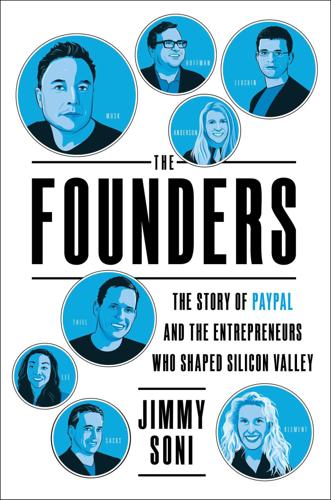
The Founders: The Story of Paypal and the Entrepreneurs Who Shaped Silicon Valley
by
Jimmy Soni
Published 22 Feb 2022
If Thiel were to flourish in this arena, he believed his firm needed the right address, namely on Sand Hill Road in Menlo Park, the home of Silicon Valley’s preeminent venture capital firms. Thiel put Ken Howery on the hunt for office space—Howery’s first Thiel Capital assignment. It wasn’t an easy one. With the internet land grab underway, Sand Hill Road’s low-slung buildings had waiting lists and leased for sums higher than Manhattan offices with sweeping views of Central Park. Howery traversed Sand Hill Road by foot, hoping in-person solicitations might generate leads. After a frustrating day of rejections, he came to his final stop—3000 Sand Hill Road—where he saw an older gentleman trimming the hedges.
…
And unlike other owners, Musk drove the car to work—and declined to insure it. As Musk drove Thiel up Sand Hill Road in the F1, the car was the subject of their chat. “It was like this Hitchcock movie,” Thiel remembered, “where we’re talking about the car for fifteen minutes. We’re supposed to be preparing for the meeting—and we’re talking about the car.” During their ride, Thiel looked at Musk and reportedly asked, “So, what can this thing do?” “Watch this,” Musk replied, flooring the accelerator and simultaneously initiating a lane change on Sand Hill Road. In retrospect, Musk admitted that he was outmatched by the F1. “I didn’t really know how to drive the car,” he recalled.
…
“We got some metal numbers from a hardware store and nailed them to the outside wall,” Howery recalled, “so it looked a little less like a closet.” In lieu of windows to connect them to the outdoors, Ford gifted his new tenants two wildlife posters to gaze at. * * * By 1998, Thiel Capital had an associate and a Sand Hill Road “office,” and it had begun making technology investments. One of its earliest start-up bets: an investment in a company started by a promising University of Illinois graduate named Luke Nosek. Following graduation, Nosek had trekked to California and crashed on couches as he got situated. Gregarious as ever, he snagged invites to the Valley’s countless dot-com parties.
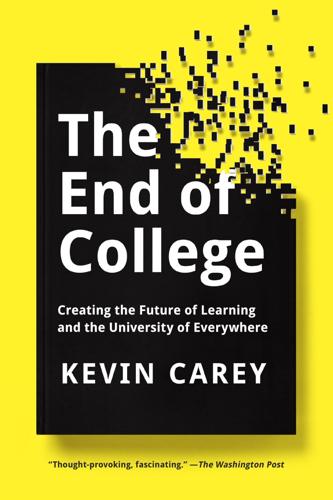
The End of College: Creating the Future of Learning and the University of Everywhere
by
Kevin Carey
Published 3 Mar 2015
Apple’s initial public offering in 1980 valued the company at over $1 billion, making instant millionaires of hundreds of employees and investors and establishing Silicon Valley as the source of not just innovation but dramatic wealth. Venture capitalists looking for the next Apple began setting up shop on a winding stretch of asphalt a few miles from Stanford University called Sand Hill Road. Meanwhile, ARPANET continued to expand. By 1995 it had been replaced by the Internet, which was no longer restricted to academic and military uses. That was the year that a recent graduate of the University of Illinois at Urbana-Champaign named Marc Andreessen founded the Web browser company Netscape, based on the Mosaic software program he had helped develop.
…
It was a belief system in which people were not just augmented but liberated by technology—a place where people could discard the compromises and confusions of human living and build something more rational and enlightened in their place. — NETSCAPE WAS QUICKLY overwhelmed by Microsoft, and Andreessen went from entrepreneur to venture capitalist, setting up shop on Sand Hill Road. It was clear to him and the other VCs where the next great fortunes would be made. “Software,” Andreessen wrote in a 2011 Wall Street Journal op-ed, “is eating the world.” By allowing people to purchase computer processing and storage services remotely, over the Internet, instead of investing in expensive hardware, the “cloud” had made it incredibly cheap to start new software businesses.
…
Under the elective system, the university doesn’t need to concern itself with how exactly those transactions are conducted, which courses are offered, or whether they’re any good. That’s up to the buyer and seller. The hybrid university just used the best available technology—printed books and air-conditioned lecture halls with microphones—to build a platform, and took a percentage of every sale. The money guys out on Sand Hill Road understood all of this. The hard part was bypassing all of the regulatory and public subsidy barriers that had been built around the cathedrals of learning, and overcoming the ingrained cultural belief that only colleges and universities as we know them today can provide a true higher education.
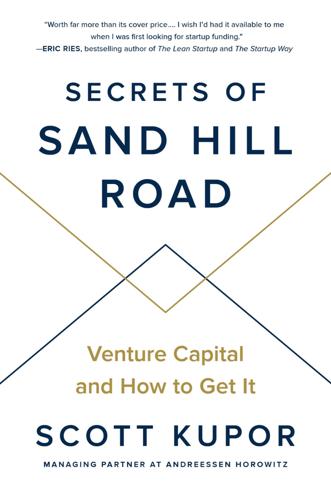
Secrets of Sand Hill Road: Venture Capital and How to Get It
by
Scott Kupor
Published 3 Jun 2019
It’s leading us into a fairer, more robust future, and I can’t think of a wiser person to take us there. Eric Ries, author of The Lean Startup and The Startup Way Introduction I am writing this book from my office on Sand Hill Road, the hallowed Silicon Valley street that holds as much promise for entrepreneurs as Hollywood Boulevard does for actors, Wall Street does for investment bankers, and Music Row does for country music artists. And, as with most of the storied streets, it’s not much to write home about—Sand Hill Road is a drab collection of modest, low-rise office buildings, upstaged by its much more famous neighbor, Stanford University. But I’m not writing it from on high.
…
In Trados We Trust 14. Difficult Financings: When Bad Things Happen to Good People 15. Exit Stage Left (The Good Kind) Conclusion: The World Is Flat Appendix: Sample Term Sheet Acknowledgments Notes Index About the Author FOREWORD Scott Kupor’s Secrets of Sand Hill Road: Venture Capital and How to Get It is motivated by the desire to democratize opportunity. It demystifies venture capital, laying out how this crucial part of the startup ecosystem works for anyone who picks it up. It examines the VC startup life cycle from every angle, including how VCs decide where to invest, how to pitch, and all the many, many legal and financial details and players involved in forming and growing a startup.
…
The information about how to seek out and secure funding shouldn’t be limited to an elite club. Every startup is about a single idea, but taken together, all startups have a common purpose as well: to shape a better world for all of us. And a better world is one in which everyone is represented and served well by the companies and systems we create. That’s why Secrets of Sand Hill Road is so valuable, and so timely. It’s for people interested in venture capital, of course, but it’s also for anyone who cares about the ability of the US to remain competitive, create new jobs, and continue on the path of economic growth. Those people include policy makers, academics, government officials in the US and elsewhere, civic leaders in startup hubs around the country and globe—who are already helping to democratize startups geographically—and people who work in corporate innovation (who can look to the VC world for inspiration on how to fund and grow projects within their organizations).
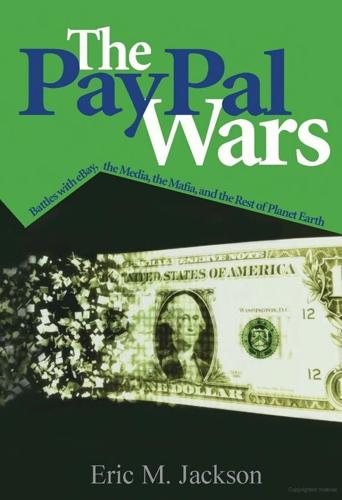
The Paypal Wars: Battles With Ebay, the Media, the Mafia, and the Rest of Planet Earth
by
Eric M. Jackson
Published 15 Jan 2004
If “world domination” was to be the eventual outcome, Peter realized camaraderie and teamwork were necessary ingredients. He scheduled an afternoon for the company’s holiday offsite party so employees could relax and bond away from the office before making a final pre-holiday push. Employees caravanned over from the office to the party, held at a meeting facility on Sand Hill Road in adjacent Menlo Park. For anyone not familiar with the reference, Sand Hill is to venture capital what Wall Street is to the stock market. A broad, ambling road in the undeveloped foothills behind Stanford University, Sand Hill houses many of Silicon Valley’s top venture capital firms and provided four-fifths of the funds that poured into California startups during the late 1990s.
…
The directors acknowledged many of the problems cited by the dissident officers, but some of them hedged on giving the Confinity side of the company effective control by returning Peter to power. Max and Peter held fast to their position, though, and after breaking for lunch the duo traveled to the Sand Hill Road offices of Peter’s hedge fund to resume the call. Upon arriving, though, they realized that the office lacked a speakerphone, prompting Max to rig Peter’s fax machine to serve as a makeshift substitute. The fax-speakerphone somehow worked, and when the call resumed Confinity’s founders continued to press their demands.
…
Rafe Needleman from The Red Herring had earlier named Confinity his “catch of the day.” Now, in an article titled “Baby, You Can Crash My Car,” he mused about the delicious irony of an incident from March.14 Elon was giving Peter a ride to a meeting with Mike Moritz at Sequoia Capital’s office on Sand Hill Road in his now-famous McLaren F1. When he attempted to take a freeway off-ramp at a fast speed, his Formula One-caliber car launched into an airborne spin. It thudded to the earth adjacent to the ramp with both occupants dazed but miraculously unhurt, prompting Elon to exclaim, “Dude, that was intense!”
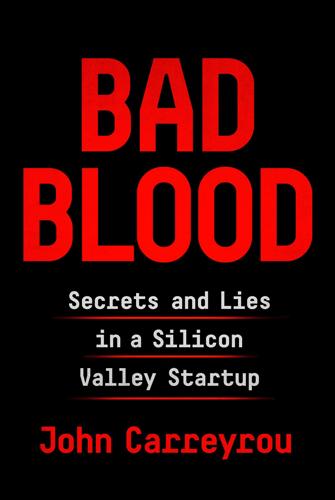
Bad Blood: Secrets and Lies in a Silicon Valley Startup
by
John Carreyrou
Published 20 May 2018
He was Elizabeth’s great-great-grandfather. Aided by the political and business connections of his wife’s wealthy family, Dr. Holmes established Cincinnati General Hospital and the University of Cincinnati’s medical school. So the case could be made—and it would in fact be made to the venture capitalists clustered on Sand Hill Road near the Stanford University campus—that Elizabeth didn’t just inherit entrepreneurial genes, but medical ones too. Elizabeth’s mother, Noel, had her own proud family background. Her father was a West Point graduate who planned and carried out the shift from a draft-based military to an all-volunteer force as a high-ranking Pentagon official in the early 1970s.
…
Since she would control the foundation, she would also control the voting rights associated with the new stock, which would increase her overall voting stake. Avie didn’t think it was in other shareholders’ interest to give the founder more power. He objected. Two weeks later, he received a call from Don asking if they could meet. Avie drove to the old man’s office on Sand Hill Road. Elizabeth was really upset, Don informed him when he got there. She felt he was behaving unpleasantly during board meetings and didn’t think he should be on the board anymore. Don asked if he wanted to resign. Avie expressed surprise. He was just fulfilling his duties as a director; asking questions was one of them.
…
In a way, he couldn’t afford not to: Todd was the son-in-law of one of Theranos’s investors, the venture capitalist B. J. Cassin. Cassin and Lucas were longtime friends. They had both invested in Theranos at the same time, during the startup’s Series B round in early 2006. Lucas convened an emergency meeting of the board in his office on Sand Hill Road. Elizabeth was asked to wait outside the door while the other directors—Lucas, Brodeen, Channing Robertson, and Peter Thomas, the founder of an early stage venture capital firm called ATA Ventures—conferred inside. After some discussion, the four men reached a consensus: they would remove Elizabeth as CEO.
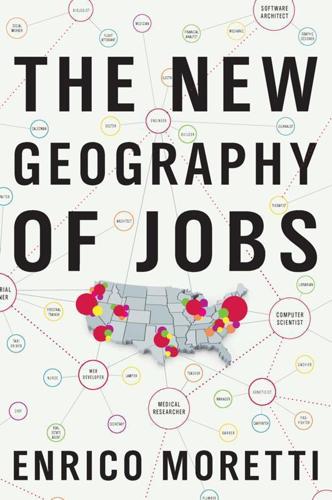
The New Geography of Jobs
by
Enrico Moretti
Published 21 May 2012
Every morning on my way to work, I would drive along Sand Hill Road in Menlo Park. Sand Hill Road contains the largest concentration of venture capital firms in the world. All major VC firms are located there, including the mythical Sequoia Capital and Kleiner Perkins Caufield & Byers, early backers of the most iconic startups in the history of high tech: Google, Apple, Amazon, Oracle, Yahoo, YouTube, PayPal, Netscape, and Cisco. I often saw young entrepreneurs with big dreams entering one of those low-rise buildings, presumably to pitch their ideas. Those low-rises on Sand Hill Road are where venture capitalists determine the future of commercial innovation.
…
Jose Luis Agell, who leads the business development of a Spanish startup called 3scale Networks, based in both Barcelona and California, says that “it is tough to get funding as a foreign company.” People have remarked for decades that one of the secrets of the success of Silicon Valley is its deep and articulated venture capital base. But what does proximity have to do with funding? Why, in a world of fast communication and cheap plane tickets, should venture capitalists on Sand Hill Road favor startups near them? Bill Draper has the answer. He is one of the most experienced venture capitalists in Silicon Valley, with forty years on the job. In his view, money is only one of many things that venture capitalists provide to startups. “There’s a lot of support, a lot of team building, a lot of organization, and relationships between entrepreneurs and venture capitalists that are key in making a successful startup,” he said in a recent interview.

Lab Rats: How Silicon Valley Made Work Miserable for the Rest of Us
by
Dan Lyons
Published 22 Oct 2018
They seem to believe that some magic elixir exists here, some recipe for innovation that floats in the air and can be absorbed if you drive around with your windows open, smelling the eucalyptus trees. They see people getting rich on things they don’t even understand. Blockchain? Ethereum? Initial coin offerings? So they fly out and have drinks at the Rosewood Hotel on Sand Hill Road in Menlo Park, where venture capitalists hang around, as do expensive “companions,” many with Eastern European accents. They eat lunch at the Battery, a members-only private club for social-climbing parvenus in San Francisco. They wangle an invitation to a Bitcoin party and rub shoulders with the scammers, hustlers, Ponzi schemers, and obnoxious knobs who are trying to cash in on a modern-day tulip mania based around a cryptocurrency that Warren Buffett describes as “rat poison squared.”
…
CHAPTER THIRTEEN KAPOR CAPITAL: CONSCIOUS CAPITALISTS Kapor Capital is based in Oakland. That one fact says a lot about what makes this venture capital firm different from all of the top VC investors in Silicon Valley. Most of the VC powerhouses have their headquarters forty-five miles away, on a two-mile stretch of Sand Hill Road in Menlo Park, California. They are nestled into sleepy, leafy little office parks, clustered right next to one another, in dead-quiet, understated Northern California buildings. To visit them, you drive way up in the hills above Stanford University, where the parking lots are filled with Teslas, birds chirp in the eucalyptus trees, and skinny spandex-clad techies zip around on exotic carbon-fiber racing bikes that cost more than what some people pay for a car.
…
For a long time black people were the biggest ethnic group in Oakland, and while demographics have shifted recently, African Americans still represent about a quarter of the population. By setting up shop here in Oakland, Mitch Kapor and Freada Kapor Klein, the husband-and-wife team behind Kapor Capital, were sending a message—they were not part of that other world. Unlike those big venture capital firms over on Sand Hill Road, the Kapors are not trying to make as much money as possible by any means necessary. Instead, they have a social mission. Some call it impact investing. Or diversity-focused investing. Or mission-driven versus money-driven investing. The Kapors call their model “gap-closing investing,” meaning they will only invest in companies that are “serving low-income communities and/or communities of color to close gaps of access, opportunity, or outcome,” Freada says.

The Upstarts: How Uber, Airbnb, and the Killer Companies of the New Silicon Valley Are Changing the World
by
Brad Stone
Published 30 Jan 2017
When he spoke to the founders a few days later, they had already taken his advice and been to the Zappos headquarters in Las Vegas; they’d toured the company’s tchotchke-lined offices, where employees stood in unison to warmly cheer guests, and met CEO Tony Hsieh and his COO, future Airbnb board member Alfred Lin. Amazon had acquired Zappos in June 2009, but its slightly madcap vibe remained intact. Around this time, Airbnb returned to Sand Hill Road, the seat of the venture capital industry, to raise more money. Blecharczyk’s productive Facebook and Google ads were expensive, and Chesky had to keep the coffers full. Seeing the company’s growing market opportunity, McAdoo wanted Sequoia to supply the entire round of funding itself, but Chesky had learned at Y Combinator to be wary of giving too much control to venture capitalists, and he insisted on bringing in another firm.
…
Seeing the company’s growing market opportunity, McAdoo wanted Sequoia to supply the entire round of funding itself, but Chesky had learned at Y Combinator to be wary of giving too much control to venture capitalists, and he insisted on bringing in another firm. He found a willing investor in Reid Hoffman, the co-founder and chairman of LinkedIn and a partner at Greylock Capital. Hoffman says he was skeptical at first. Ugh, couch-surfing is not that interesting, he thought. Then Chesky met him at Greylock’s offices on Sand Hill Road over a weekend and spun a compelling vision of Airbnb as the largest hotel chain in the world but one without the expensive burden of maintaining actual buildings or hiring workers like bellhops and maids. “The idea of essentially transforming this massive illiquid asset that existed in most of our lives—the room, an apartment, a house, a unique space—into something that could actually be in an essentially peer-to-peer marketplace is just one of the killer ideas,” Hoffman said.
…
Andreessen liked to say that the goal of their firm, Andreessen Horowitz, was to identify the fifteen or so tech startups every year that actually mattered and back as many of them as possible.13 The firm took a long look at Airbnb and whiffed. “Marc struggled with the idea that this would be mainstream,” Chesky says. Andreessen Horowitz would rectify the oversight the following year and lead the Series B, a less lucrative but still hugely profitable investment. Another venture capitalist that passed was across Sand Hill Road at a firm called August Capital. Howard Hartenbaum, an investor in the online video-calling service Skype, met with Chesky repeatedly that fall and took the founders to dinner at Alexander’s Steakhouse near the new office in San Francisco. Chesky impressed Hartenbaum; he seemed to have poise, intelligence, and a fierce determination to succeed.
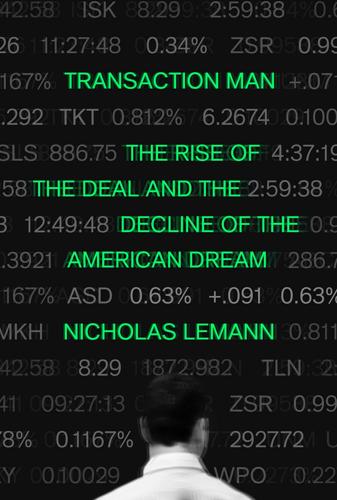
Transaction Man: The Rise of the Deal and the Decline of the American Dream
by
Nicholas Lemann
Published 9 Sep 2019
By the twenty-first century, Silicon Valley venture capital was a small industry with an unofficial headquarters, Sand Hill Road, a strip of low-rise office parks across the street from the Stanford campus, where dozens of firms entertained thousands of pitches from people who wanted to start technology companies. Arthur Rock, by now retired, looked at the venture capital industry with bewilderment. Rock worked in San Francisco’s financial district, the traditional West Coast outpost of American finance; he came to work every day in a suit and tie, and often had lunch at his club. On Sand Hill Road, the style was ferociously casual, as if there were a competition for who could come across as the most low-key or the most culturally opposite to the old Organization Man.
…
And nobody seemed to want to invest in anything physical anymore, like chips or computers, only in software—instruction sets. Nobody’s idea seemed to require conventional plants and equipment; or distribution systems, supply chains, or physical products. Everything happened on the Internet. The ideal that Sand Hill Road devoted itself to pursuing was a company that would turn out to be like Facebook, which had, only a few years after its founding, a total value on the stock market of more than $400 billion, with fewer than twenty-five thousand employees. General Motors by now was worth only $50 billion, and even in its reduced and post-glorious state, it still had more than two hundred thousand employees.
…
Ever since the sale of PayPal, Hoffman had been actively investing in start-ups, usually as the “angel investor”—the first person to write a check and therefore the investor likely to get the highest return if the company succeeded. It was through this part of his life that he had met Zuckerberg. Just before LinkedIn went public, Hoffman joined Greylock, one of the top-tier venture capital firms on Sand Hill Road, as a partner. He began spending part of every week at Greylock and part at LinkedIn, where he worked in an office next to Jeff Weiner’s. This put him more formally in the position he’d been in informally for years, with as much access to deal flow, the lifeblood of Silicon Valley, as anybody.
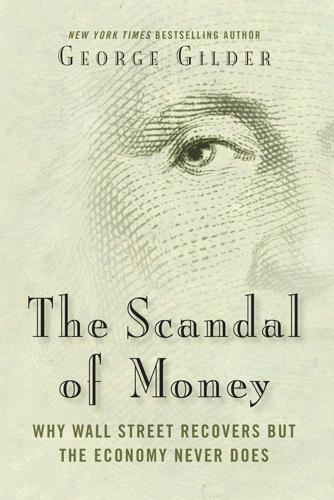
The Scandal of Money
by
George Gilder
Published 23 Feb 2016
From Apple to Google, a few public giants dominate this private-company market since they are the only potential buyers. Within this confined space, every titan is more eager to purchase his start-up rivals than to compete with them. Whitewashed and fitted out with shiny horns, the aspiring “unicorns” shuffle through the corrals of Sand Hill Road and the carrels of Cupertino, seeking sustenance from smart-set venture capitalists and international tech tycoons. With their high-calorie burn rates and weak revenues, these creatures survive on a continued boom in reveries. The tycoons swipe left or swap right, sending the nags off to the races or back to the stables—or perhaps the glue factory.
…
Main Street: The symbol of the real economy of workers paid hourly or monthly and sealed off from the circular loops of WALL STREET moneymaking. Perhaps the street where you live, Main Street is the site of local businesses and jobs. Silicon Valley: A symbol of the high-tech entrepreneurial economy, centered in Santa Clara County, California, and largely funded by venture capital from SAND HILL ROAD in Palo Alto and Menlo Park. The high-tech economy is increasingly based on INFORMATION THEORY, which governs its infrastructure of communications and computing, particularly software. Silicon Valley sustains both MAIN STREET and WALL STREET by supplying them with new technology. Through Wall Street, Silicon Valley provides Main Street with opportunities for sharing in the equity of the ascendant sectors of the world economy.
…
In recent years, Silicon Valley has suffered from the HYPERTROPHY OF FINANCE, become bloated with MONOPOLY MONEY, and been bent by controls from the Wall Street–Washington axis. Like Wall Street, Silicon Valley has bypassed Main Street, which has remained trapped in its pedestrian time-based compensation and mindless index fund investments. Sand Hill Road: The arboreal abode of California venture capitalists and their “unicorns,” stretching from the Camino Real near Stanford to Route 280 and into the clouds and wealth of Woodside and SILICON VALLEY. Expansionary fiscal and monetary policy: The attempt by central banks to stimulate economic activity by selling government securities to pay for a governmental deficit.
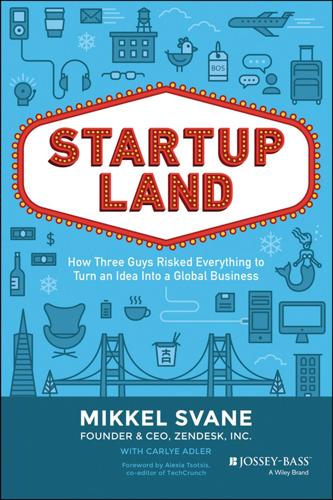
Startupland: How Three Guys Risked Everything to Turn an Idea Into a Global Business
by
Mikkel Svane
and
Carlye Adler
Published 13 Nov 2014
I’d also read about how people passed out and how the police were called. It sounded like fun. The party had grown so big that it was now held on VC firm August Capital’s giant outdoor deck on Sand Hill Road in Menlo Park. I had never been to Sand Hill Road. I knew it was 69 Page 69 Svane c04.tex V3 - 10/28/2014 7:36 P.M. S TA R TU P L A N D renowned, but didn’t know what to expect. By this point I did know that I didn’t know anything about how the Valley worked. I had been in the city a few days for meetings and drove down to Sand Hill Road. This was the first time I really experienced the climate difference between San Francisco and Silicon Valley. San Francisco had been cold and foggy, but thirty minutes south on 280 it was 20 degrees warmer, and in the gardens, hummingbirds flew around.
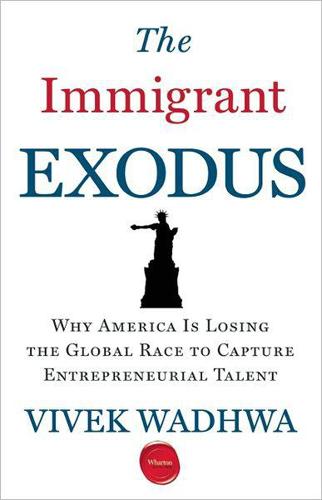
The Immigrant Exodus: Why America Is Losing the Global Race to Capture Entrepreneurial Talent
by
Vivek Wadhwa
Published 1 Oct 2012
Jin also lectures at a number of leading Chinese universities and life sciences conferences, providing valuable intellectual capital to Chinese scholars who, until recently, had to travel to the United States to study with professors of that caliber. Jin has recruited other expat Chinese scientists to return to their country of birth and work as researchers and scientists. Beyond Sand Hill Road Immigrant entrepreneurs now have many options besides the United States. For the report “America’s Loss Is the World’s Gain”, which was published by Kauffman Foundation in 2008, my research team surveyed 1,203 Indian and Chinese immigrants who had worked in or been educated in the United States and later returned to their home countries.22 Our inquiries found that while immigration policies had caused some returnees to depart, the most significant factors in their decision to return home were career opportunities, family ties, and quality of life.
…
Table of Contents Acknowledgments Contents Introduction Back to School The Immigrant Exodus In This Book My Commitment Chapter 1: Why the Future of America Depends on Skilled Immigrants The Economic Impact The Innovation Impact The Shifting Tide Chapter 2: The Rise and Decline of the Immigrant-Powered Startup Machine The Immigrant Entrepreneur Tide Peaks Chapter 3: The Innovator’s Dilemma: Leaving America for Greener Pastures Beyond Sand Hill Road The Decline of Silicon Valley Entrepreneurship: Why the IIT Grads Are Going Home Chapter 4: H-1B Visas and Immigration Limbo How the H-1B Harms the US Economy and Sours Immigrants on America The History of the H-1B Visa The Program Nobody Likes: Death Threats and H-1Bs Good for America, Good for Innovation First-Class Minds, Second-Class Citizens Chapter 5: How the World Is Trying to Steal Silicon Valley’s Thunder The Race to Capture Entrepreneurial Talent and Skilled Immigrants Chapter 6: Seven Fixes to Slow the Immigrant Exodus 1.

Microserfs
by
Douglas Coupland
Published 14 Feb 1995
* * * unraveled brown cassette tape on the freeway Staples CK-one PIN number basketball hoop If we were machines, we'd have the gift of being eternal and I want you to understand TUESDAY Everybody's flu-ridden today except for Ethan and me. Ethan asked me to accompany him up to Electronic Arts in San Mateo, and then down to a VC meeting out at the Venture Capital mall at the corner of the 280 and Sand Hill Road - in his ruby red Ferrari. "The Ferrari is like a rite of passage here for new money. You buy one at 26, get it out of your system, flip it for a gray Lexus or Infiniti, and then you drive gray sedans the rest of your life. I keep mine because I can't afford anything else at the moment, and I can't afford the capital gains taxes if I sold it.
…
And this got me thinking of all the people at IBM, and I got to thinking about Dad and . . . * * * This is my first-ever VC meeting. Ethan has attended hundreds of them during his Valley career. Apparently, the Monday Partner's Meeting is a Silicon Valley tradition, according to Ethan. They mostly occur up at the venture capital "mall" at the corner of Sand Hill Road and Interstate 280. Monday is when partners agree to agree. And Tuesday is when the decisions are acted upon. Fifteen years in the business have loaned Ethan a rote tour-guidish quality. Humming up the 280, he further briefed me on the situation: "Initial presentations are made by capital seekers.
…
* * * Later on in the day, our lives devolved into an Itchy & Scratchy cartoon. We all decided we needed sunlight - we've all been working so hard lately and our internal clocks are somewhere in the Eastern Bloc nations - so we went for a drive in the Microbus up through Stanford, up to the linear particle accelerator that passes underneath the 280 by the Sand Hill Road exit. It was the core team from the old Redmond geek house: Karla, Michael, Todd, Bug, and Susan - as well as Ethan. Dusty didn't come because everything makes her sick these days. She's set her workstation up by the bathroom door. She craves instant "Mr. Noodles," and is constantly sending Todd out for food runs to Burger King.
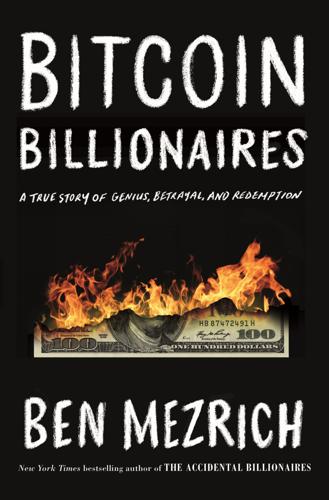
Bitcoin Billionaires: A True Story of Genius, Betrayal, and Redemption
by
Ben Mezrich
Published 20 May 2019
And there was no greater place to build the future than Silicon Valley. It was more than a place filled with entrepreneurs toting pitch decks: Silicon Valley was a living, breathing organism. It had a circulatory system, represented by the big name VCs in their low-rise California ranch-style office parks, lined up along nearby Sand Hill Road: first settled by Kleiner Perkins in 1972, the proverbial “Sand Hill” was now home to the likes of Sequoia, Accel, Founders Fund, and Andreessen Horowitz, to name a few. Sand Hill pumped cash into the veins of fetal startups, helping them uncurl their tiny fingers and toes. It had its vital organs, the megacompanies that had taken that lifeblood and grown viable and strong: Google, up in Mountain View, with its massive campus called the Googleplex, sixty buildings teeming with engineers and software developers and AI experts; Apple in Cupertino, on its way to becoming the most valuable company in the world, in the midst of constructing a new headquarters built to look like a massive spaceship that had crashed down to Earth; Facebook, of course, which had first opened its doors just blocks away from where Cameron was standing, and was now located at 1 Hacker Way, spitting out newly minted millionaires every week, inflating the local housing market to the top of the national charts and making the zip codes around Sand Hill the wealthiest in the United States; Intel and Tesla, and Twitter, on and on and on, each as important to the system as a liver or a kidney or a lung.
…
Tyler glanced at his brother, who seemed as focused on the salesman and his pitch as he was. This was something that neither of them had ever heard of before; not in any of the startup pitch decks they’d been sent, not during any of those Silicon Valley meetings. Not at the Oasis, not anywhere on Sand Hill Road. It wasn’t clear, yet, how this … cryptocurrency worked—or how math was involved. But a system that didn’t rely on trust, that didn’t involve an authority—it seemed too good to be true. “Tyler! Over here! I thought I saw you guys at Pacha last night! Come join us for a drink!” Tyler looked past Azar, in the direction of where the voice was coming from, and recognized a group of Americans waving at him from four daybeds down.
…
To Cameron, this introduction to Charlie and his company was part funny, part WTF. The kid was something else; he was clearly smart and scrappy but a total whirling dervish. One thing was for sure, this wasn’t some startup in the Valley looking to court seed funding from the cabal of pleated khaki pants on Sand Hill Road—this was different. “Bitcoin, the digital currency, with a lowercase b,” Voorhees said, pointing to the miniature barrel. “As Charlie implied, you send bitcoin with a lowercase b from your digital wallet to the address embedded in the QR code printed on the side of the can. It’s that simple, but that’s only a tiny part of the story.”

Life After Google: The Fall of Big Data and the Rise of the Blockchain Economy
by
George Gilder
Published 16 Jul 2018
Google networks, clouds, and server farms could be said to have already accomplished much of it. Google was never just a computer or software company. From its beginning in the late 1990s, when its founders were students at Stanford, it was the favorite child of the Stanford Computer Science Department, married to Sand Hill Road finance across the street, and its ambitions far transcended mere business. Born in the labs of the university’s newly opened (Bill) Gates Computer Science Building in 1996 and enjoying the patronage of its president, John Hennessy, the company enjoyed access to the school’s vast computer resources.
…
(Stanford had cashed in those shares for $336 million by 2005). Google moved out of Stanford in 1999 into the Menlo Park garage of Susan Wojcicki, an Intel manager soon to be CEO of YouTube and a sister of Anne, the founder of the genomic startup 23andMe. Brin’s marriage to Anne in 2007 symbolized the procreative embrace of Silicon Valley, Sand Hill Road, and Palo Alto. (They divorced in 2015.) By 2017, Google’s own computer scientists had authored more of the world’s most-cited papers in the subject than had Stanford’s own faculty.1 Google’s founders always conceived of their projects in prophetic terms. An eminent computer scientist, Page is the scion of two Ph.D.s in the subject, and no one will deny, not even his mother, that his “PageRank” paper behind Google search is better than any doctorate.2 His father, Carl, was an ardent evangelist of artificial intelligence at Michigan State and around the family dinner table in East Lansing.
…
Hence the amazing performance in 2007 and 2008. Without relying on the outsized leverage that brought down other funds, Renaissance thrives by processing more data, building larger Markov chains, ferreting out more correlations and probabilities, and executing more trades than anyone else. A venture capitalist on Sand Hill Road in Palo Alto investing in an embryonic Google after acquiring intimate knowledge of its technology may make a thousand-fold return over five to seven years. A firm such as Renaissance might make a thousand trades in a day harvesting the tiniest anomalies. With modest leverage and relentless twenty-four-hour trading around the globe, Medallion could make far more money than a venture capitalist without knowing any details about the technologies and business plans behind the equities, currencies, or securities traded.
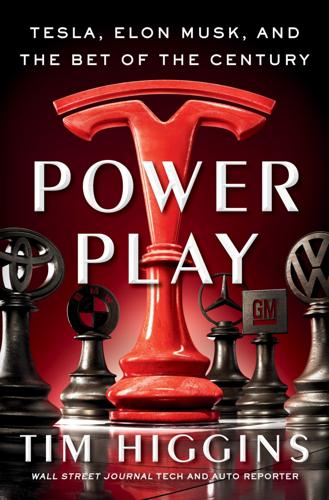
Power Play: Tesla, Elon Musk, and the Bet of the Century
by
Tim Higgins
Published 2 Aug 2021
Musk wanted to go deep into energy physics, convinced he could make radical advances in battery technology, only to abandon his studies—two days later—ahead of the gold rush era of the late 1990s dot-com boom. Straubel listened as Musk, dressed in black with his shirt unbuttoned like he was at a European nightclub, elaborated on his origin story. He said few venture capitalists on Sand Hill Road at the time had shared his vision for the internet. The fastest way to make money, Musk had figured, would be helping existing media companies convert their content for the World Wide Web. He and his younger brother, Kimbal, founded Zip2 to do just that, eventually attracting attention for a first-of-its kind Web program that gave turn-by-turn map directions between two locations—an idea that would later become ubiquitous.
…
There, the idea of SpaceX would take root in his conviction that he could create reusable rockets and cut the cost of space travel to a fraction of what the industry was spending. Musk threw himself into the world of aeronautics, developing a reputation as a fantastically wealthy eccentric willing to put his money on unusual bets, the kinds that the venture capitalists of Silicon Valley’s famed Sand Hill Road shied away from. Beyond SpaceX and Tesla, Musk would later encourage his cousins, Lyndon and Pete Rive, to create a company to sell solar panels, an idea that melded well with his idea of where he thought Tesla might go. He imagined a world where a customer’s solar panels would charge their electric Tesla cars—a combination that would create a truly zero-emissions system.
…
A new start of production was targeted for 2007. They were overbudget and behind schedule. Board member Laurie Yoler was among those encouraging Musk to seek money outside his own pockets and his close network of wealthy friends. It was one thing for an eccentric rich guy to fund a vanity project. If some of the big names on Sand Hill Road bought in, it would give the company not just money but legitimacy—something it sorely needed, particularly when it came to recruiting employees and courting suppliers. Investors would want to know what was next, after the Roadster. Tesla needed to be more than just a one-off carmaker if it were to attract the kind of cash it sought.
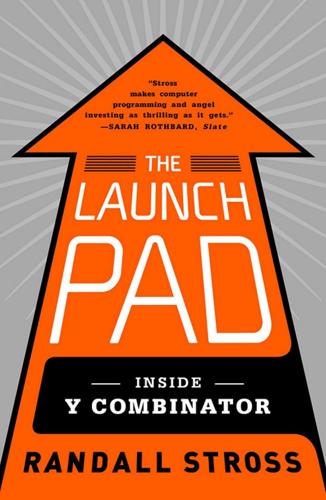
The Launch Pad: Inside Y Combinator, Silicon Valley's Most Exclusive School for Startups
by
Randall Stross
Published 4 Sep 2013
Word about their startup has been circulating among angel investors and venture capitalists in advance of Demo Day. They have been spending recent days in a blurry succession of meetings with prospective investors, including some of the Valley’s leading venture capitalists on Sand Hill Road. The informality of YC’s own screening process when interviewing finalists and YC’s hacker culture, valuing technical skill above all else, does not prepare founders for the starchy culture of Sand Hill Road. Before his meetings, McCay had thought the venture capitalists would look past a rough presentation and lack of polish, and now he sees he was wrong. Appearances clearly do matter. So too does preparation.
…
There was nothing about the facilities or the location that resembled a sylvan college campus. The street happened to be named Pioneer Way and it was located in a light industrial area, a forlorn triangle bordered on two edges by highways. It was about a twenty-minute drive from where the posh offices of venture capitalists on Sand Hill Road were concentrated, near Stanford, on the leafy west side of Menlo Park. The neighborhood of Pioneer Way belonged to a separate galaxy. YC sat among small manufacturers, and auto repair and body shops. The architecture in the neighborhood was strictly no-frills utilitarian—a good setting for lean startups.
…
See also Kalvins Ries, Eric, 55, 77, 147 RocketMail, 151 RocketSpace, 136 Rolnitzky, David, 89–90, 134 Ruby, 31, 124, 148, 193 Rushkoff, Douglas, 267n1 Russell, Andy, 127–28 Sacca, Chris, 57, 61 Said Business School, 57 Salesforce.com, 31, 204 Salt Lake City, UT, 42 San Diego, CA, 20 San Francisco, CA, 41, 54 CampusCred, 111 hipsters, 36, 211 living in, 9, 35–36 Mission, 165 MobileWorks, 90 MUNI, 153 rideshare listings, 120–21 Russian Hill, 165 South of Market, 163 Standard Chartered Bank office, 90 Taylor Street, 223–24 Y Scraper, 223–24 YC founders in, 58, 71, 133–34, 141, 142, 163, 229 San Francisco Gray Line, 1 Sand Hill Road, Menlo Park, 41–42, 202–3 Santa Barbara, CA, 20 Sapient, 29 Say It Visually, 101–2 Schmidt, Geoff, 234 Science Exchange, 46, 163, 171–82 Scott, Riley, 51 Scribd, 166, 224, 230 Seattle, WA, 71 Securities Act of 1933, 205 Seibel, Michael, 142, 144, 228, 229 Sequoia Capital, 3, 66, 74, 86, 87, 153, 157 Seyal, Omar, 66, 151 Shah, Sagar, 110–14, 117, 136–37 Sharpie, 165 Shazam, 81 Shear, Emmett education, 15 Kan, Daniel, 229 Kan, Justin, 162–63 Kiko, 14, 16, 23 Justin.tv, 141–44 Rap Genius, 201 Twitch.tv, 144–47, 228 2005, summer batch, 14–16 YC partner, 63, 150 Shen, Jason, 68, 69, 163–64, 266n3 AnyAsq, 166 Art of Ass-Kicking blog, 9 Demo Day, 211 finalist interview, 10 Prototype Day, 120–21 Rehearsal Day, 187–88 Shirky, Clay, 105 Shpilman, Felix, 88, 222 Siberian ginseng, 134 Sift Science, 70–76, 121, 134, 138, 210 Silicon Valley Australian view of, 267n6 failure, forgiving of, 220 image, 114 merit over seniority, 60 programmers, 212 startups, 56–57, 58–59 Taggar, Harj, 58–60 tours, 1 uniqueness of, 237, 238 women in, 54 YC, 40 Silicon Valley Comes to Oxford, 57 Silver Tail, 54 Sims, Zach, 124–25, 147–49, 192–93, 194–96, 215–16, 227 Singapore, 154, 238 Skype, 17, 38, 124, 223, 265n1 Snapjoy, 43–44, 103, 130–33, 186–87, 194 Socialcam, 144, 147, 228 software is eating the world, 1–2, 6, 216, 238, 239 South Africa, 17 Spain, 238 Spanish (language), 213 Splitterbug, 123, 187, 209 Square, 91 Stamatiou, Paul, 219 Standard Chartered Bank, 90 Stanford Artificial Intelligence Lab, 47 Bing Nursery School, 52 computer science students, 47, 60, 66, 256n6 dorms, 52 Google, 86 graduates of, 9, 29, 68, 91, 214, 261n1, 266n3 photo books, 10 Stanford Daily, 163 students, current, 213 Start Fund, 43, 95, 137, 169, 219, 233 Andreesen Horowitz, 230 beginnings, 4, 28 Clerky, 126 Graham, Paul, 35, 87–88 Science Exchange, 179 Shpilman, Felix, 88 Tagstand, 154 Steiner, Chris, 51, 191, 208–9, 264n2 Stigsen, Alexander, 51, 103 Stripe, 64–66 Stypi, 194 Su, Andy, 52–53 Sunnyvale, CA, 125, 130, 149 SuperValu, 209 Suzman, Ted, 164–65, 224 Suzman, Tim, 164–68, 223–24 SV Angel, 137, 219, 233 Andreesen Horowitz, 230 Clerky, 126 Conway, Ron, 88–89 Lee, David, 88–89, 91 MongoHQ, 95 Science Exchange, 179 Stripe, 66 Tagstand, 154 Sweden, 168, 238 Swedish, 214 Taggar, Harj (Harjeet) AnyAsq, 166 Auctomatic, 60–63, 204 Boso, 57–58 coding, 58, 60 Kalvins/Ridejoy, 68 Rap Genius, 80–85, 127, 196 Sift Science, 71–75 Silicon Valley, 58–60 speaking style, 81 on startups, 59, 61, 66, 161–62 2007, winter, 58–61 YC partner, 62–63, 150, 166, 256–57n3, 263n13 Taggar, Kulveer, 151–60 Auctomatic, 60–62, 159, 204 Boso, 57–58 coding, 58, 60 Demo Day, 210, 264n1 Tagstand, 66 YC, 58–61, 66, 154, 160 Tagstand, 66, 151–60 Taiwan, 238 Tam, Chris, 98–100 Tamagotchi, 156 Tamplin, James, 134–36, 138 Tan, Garry Science Exchange, 171, 180–81 Tagstand, 151, 155 YC partner, 63, 64, 150 Tan, Jason, 71–76, 121, 134–36, 210 TapEngage, 187, 192, 209 Target, 169 TaskRabbit, 54 Tech Wildcatters, 41 TechCrunch, 93, 197 Codecademy, 195, 227 Snapjoy, 131 Socialcam, 147 women, 48 YC, 194 TechStars, 41, 42–44, 53, 169, 255n5–6, 255n10, 261n2 10gen, 30, 93 Thiel, Peter, 66, 140, 261n1 Thing Marks, 148 Thomas, Eric, 106, 108 TightDB, 51, 103, 223 Toontastic, 127–28 Topps, 152 Traf-O-Data, 16 Transition School, 15 Trott, Mena, 46 Tumblr, 147 Turkey, 17 Twitch.tv, 145–47, 228 Twitter, 57, 58, 91 Codecademy, 195, 227 Conway, Ron, 87 female users, 256n10 NowSpots, 168 Socialcam, 147 280 North, 64 UC Davis, 20 UCLA, 20 UC San Diego, 20 UC Santa Cruz, 20 UK, 17, 57, 59, 61, 184, 238 Union Square Ventures, 267n1 United Nations, 162, 214 University of Maryland, 39 University of Miami, 171 University of Southern California, 20, 88 University of Texas, Austin, 112 University of Washington, 15, 70, 71 U.S.
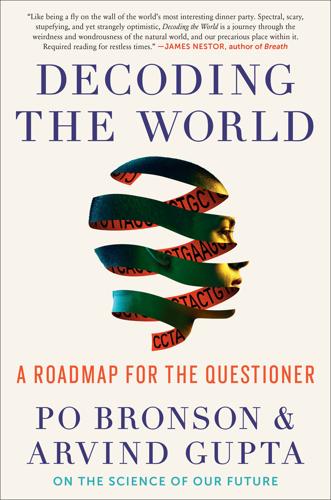
Decoding the World: A Roadmap for the Questioner
by
Po Bronson
Published 14 Jul 2020
And by his logic the Perfect Blue can be only in our minds, never matched by a color in the real world. I’m going to take a guess that no other venture capital firm in the world sits around debating the question of what would be a Perfect Blue. They probably don’t think of blue as a technology at all. A Perfect Blue is not an investment thesis on Sand Hill Road, where the mandarins of venture capital ply their trade. Federated artificial intelligence systems might be more like it (though federated learning is a thesis of ours, too). If they had to answer the question of what makes a blue “perfect,” they’d probably ask their kid. But talking about a Perfect Blue is exactly the sort of thing that happens at our firm.
…
Sam Harris, an influential blogger, tweeted a poll on February 1, 2016: “If cultured meat is molecularly identical to beef, pork, etc. and tastes the same, will you switch to eating it?” The reply stunned me. Eighty-three percent of almost fifteen thousand people said they would. This was a turning point. Once there was some market validation, however thin, investors and scientists began to take this movement seriously. Meanwhile, I hit Sand Hill Road (the road with all the fancy VCs lined up in a row) with a presentation on the future of food so they understood what we were doing. It started with a painting of a caveman in a loincloth spearing a bear while the bear was mauling his friend. It was an important slide because it showed the importance of protein.
…
The more we stand up for free speech and try to stick it to China, the more we’ll only be sticking it to ourselves. But stick it, still, we will do. We need to do a chapter about plants. People love plants Especially trees. Maybe sediment electrogens. How the soil is electrified. I used to want to live in Woodside, surrounded by trees. Well, when you go work on Sand Hill Road, it’ll be a short commute. … is it that obvious? I got a vibe when we were at their conference. We’ve just been talking. It’s nice to be wanted. Yeah. I don’t know if I’ll do it though. Leave all this? Would you have more money to deploy? Way way more. 24 How CRISPR Will Change the World Bloomberg Let’s just get this out of the way.

System Error: Where Big Tech Went Wrong and How We Can Reboot
by
Rob Reich
,
Mehran Sahami
and
Jeremy M. Weinstein
Published 6 Sep 2021
These days, the high-tech ecosystem is fueled by capital—the availability of money for investment in new companies—which creates nearly endless opportunities for building new businesses that disrupt the old economic order. In the early days of Silicon Valley, federal funding drove the development of the semiconductor industry, which laid the foundation for the development of personal computers. But federal funding was soon replaced by venture capital as a driving force in the valley’s growth. Sand Hill Road, just up the hill from Stanford, is ground zero for some of the most storied names in venture capital, with billions of dollars at the ready to invest in the next world-changing idea of a twenty-two-year-old down the hill. Though “venture capital” might evoke the stuffy world of finance, the venture industry fueling Silicon Valley has a decidedly technical mindset.
…
The Ecosystem of Venture Capitalists and Engineers Though engineers often develop the technical breakthroughs that can serve as the seeds for the formation of world-changing companies, the growth of those seeds into blooming companies relies on access to capital, the funding necessary to hire more talent, buy equipment, secure office space, and grow the business. For many companies, venture capitalists—VCs for short—are the source of that funding. Sand Hill Road, a street roughly six miles long, is home to more than forty venture capital firms. In 1972, Kleiner Perkins Caufield & Byers—now known as just Kleiner Perkins—opened its doors as the first VC firm on Sand Hill. In 1980, it hired John Doerr away from Intel, where he had internalized the concept of OKRs.
…
Finding such deals creates competition among VC firms to seek out and build relationships early with would-be entrepreneurs. It sometimes also leads to unexpected intrusions at lunch, as Mehran found out shortly before finishing graduate school. Out with a fellow graduate student for dim sum at a Chinese restaurant not far from Sand Hill Road, they were just finishing their meal when they were approached by a man in a suit whom neither of them recognized. He politely introduced himself and said, “I couldn’t help but overhear that the two of you were talking about search engines. If you decide to start a company, give me a call.” Then he slid his business card across the table.
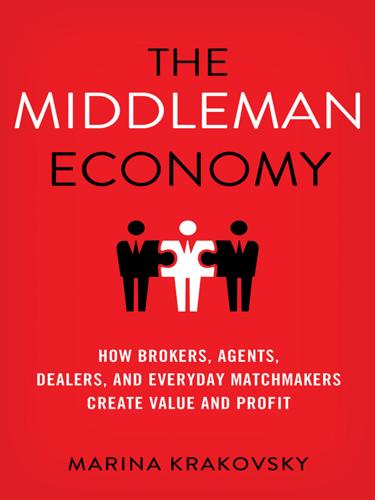
The Middleman Economy: How Brokers, Agents, Dealers, and Everyday Matchmakers Create Value and Profit
by
Marina Krakovsky
Published 14 Sep 2015
Anybody with an idea, a laptop, and an Internet connection can give it a go, and many do, leading to an abundance of entrants, many of them still living in college dorm rooms. Although these founders do eventually need to raise money to fuel growth, they have many more sources of funding beyond the big firms with posh offices along Menlo Park’s Sand Hill Road. Some need expert guidance and trusted connections as much as they need capital. VC firms have always provided a combination of all these services, but these services are increasingly becoming unbundled: as the competition among investors to back the next Facebook or Dropbox has intensified, the most promising entrepreneurs can pick and choose what they most want in an investor.
…
“When I was a kid, the tech industry was really geeks selling to geeks,” Maples recalls. “Then it was geeks selling to the rest of the world because the world is connected. But what Ann and I are seeing are new types of entrepreneurs emerging,” he says. “In the last decade, to be an entrepreneur you had to raise money, and Sand Hill Road had a preconceived idea of what a tech entrepreneur looked like—they were usually an early-twenties white dude, who was an alpha-geek computer hacker. And that was kind of the canonical person you’d invest in.” In B2B ventures, companies that sell products to other companies, the prototypical entrepreneur looked a little different, but it was still typically a he.
…
In B2B ventures, companies that sell products to other companies, the prototypical entrepreneur looked a little different, but it was still typically a he. “We believe that the low cost of starting a company is democratizing entrepreneurship itself,” Maples says, “and now entrepreneurs can emerge from any location and they can be any gender and any ethnicity, and so rather than a high priest on Sand Hill Road deciding what a start-up entrepreneur is, people can just do entrepreneurship, and whoever gets traction is an entrepreneur. That’s going to fundamentally change the nature of entrepreneurship and who starts companies and succeeds.” As entrepreneurship becomes accessible to more people and more different types of people, Maples says, he and Miura-Ko want to be accelerants of that trend; even in this climate, entrepreneurs need VCs for access to capital markets.

Troublemakers: Silicon Valley's Coming of Age
by
Leslie Berlin
Published 7 Nov 2017
Kleiner & Perkins had invested in a shoe-resoling business (Tred 2, whose founder, Rory Fuerst, would found Keen shoes three decades later), a motorcycle-cum-snowmobile (Snow Job), a medical device company (Andros Analyzers), and a nearly fail-safe minicomputer firm (Tandem Computers).VII Shortly before Swanson joined Kleiner & Perkins, the firm moved from 3000 Sand Hill Road, where Kleiner had had a private office before the partnership began, to the twenty-ninth floor of Two Embarcadero Center in San Francisco. The move had been Perkins’s idea. Other venture capital firms, such as Don Valentine’s Sequoia, were moving onto Sand Hill Road, which today is home to the largest concentration of venture capitalists in the Valley, if not the world. Perkins did not want other venture capitalists to see who he and Kleiner were taking to lunch, and, as he put it, “We didn’t want to be considered part of the flock.
…
How could inventions coming from throughout Stanford together yield only $226 per year for the university? Reimers began compiling a list of ideas and another list of anyone on campus who had anything to do with patents. An attorney in the business affairs office did occasional patent work. The new SLAC Linear Accelerator Laboratory on Sand Hill Road near the southwest edge of campus employed a full-time patent counsel. An outside attorney worked one day per week for the Hansen Experimental Physics Laboratory.15 That was it. Reimers was not an attorney, and his knowledge of patent law was limited. But he thought Stanford could do more with its intellectual property.
…
In 1975, with the encouragement of Capital Group, Valentine spun the Sequoia fund into an independent venture capital firm of the same name and with a similar group of investors—not individuals but deep-pocketed institutions such as pension funds and universities with large endowments. (“Go where the money is,” Valentine likes to say, quoting his mentor Bob Kirby and the bank robber Willie Sutton.) The independent Sequoia Capital also retained a focus on high-risk, high-reward investments. Valentine rented an office on Sand Hill Road, near the venture firm Kleiner & Perkins, started by Fairchild cofounder Eugene Kleiner and Hewlett-Packard alumnus Tom Perkins. Sequoia Capital and Kleiner & Perkins were pioneers in a trend that would later prove an essential element of Silicon Valley’s longevity: an older generation of successful tech entrepreneurs and executives mentoring and funding later generations.

The Contrarian: Peter Thiel and Silicon Valley's Pursuit of Power
by
Max Chafkin
Published 14 Sep 2021
Thiel had lived with his parents, briefly, after returning to the Bay Area in 1995, and was now living with a roommate in a dumpy apartment near the freeway in San Mateo, eating a lot of Chinese takeout and, when he needed to blow off steam, playing chess in downtown Palo Alto. And so, one day in 1996, he and another former law clerk went into the Stanford Law Library and began researching how to start a hedge fund. He hired the Stanford Review’s editor in chief, an ambitious conservative named Jeff Giesea, as an assistant and rented a closet-sized office on Sand Hill Road that could serve as the fund’s mailing address. For the next year, Thiel would be consumed by trying to scrape together enough money for the fund from friends, the families of his friends, and really anyone he could find. On paper, perhaps, it didn’t look great—and it certainly wouldn’t have looked like much to his former colleagues at Credit Suisse, or the ambitious junior associates at Sullivan & Cromwell.
…
The partnership had been compelling to investors, who put another $100 million in venture capital into the combined operation that spring, but it proved to be awkward interpersonally. Perhaps unsurprisingly, Elon Musk and Peter Thiel had trouble relating to each other. One day, while Peter was riding in Elon’s $1 million McLaren to a meeting with Mike Moritz at Sequoia, Elon, attempting to show off the car’s acceleration, crashed the car into an embankment on Sand Hill Road, sending the McLaren flying into the air. The car was totaled. As they walked away from the wreck, Elon told Peter, “You know, I had read all these stories about people who made money and bought sports cars and crashed them. But I knew it would never happen to me, so I didn’t get any insurance.”
…
Meanwhile, X had conducted a series of focus groups showing that customers disliked the brand name, because it reminded them of porn. Musk was unmoved, possibly, employees gossiped, because of sunk costs. He’d paid at least $1 million to acquire the X.com domain name, legend within the company had it. “Nothing would convince him,” said Martin, the PayPal marketer. Thiel by this point had an office on Sand Hill Road for his hedge fund, but he stayed in touch with the loyalist group, which included the former Stanford Review editors, who resented Musk’s rebranding, and Levchin, who resented the attempts to rewrite PayPal’s software. These battles paralyzed the company, and losses from fraud continued to grow.
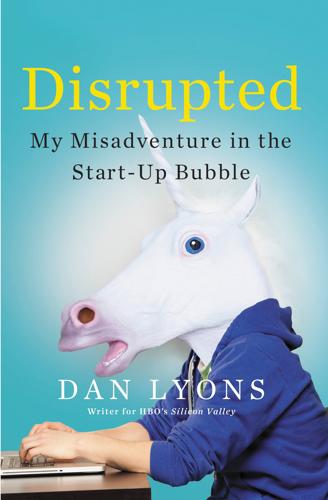
Disrupted: My Misadventure in the Start-Up Bubble
by
Dan Lyons
Published 4 Apr 2016
These are the people who now run tech companies, who have been entrusted with huge sums of other people’s money. It would be nice to think that when everything falls apart, the only ones who get hurt will be venture capitalists on Sand Hill Road in Menlo Park. But a lot of the money being thrown at these kids originally came from pension funds. The pain, when it comes, will not be confined to Sand Hill Road. Walking around San Francisco, it strikes me that this cannot end well, that the combination of magical thinking, easy money, greedy investors, and amoral founders represents a recipe for disaster. My first response is to feel the same kind of righteous indignation that I felt back in the late 1990s.
…
In the end Doerr got nothing out of Google Glass except some publicity, but maybe that was the point all along. In the old days, Silicon Valley venture capitalists embraced a California version of clubby East Coast white-shoe culture. All of the top VC firms literally sit beside one another on the same street, a big boulevard called Sand Hill Road in Menlo Park. For decades these firms resembled snooty private gentlemen’s clubs—in the British upper class sense of the word. They were almost exclusively male and were run by former engineers who shunned publicity and quietly voted Republican. Today generating hype has become a central part of the venture capital business.
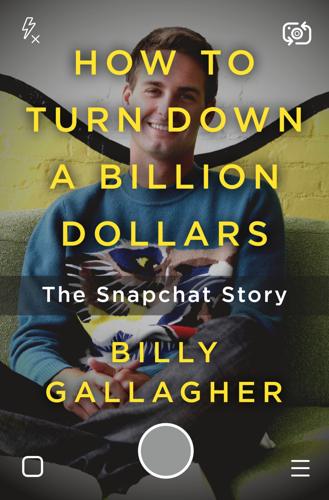
How to Turn Down a Billion Dollars: The Snapchat Story
by
Billy Gallagher
Published 13 Feb 2018
The guest speaker lineups at the myriad entrepreneurship and technology-related classes each quarter rival those of multithousand-dollar business conferences. Even geographically, Stanford is smack in the middle of Silicon Valley. Facebook sits just north of the school. Apple is a little farther south. Google is to the east. And just west, right next to campus, is Sand Hill Road, the Wall Street of venture capital. Silicon Valley has always had an influence on Stanford, and vice versa. But starting in the late 2000s, tech started to dominate the university. In the fall of 2010, as Evan began his junior year, I arrived on campus as a freshman. Coming from the East Coast, I knew that Stanford and Silicon Valley were closely linked and that tech companies were a big deal out there on the West Coast.
…
Duplan received some money from his parents and a $15,000 grant from a summer program at the venture capital firm Highland Capital. It had become quite easy for students to raise initial funding for their startup ideas. Venture capitalists were frequently on campus, often as professors or guest lecturers. Sand Hill Road, which runs from the 280 highway right past the edge of Stanford University in Menlo Park bordering Palo Alto, is home to the world’s major venture capital firms; think of it as Wall Street for venture capital. In the summer of 2011—the same summer that Evan, Reggie, and Bobby moved in to the Spiegels’ house to start Picaboo—Lucas and ten members of team Clinkle rented a house in Palo Alto to build the company’s first product.
…
And Mark Zuckerberg would soon give him good reason to rule out working at Facebook. But most of all, Evan wanted to be a founder and a CEO—the captain of his own company that he could grow to be the next Apple. Evan’s attitude and Snapchat’s traction made the company’s next fundraising, a Series A round, the hottest deal on Sand Hill Road. There were plenty of questions surrounding Snapchat: Is this really a full-fledged company or just a feature that Facebook, Apple, Google, or someone else can copy? Isn’t every other company in the Valley moving toward collecting more data, not zero data? How will they make money? And, of course, isn’t this for sexting?
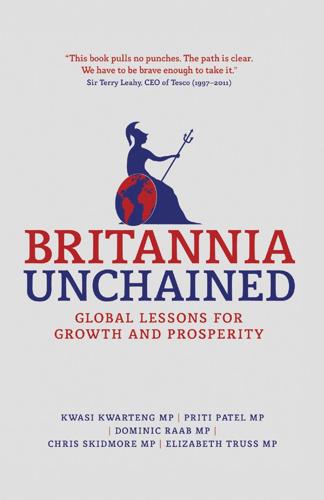
Britannia Unchained: Global Lessons for Growth and Prosperity
by
Kwasi Kwarteng
,
Priti Patel
,
Dominic Raab
,
Chris Skidmore
and
Elizabeth Truss
Published 12 Sep 2012
A number of other factors have been studied, including, but not limited to, a high-skilled workforce; a creative, risk-taking culture; complementary legal and financial institutions, and the high quality of life.34 So Silicon Valley benefits more than anything from a ready access to venture capital – which allows for the harnessing of risk in the interests of innovation. Sand Hill Road has become as synonymous with private 94 Britannia Unchained equity investment as Wall Street is with the stock market. Each year, billions of dollars are invested in new start-ups – capitalism in its rawest, most primordial form. Instead of the tinkering around the edges of enterprise zones, or government-subsidised green technology, we see the unrivalled power of the market in picking winners and backing innovation.
…
Neville 38 PriceWaterhouseCoopers 94 private enterprise, used for social ends 26–7 Programme for International Student Assessment (PISA) (OECD) 36, 38, 39–41, 44, 57, 105, 115 prudence 24, 27–9, 33 public services, investment in 12, 28–9, 31 ‘quants’ 44, 45, 47–8 Reagan, Ronald 38–9 reality television 75–6, 115 142 Britannia Unchained Recent Work Capability Assessments 70 The Red Paper on Scotland 26 Reich, Robert 25 Reilly, Cait 74 Reinhart, Carmen M. 21, 22 resources, running out 9 risk 99 and innovation 91–2 risk-aversion 86–8, 91, 92 see also failure Robinson, Derek (‘Red Robbo’) 8 Rogoff, Kenneth S. 21, 22, 29 Rolls Royce 8 Romer, Christina 22 Rossli, Ashraf 1 Rousseff, Dilma 101 Royal Society for the Encouragement of Arts (RSA) 61 Sahami, Mehran 60 Sainsbury’s, and migrant workers 64 Samuels, Tim 64 Sand Hill Road 93–4 Saragoza, Eric 54 Sarkozy, Nicholas 66 SAT (Standard Assessment Tasks) tests 39 Save the Children 71 Scandinavia, labour market reform 4 Schleicher, Andreas 38, 39, 40, 41 Science Museum, London 56 science and technology 38–60 attitudes to 48–51 securitisation 35 Sedi 103 seed capital 84, 98 see also venture capital Seed Enterprise Investment Scheme 98 Seedrs 98 Sela, Yonatan 86 Sequoia Capital 98 Silicon Roundabout (London) 55, 97, 112 Silicon Valley 93–4, 95, 97, 554 Simon, Leslie 48 Singapore 5, 66, 113 smart phones 55 Smith, Adam 20 Snow, C.P. 46 social mobility 11, 76–7 The Social Network (film) 48 solar energy sector, subsidies 85 Songkick 98 South Korea 4–5, 113 education 43–4, 55 working hours 66 Soviet Union 86, 89, 105 collapse of 10 SpaceX 95 Spain 3, 41, 52, 66 Spotify 98 Standard & Poor’s 47 Stanford University (US) 60, 93, 97 Stephens, Philip 28 strikes 8–9, 66, 69, 114–15 Stringer, Sir Howard 58 Süddeutsche Zeitung 40 Suez crisis (1956) 8 Sugar, Alan 75, 76 Summers, Larry 25 sustainable development 4, 10 see also economic growth Sweden 30, 32 Switzerland 30, 32, 52 Tang, Jessie 72 Tata, Ratan 64 taxation 12, 28–9, 31, 37, 88, 109, 110 impact on working hours 68–9 increases under New Labour 29 taxi drivers, work ethic 61–3 Tech City (London) 97 tech industry 51–5 international collaboration 53–4 low-wage workers 54 and tech skills 54–5 Technological Incubators Program (Israel) 79, 83–4 technology see science and technology; tech industry Index Thatcher, Margaret 9, 10, 11, 114–15 Toynbee, Polly 31 trade unions 8, 9, 63, 69 Trudeau, Pierre Elliot 14–15 True Flash Filing System 81 Tug, Tuggy 72 TweetDeck 55, 98 Twitter 93 unemployment 20, 23 Canada 14, 16, 18, 34 Europe 66 UK 70, 73, 74, 77, 87 Unison union 70 United Kingdom (UK) attitudes to academic achievement 45–7, 59 debt 10, 12, 30–3, 115 and deficit 19–21, 27, 29–33 economic decline 7–11, 12–13, 115 economic growth 9–10, 12, 114, 115 education 4–5, 12, 31, 42–3, 44–8, 51–60 failure of 57–8, 115 maths teaching methods 56–7 and parental aspiration 57, 59 performance in PISA tests 40, 41, 57, 115 and science and technology 51–3, 54–60, 115 tuition fees 60 end of empire 4, 8, 10, 114 and entrepreneurship 76, 91, 97–8 and European Union 10 government subsidies 85 graduate jobs market 44–5 innovation 98, 114 intellectual capital 52, 53, 112 patent applications 95–7 pensions 3, 63, 69–70, 110 population growth 100, 107–8 productivity 61, 66–7, 77 public spending 3, 27–8, 31, 114, 115 143 regulation and red tape 5, 30, 37, 87–8, 98, 109 relationship with US 8, 10, 90 research and development 88 and risk-aversion 86–8, 91, 92 strikes 8–9, 69, 114–15 taxation 12, 28–9, 31, 37, 88, 109, 110 technology companies 97–8 trade union power 8, 9, 63, 69 universities 52–3, 57, 58, 97 rise in science and tech applicants 59–60 venture capital 94, 98 welfare policies 109, 110 and dependency 2, 67, 68, 70–1, 77, 109 unsustainability of 106 Winter of Discontent (1978) 9, 114 and work ethic 2, 61–77, 111–12 working hours 65, 66, 68, 77 young Britons 75, 108–11 and entrepreneurship 76 unemployment 74, 77 United States (US) attitude to bankruptcy 91 cost of patent process 96 and debt 22, 24, 31 Declaration of Independence 90 and economic freedom 36 education 12, 38–9, 40, 42, 46, 57 entrepreneurial spirit 90, 93–4, 96–7 and global financial crisis (2007–08) 19, 32, 37 investment in IT sector 93–4 women in tech careers 49 worker productivity 57, 67 working hours 65, 66, 68 universities non-courses 43, 46–7 see also United Kingdom (UK), universities urban riots (2011) 1, 75 USB flash drive 80–1 144 Britannia Unchained Varga, Getúlio 104 Velez, Leila 103–4 venture capital 5, 80, 84–5, 93–5, 98 see also seed capital Vietnam 54, 89 vocational training 74 Wall Street Journal 9, 14, 36, 96 Wanless report 29 Wei, Nat 59 Weizmann, Chaim 83 Wenzhou, China 95 Willetts, David 67 Wilshaw, Sir Michael 59 Wilson, Harold 114 Wolf, Martin 26 Wolley, Trevor 45 women and tech careers 48–9, 50–1 working and cost of childcare 71 Woos, Jaejoon 22 work ethic 2, 5, 13, 61–77 and entrepreneurship 67–8 Europeans 65–6 impact of childcare costs 71 impact of welfare system 68, 70–1, 74, 77 Japan 106 migrant workers 63–4 and role models 74–7 role of schools 73–4 worklessness 67 Workers’ Party (Brazil) 101 working hours 65, 66 effect of unionisation 69 impact of tax rates 68–9 World Economic Forum 35, 87 Wriston, Walter 20 X Factor 45, 75 Yes Minister 47 Yom Kippur War (1973) 83 YouTube 1, 95 Yozma programme (Israel) 83, 84–6 Zappos 98 Zhou, Biyan 42 Zuckerberg, Mark 76 Zynga 95
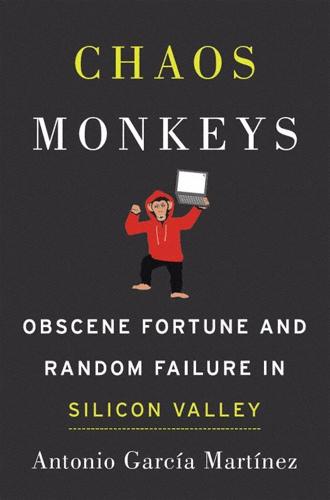
Chaos Monkeys: Obscene Fortune and Random Failure in Silicon Valley
by
Antonio Garcia Martinez
Published 27 Jun 2016
The modern-day Silicon Valley ghetto, though sadly without the moneymen living behind locked gates as in erstwhile Venice, is Sand Hill Road. A meandering stretch of two-lane blacktop that wends its way from Palo Alto to Menlo Park, this uninspiring piece of suburban scenery is swarmed by aspiring entrepreneurs with a laptop in hand and a sly pitch in mind. In New York, the old joke is that Wall Street starts in a graveyard and ends in the river. In Silicon Valley, just as symbolically, Sand Hill Road starts in a shopping mall and ends at a particle accelerator. The shopping mall is the Stanford Shopping Center, a suburban monument to upscale consumption built on land formerly occupied by Senator Leland Stanford’s vineyards.
…
The particle accelerator is the Stanford Linear Accelerator Center, SLAC for short. As venture capitalists and wealthy alums prefer funding Googles to winning Nobel Prizes (of which SLAC has several), the facility is funded by the US Department of Energy. The runway for its accelerated particles travels alongside Sand Hill Road, under Interstate 280, and into the foothills of the Santa Cruz Mountains, which define the western border of Silicon Valley. Lastly, there’s a high-class brothel: the Rosewood Sand Hill, a posh restaurant and hotel complex wedged in between SLAC and the Sand Hill–Interstate 280 intersection.
…
Fund-raising is an operatic drama on the order of a Latin American telenovela. Avoid the company-wide noise, and contain the pointless din of the begathon to yourself (or someone) at all costs. Sequoia was ensconced in one of the regulation two-story, poured-concrete-and-wood-trim, open-courtyard structures that dotted the manicured slopes around Sand Hill Road between Stanford and the 280. The impression was that of understated corporate efficiency, with Palo Alto’s supernaturally pleasant climate lending a certain Elysian quality. If you didn’t know the context, you might think it the bland corporate headquarters of some national insurance company, or perhaps the high school classrooms in a moderately affluent LA suburb.

Elon Musk
by
Walter Isaacson
Published 11 Sep 2023
He felt that bankers and lawyers did not contribute much to society. Besides, he disliked the students he met in business classes. Instead, he was drawn to Silicon Valley. It was the decade of rational exuberance, when one could just slap a .com onto any fantasy and wait for the thunder of Porsches to descend from Sand Hill Road with venture capitalists waving checks. He got his opportunity in the summer of 1994, between his junior and senior years at Penn, when he scored two internships that allowed him to indulge his passions for electric vehicles, space, and video games. By day he worked at Pinnacle Research Institute, a twenty-person group that had modest Defense Department contracts to study a “supercapacitor” developed by its founder.
…
Elon was granted a patent for the “interactive network directory service” that he had created. “The invention provides a network accessible service which integrates both a business directory and a map database,” the patent stated. For their first meeting with potential investors, they had to take a bus up Sand Hill Road because the car their dad had given them broke down. But after word spread about the company, the VCs were asking to come to them. They bought a big frame for a computer rack and put one of their small computers inside, so that visitors would think they had a giant server. They named it “The Machine That Goes Ping,” after a Monty Python sketch.
…
Thiel, however, was better at reading people. “This is just an opening,” he told Levchin. “You just have to be patient with a guy like Elon.” The courtship continued through January 2000, causing Musk to postpone his honeymoon with Justine. Michael Moritz, X.com’s primary investor, arranged a meeting of the two camps in his Sand Hill Road office. Thiel got a ride with Musk in his McLaren. “So, what can this car do?” Thiel asked. “Watch this,” Musk replied, pulling into the fast lane and flooring the accelerator. The rear axle broke and the car spun around, hit an embankment, and flew in the air like a flying saucer. Parts of the body shredded.
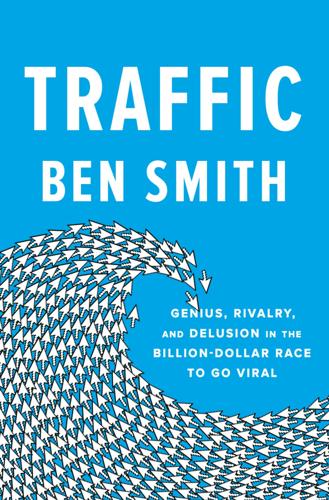
Traffic: Genius, Rivalry, and Delusion in the Billion-Dollar Race to Go Viral
by
Ben Smith
Published 2 May 2023
None of the usual humility. Andreessen was known for harshly challenging founders, but this was a different situation: BuzzFeed was hot, and he knew we were meeting with others on Sand Hill Road, that we’d have other offers. BuzzFeed’s traffic and revenue numbers clearly pointed to its becoming a “unicorn”—a billion-dollar-plus company that would make investors rich. Jonah explained to Andreessen across the long table at his office on Sand Hill Road why the company would be worth far more than the $450 million Disney had offered. BuzzFeed, he said, was learning to do what he’d been trying with LilyBoo—quantify human emotion on social media and feed it back to an audience with a combination of art and science, then capture the nearly infinite scale and perpetual motion the new media offered.
…
That’s part of why Zuckerberg and his team liked Jonah. And it’s part of why Jonah found himself, two months after a buggy quiz blew up Facebook, explaining to Marc Andreessen why he’d turned down Disney’s money. It was June 23, 2014, just before noon, and I was sitting next to Jonah at the long conference table on Sand Hill Road, home of the famous Silicon Valley office park housing a set of prominent venture capital offices. We were at the Andreessen Horowitz partners meeting, dominated by Andreessen himself, who stood six foot five and had a pointy bald head like an egg (the default avatar on Twitter) and loomed over the table.
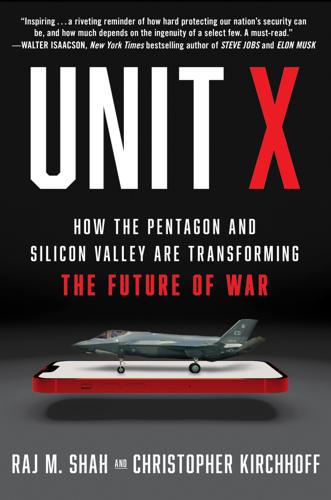
Unit X: How the Pentagon and Silicon Valley Are Transforming the Future of War
by
Raj M. Shah
and
Christopher Kirchhoff
Published 8 Jul 2024
trying to win business: In-Q-Tel, the intelligence community’s venture capital fund, is the longest standing government-affiliated office to engage Silicon Valley. Its unique status as a government-funded venture capital program has been widely studied, as have other government entities with a venture mission. See Athar Osama, “Washington Goes to Sand Hill Road: The Federal Government’s Forays into the Venture Capital Industry,” research brief, Woodrow Wilson Center for Scholars, January 2008, https://www.wilsoncenter.org/article/washington-goes-to-sand-hill-road; three HBS case studies, Josh Lerner, Kevin Book, Felda Hardymon, and Ann Leamon,“In-Q-Tel,” Harvard Business School Case 9-804-146, May 2003, and Kevin R. Kosar, “The Quasi Government: Hybrid Organizations with Both Government and Private Sector Legal Characteristics,” Congressional Research Service, June 22, 2011, https://sgp.fas.org/crs/misc/RL30533.pdf.
…
“Silicon Valley Can’t Escape the Business of War: Many in the tech industry don’t want to be part of the military-industrial complex. But defense work is already part of Silicon Valley’s DNA.” Op-ed, New York Times, October 26, 2018, https://www.nytimes.com/2018/10/26/opinion/amazon-bezos-pentagon-hq2.html. Osama, Athar. “Washington Goes to Sand Hill Road: The Federal Government’s Forays into the Venture Capital Industry.” Research brief. Woodrow Wilson Center for Scholars. January 2008. Pahlka, Jennifer. Recoding America: Why Government Is Failing in the Digital Age and How We Can Do Better. Metropolitan Books, 2023. Petraeus, David, and Andrew Roberts.
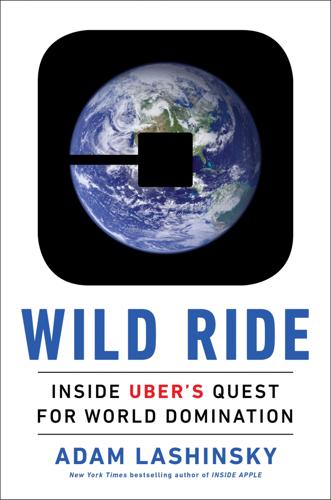
Wild Ride: Inside Uber's Quest for World Domination
by
Adam Lashinsky
Published 31 Mar 2017
Stanford alumni Jerry Yang and David Filo had already started Yahoo, a wildly popular compilation of searchable Web pages. Larry Page and Sergey Brin were Stanford graduate students fiddling with an algorithm that would soon become Google. The world’s leading venture capitalists, investors who make risky bets on unproven technology companies, nearly all had their offices on Sand Hill Road in Menlo Park, minutes from the Stanford campus. The proximity was no coincidence: the financiers recognized the value of staying close to the people dreaming up investable ideas at Stanford’s venerable computer science and engineering schools. This isn’t to say UCLA’s programs were an engineering backwater.
…
“Then I could pay people again,” says Kalanick. And so it continued. In early 2002, Kalanick says he succeeded in attracting the interest of August Capital, which planned to invest $10 million in Red Swoosh. August was the type of firm Kalanick had long coveted. An established, pedigreed firm on Sand Hill Road in Menlo Park, California, August was best known for having made an early and extremely lucrative investment in Microsoft. Landing an investment from August would confer legitimacy on the upstart company. But August had two conditions in return for its investment. First, it wanted Red Swoosh to find another, similar firm to coinvest alongside it.
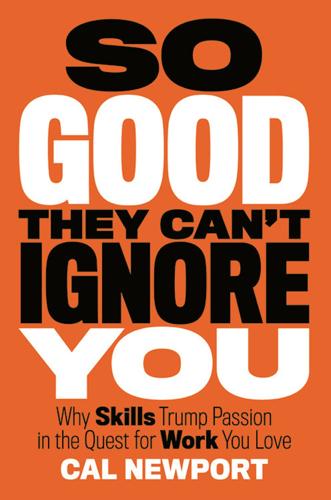
So Good They Can't Ignore You: Why Skills Trump Passion in the Quest for Work You Love
by
Cal Newport
Published 17 Sep 2012
What this story lacks in pizazz, it makes up in repeatability: There’s nothing mysterious about how Alex Berger broke into Hollywood—he simply understood the value, and difficulty, of becoming good. The Most Desirable Job in Silicon Valley Mike Jackson is a director at the Westly Group, a cleantech venture capital firm on Silicon Valley’s famous Sand Hill Road. To say that Mike has a desirable job is an understatement. “I have a friend who recently had dinner with the dean in charge of a top-tier business school,” he told me. “And at this dinner, the dean said that everyone in their graduating class right now wants to be a cleantech VC.” Mike has experienced this firsthand: He receives dozens of e-mails from business school students asking him about his path.
…
This is a classic example of career capital theory in action. To get a job he loved, Alex needed to first become so good that he couldn’t be ignored. MIKE JACKSON (introduced in Rule #2) Current job: Mike is a director at the Westly Group, a cleantech venture capital firm on Silicon Valley’s famous Sand Hill Road. Why he loves what he does: Clean-energy venture capital is a hot field. It offers a way to help the world while at the same time, as Mike admitted, “You make a lot of money.” How he applied the rules described in this book to get this job: Mike didn’t start with a clear vision of what he wanted to do with his life.

On the Edge: The Art of Risking Everything
by
Nate Silver
Published 12 Aug 2024
Part 2 Risk 5 Acceleration The reasonable man adapts himself to the world: the unreasonable one persists in trying to adapt the world to himself. Therefore all progress depends on the unreasonable man. —George Bernard Shaw “It sort of rotated in a three hundred and sixty degree horizontal loop in the air,” said Peter Thiel. “An unidentified flying object flying six feet above Sand Hill Road.” Thiel was recalling an incident in 2000 when he and Elon Musk were on their way to pitch the legendary venture capitalist Michael Moritz. They desperately needed cash. Their newly combined companies—Musk’s x.com and Thiel’s Confinity, what would later become PayPal—had $15 million in the bank but were burning through $10 million in expenses every month, giving them only six weeks of runway.
…
And then the chapter on Elon,” he said, “was ‘The Man Who Knew Nothing About Risk.’ ” And yet, when it comes to risk, it’s Thiel who is more of the outlier in Silicon Valley. “Peter is not a risk-taker. There is nothing. He is a guy wired to protect his downside,” said Moritz, the longtime partner at Sequoia Capital whom Thiel and Musk were going to meet with that day on Sand Hill Road.[*1] “He spent hours trying to convince me to sell PayPal. You know, the caricature would be the investor wants to sell the business, not the CEO.” In general, Silicon Valley does understand something about risk—something that most people in society don’t. It understands that a relatively remote chance is worth taking if it has a sufficiently high payoff.
…
There are turf wars—and philosophical ones—between Silicon Valley and Washington over regulation. “The reason Silicon Valley has been so successful is because it’s so fucking far away from Washington, D.C.,” said Bill Gurley to raucous cheers at the 2023 All-In Summit. It was the punchline to a talk he’d titled as “2,851 Miles”—because that is the driving distance from the White House to Sand Hill Road. The subject of the talk was regulatory capture—Gurley’s belief that “regulation is the friend of the incumbent” and tends to favor big, established players over potential upstarts. I asked Gurley, who isn’t usually considered to be a bomb thrower, whether he worried about further antagonizing Washington.
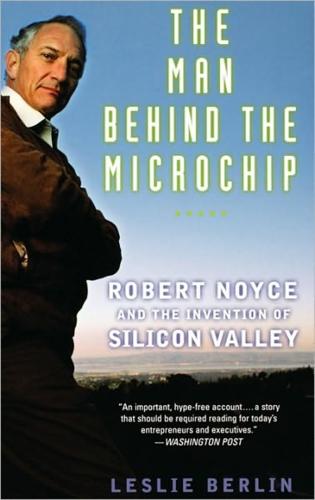
The Man Behind the Microchip: Robert Noyce and the Invention of Silicon Valley
by
Leslie Berlin
Published 9 Jun 2005
Callanish is the name of a Stonehenge-like structure in Scotland that some believe represents an ancient use of binary logic. Noyce established the Callanish Fund with about $1 million. Hwoschinsky rented an office on Sand Hill Road for $70 per month. The office held nothing more than a desk and chair, but it was the Sand Hill Road address that was important. Over the past few years, Sand Hill Road office complexes, a stone’s throw away from a major highway but nestled among lovely trees atop one of the highest hills rimming Silicon Valley, 240 THE MAN BEHIND THE MICROCHIP had become the epicenter of the region’s venture capital industry, which by 1975 included some 150 firms.
…
By the mid-1980s, Andy Grove was calling Silicon Valley a “business machine,” implying that the region churned out companies the way that Intel churned out chips.60 Zoning laws, venture capital companies, and course offerings—unrelated as they may seem—were predicated on a common assumption in Silicon Valley: that high-tech entrepreneurship was the best way to assure personal and regional vitality. Venture capitalists on Sand Hill Road, entrepreneurs in their garages or plotting defections in their low-walled cubicles, planners in City Hall, and students picking their way through course offerings made decisions based on a faith that the cycle of success would con- Renewal 255 tinue to perpetuate itself, that the innovations would continue to flow and the markets to develop and grow.
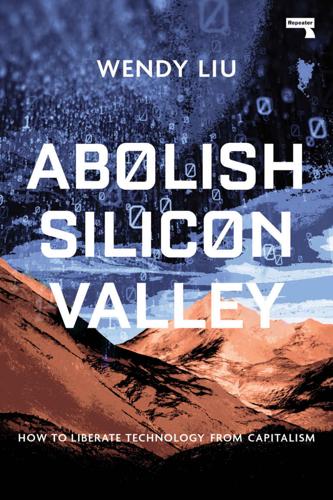
Abolish Silicon Valley: How to Liberate Technology From Capitalism
by
Wendy Liu
Published 22 Mar 2020
Data Says Otherwise.” by Erin Griffith for Fortune, published June 27, 2017, at https://fortune.com/2017/06/27/startup-advice-data-failure/. 3 For a good explanation of the downsides of this paradigm, see “Toxic VC and the Marginal-Dollar Problem” by Eric Paley for TechCrunch, published October 26, 2017, at https://techcrunch.com/2017/10/26/toxic-vc-and-the-marginal-dollar-problem/. 4 For more insight into why VC gravitates towards billion-dollar markets, see Scott Kupor’s book Secrets of Sand Hill Road (Portfolio, 2019). Six: Crash 1 From Peter Thiel’s 2014 book Zero to One: Notes on Startups, or How to Build the Future, which is a condensed version of Thiel’s lectures for an online class he taught on startups at Stanford University. 2 This statistic originated in an annual report released by the US Federal Reserve.
…
See, for example, “Lime, A Scooter Startup That Barely Existed Two Years Ago, Now Going To Be Worth $2 billion” by Theodore Schleifer for Vox, published January 15, 2019, at https://www.vox.com/2019/1/15/18184756/lime-scooter-fundraising-valuation-two-billion. 6 I’m mostly referring to the SoftBank Vision Fund, which has poured incredible amounts of money into companies like the gloriously overvalued (and still unprofitable) WeWork, but SoftBank is only the most egregious example of the trend. For an overview of SoftBank’s recent financial difficulties, see “SoftBank’s Blurry Vision” by Alexander Salmon for The American Prospect, published October 11, 2019 at https://prospect.org/power/softbanks-blurry-vision-fund-tech-ipos/. 7 Scott Kapor’s Secrets of Sand Hill Road (Portfolio, 2019) has a good breakdown of this, though an uncritical one. 8 The two American universities with the largest endowments are Harvard and Yale. Yale in particular has heavy exposure to venture capital through its fund, and the fund’s manager, David Swensen, is the university’s highest-paid employee, with a salary of $4.7 million in 2017.
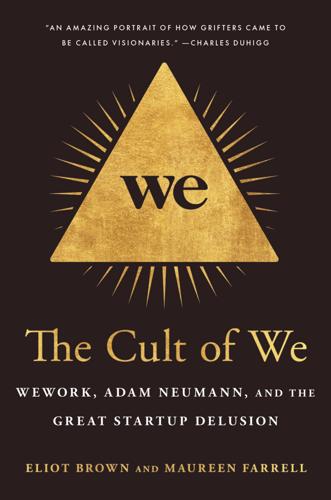
The Cult of We: WeWork, Adam Neumann, and the Great Startup Delusion
by
Eliot Brown
and
Maureen Farrell
Published 19 Jul 2021
Apple’s Tim Cook and others assured him that a deal to buy T-Mobile as well would pass muster with U.S. regulators, he told others. As if to announce his return to the Silicon Valley elite, Son bought one of the most expensive houses ever sold in the country, spending $117 million for a nine-acre estate in Woodside, California, a stone’s throw from the epicenter of venture capital on Sand Hill Road. His ambitions ran further still. He frequently talked about a three-hundred-year growth plan for SoftBank that would make it the world’s top technology company—at the forefront of every major shift. In one slide presentation to his investors, he charted the path over the next three decades for SoftBank and technology.
…
CHAPTER 22 The $3 Trillion Triangle One by one, CEOs of the hottest startups in Silicon Valley made the pilgrimage. Some flew to Tokyo, where they waited in a hotel room for hours until they were summoned. For others, the journey was just a short Uber ride to Woodside, California, not far from Sand Hill Road. If they were lucky, the meeting would include a meal. As SoftBank started spending its $100 billion Vision Fund, the startup world took note. Never before had such a massive new spigot of funding opened on the tech sector. It was an amount more than the annual budget of Ireland, more than the value of the vast majority of tech companies, save the largest giants.
…
CHAPTER 16: ONE BILLION DOLLARS PER MINUTE estimated at around $17 billion: Katia Savchuk, “Jeff Bezos, Mark Zuckerberg Are Biggest Gainers by Far on Forbes List of 100 Richest in Tech,” Forbes, Aug. 10, 2016. He’d trade the number one spot: Dan Alexander, “Here Are the 10 People Who Gained the Most Money in 2016,” Forbes, Dec. 30, 2016. “Life’s too short to think small”: Sarah McBride, Selina Wang, and Peter Elstrom, “Masayoshi Son, SoftBank, and the $100 Billion Blitz on Sand Hill Road,” Bloomberg Businessweek, Sept. 27, 2018. The Qataris were noncommittal: Arash Massoudi, Kana Inagaki, and Leo Lewis, “SoftBank: Inside the ‘Wild West’ $100Bn Fund Shaking Up the Tech World,” Financial Times, June 20, 2018. tended to be made by consensus: Margherita Stancati and Summer Said, “Saudi Prince Shakes Royal Family with Crackdown,” Wall Street Journal, Nov. 10, 2017.
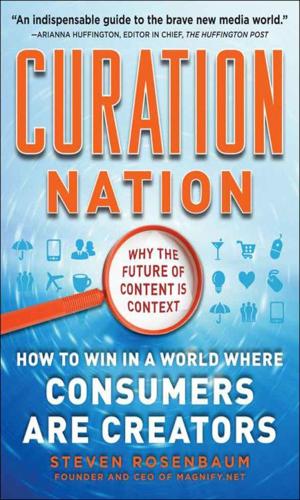
Curation Nation
by
Rosenbaum, Steven
Published 27 Jan 2011
This would solve one problem and create a new one: no longer would public speech be limited to those who could afford a TV broadcast antenna or a printing press. The sheer increase in content made every moment would create an urgent need for both alpha organizers (curators) and curation tools. My first attempt to share this vision was hardly encouraging. I traveled up and down the infamous Sand Hill Road of Silicon Valley with a PowerPoint under my arm. I was out raising money for a curation solution, a technology-enabled human-powered series of filters. Quickly, the best and the brightest in Valley venture funds reviewed the idea and found it out of sync with the future. Curation was a bad word because it suggested humans, and the Valley isn’t about humans; it’s about using microprocessors and heavy iron to replace human behaviors with content-publishing robots.
…
And we added a “freemium” solution, so you could start at free and then grow into pro. Today we’ve got more than 83,000 channels on the platform. And amazing choices of channels for the arts, music, theater, computer, and created-by-content curators around the world. There’s a sweet pleasure in being able to look back on those meetings on Sand Hill Road and know that I was right and they were wrong. Computers will win in data processing and e-commerce and lots of things. But for content creation and content curation, humans will win. It will be a man-and-machine partnership for sure. Magnify makes it possible for channel creators to be alerted whenever a video appears on the Web that could be appropriate for your site.
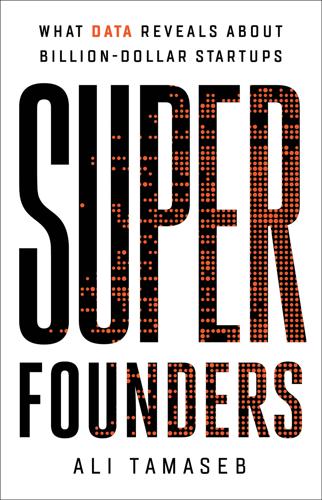
Super Founders: What Data Reveals About Billion-Dollar Startups
by
Ali Tamaseb
Published 14 Sep 2021
We could raise money and probably do it at a really good valuation, and would that be good for the company. It seemed prudent to at least investigate and see what that could mean. And if we could get an adequate valuation, then maybe that would make sense. We could grow faster, we could tackle the enterprise more effectively, we could do marketing. We never went down to Sand Hill Road [in Silicon Valley, where several VC offices are located]. Never. The VCs always came to us. With some perspective now, I see that it was a pretty unusual experience. We decided to take the money because we saw the opportunity and had started seeing competitors. Bitbucket had come up and was doing exactly what we were doing, but trailing behind by a year or so.
…
About Hudson’s failed startups that preceded Honey, he said, “Nothing had ever clicked, but to have something consumers clearly loved that was growing organically by word of mouth because people actually loved the product, I knew that there was something there.” Hudson and Ruan continued trying to drum up interest from investors, but they kept hearing no on Sand Hill Road from Silicon Valley investors. “It became clear that VCs weren’t ready to write a check for what we were building,” Hudson said.1 Some investors didn’t like the founders’ background, some didn’t like the fact that they were building a browser extension versus an app, and some didn’t buy into the monetization plan—earning money through affiliate marketing.

The End of Medicine: How Silicon Valley (And Naked Mice) Will Reboot Your Doctor
by
Andy Kessler
Published 12 Oct 2009
Meanwhile, with high blood pressure and high cholesterol, according to the literature, anyway, I needed to get my heart pumping, to flush all that crap out of me, I supposed. From what I know, those looking for a good outdoor cardio workout on the mid-Peninsula south of San Francisco usually do one of two things. The first is get on a bike and do The Loop—a fierce 28-mile climb and descent on Sand Hill Road, Alpine Road and Skyline Boulevard, finishing with a wild downhill dash on curvy La Honda–Woodside Road. If your tires don’t blow out, sending you over a cliff, there is a better than even chance you’ll be run over by a Ferrari 360 Modena taking the same turns faster than you. I thought I’d pass.
…
You half expect some New Age tingly music to be piped in, gently mixing with the breeze, and to find lots of cross-legged folks chanting “ommmmm, ommmmmmm.” It’s kinda dull. You could hardly guess that there is maybe $30 billion buried in the surrounding offices just itching to get out and fund something worthy. This is Sand Hill Road, the de facto capital of venture capital. Across the street, the Stanford Linear Accelerator is busy smashing atoms day and night, but here, there is that mellowness that drives entrepreneurs crazy. So maybe this wasn’t the best place to meet with Dr. Gary Glazer, but he insisted, maybe hoping that some of his excitement would rub off on someone around here, or at least his view on where medicine was going could gently mix in the breeze with all the money around here and something, anything might happen.
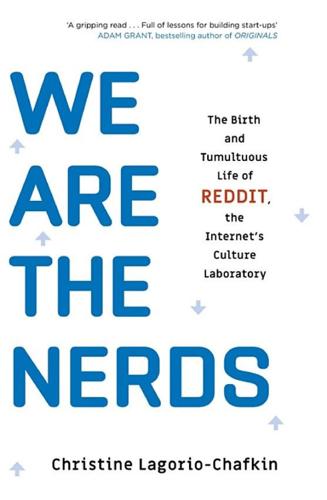
We Are the Nerds: The Birth and Tumultuous Life of Reddit, the Internet's Culture Laboratory
by
Christine Lagorio-Chafkin
Published 1 Oct 2018
Y Combinator would be not your standard startup incubator. It would start tiny, intended to help a handful of little companies get their legal framework set up, get a product established, and then introduce the founders to bigger, real investors. It would focus on very, very early-stage companies, typically ignored by Sand Hill Road’s investment firms, giving them just $6,000 per founder for the summer—enough for rent and pizza, not enough to bloat them or bog them down. It would be a friend and an inspiration, allowing the founders autonomy all week, not chaining them to desks. The founders would gather each Tuesday for a supportive social dinnertime meet-up session.
…
The tour wrapped in Lexington, Kentucky, where team Reddit hosted a big event along with their buddy Drew Curtis, the founder of the weird-news aggregation website Fark. Thanks to this massive road trip, Ohanian had collected inspiring stories of the Internet, and entrepreneurship, having changed the lives of individuals who never graduated from an Ivy League school nor pitched an investor on Sand Hill Road. Now he had another idea: a book. He’d taken it to literary agents, and a year after the tour, he would publish a hardcover book about the democratizing force of the World Wide Web, and how to start a startup, all inspired by his own story of founding Reddit. * * * A couple years earlier, a junior partner at Kleiner Perkins Caufield & Byers, one of the world’s largest and most established venture capital firms, which had backed 850 startups with hundreds of millions in funding, had reached out to Wong.
…
After she’d left Kleiner, she began formally advising him on transforming Reddit into a profitable company. She was one of several experienced executives whom Wong brought on initially as contractors. Members of the Reddit team were still irked that Wong had been hired without their consent; they saw Pao, with her Harvard degrees and her Sand Hill Road pedigree, as extremely buttoned-up and overly professional. To them she wasn’t a real Redditor, she was a poseur. Pao read the employees as passionate—they were youthfully enthusiastic, but wildly stubborn. They seemed simply unwilling to change the way they’d been doing things. This was a team that had exerted so much of their energy putting out fires that it seemed they’d lost the bigger picture: They were unable to focus their attention on something new, such as building new products.
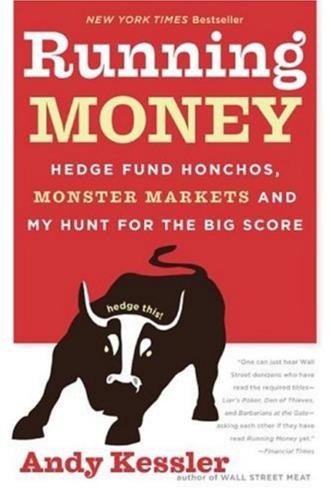
Running Money
by
Andy Kessler
Published 4 Jun 2007
I prefer to say that there are a bunch of nobodies in the deal.” I should have been offended at that, but oddly I wasn’t. This was white-guy trash talk—you gotta take it to be able to dish it out. Plus, we were struggling and not destined to be top-tier venture capitalists with an A-list of portfolio companies and fancy offices on Sand Hill Road. But you don’t have to be a so-called player to make money in Silicon Valley, just smart enough to find a few good companies and avoid the fashionable ones. Like public investors, VCs are notorious momentum investors—each one often investing in two or three companies in the same market, hoping something works.
…
We met with a company there yesterday—passing the bag lady sitting on a bench at the bus stop in front of our building. 152 Running Money Palo Alto is a strange town. Not much is over two stories tall, so it feels like a middle-American town: drugstore, stationery store, Chinese restaurant. Except there are subtle clues that something is different. Stanford University is next door. Sand Hill Road, home to almost every venture capital firm, is a few miles away. A typical walk down the block finds a beat-up old Volkswagen Beetle parked behind a brand-new Ferrari F355. Next to a frozen yogurt store is a bike shop with selections that start at $1,299. There is money infused in the sinews of Palo Alto, although the place is by no means glitzy.

The Quest: Energy, Security, and the Remaking of the Modern World
by
Daniel Yergin
Published 14 May 2011
And then there is Sand Hill Road, which slides down the western edge of Stanford University in Palo Alto, California. On one side of the road is Stanford’s Linear Accelerator, used for advanced nuclear experiments. On the other, partly hidden by leafy trees, is a series of mostly three- or four-story buildings that discreetly descend the hillside. The name Sand Hill may not be as widely resonant as those other streets, but to those who do know it, Sand Hill Road is synonymous with Silicon Valley and the innovation and technology that are changing the world. For it is on Sand Hill Road that are headquartered many VCs—venture capitalists—that are the ignition switch for new business formation, formerly mainly for Silicon Valley but now for the whole world.
…
Out of which came Hewlett-Packard, eventually HP, the largest computer company in the world.12 From Terman’s vision emerged the distinctive and highly interconnected ecosystem of Silicon Valley that encompasses Stanford and the University of California at Berkeley; the venture capitalists of Sand Hill Road and University Avenue and San Francisco; and the scientists and engineers and entrepreneurs who surround them. One of the first venture capital firms that shaped the Silicon Valley system was Kleiner Perkins (later Kleiner Perkins Caufield & Byers), which was founded in 1972. The original partners were Eugene Kleiner, who had fled Vienna with his family to escape the Nazis and later joined an early Silicon Valley start-up, and Tom Perkins, an MIT engineering and Harvard Business School graduate and a Hewlett-Packard veteran, who had been a student in Georges Doriot’s Manufacturing class at the Harvard Business School.
…
They should be analyzed and assessed in terms of impact and scale and cost-benefit analysis, assuring access to energy, with appropriate environmental safeguards. The whole sweep of Carnot’s great revolution—from the steam engine start-up of James Watt in the eighteenth century and the oil start-up of Colonel Edwin Drake in the nineteenth century to the latest cleantech start-ups to be spun out of Sand Hill Road and whatever is currently bubbling in the lab—demonstrates that the advances of energy are the result of innovation and conviction. Developing new knowledge and “applying science” come with a price tag. But without sustained long-term support for the entire innovation chain, the world will pay a much larger price.
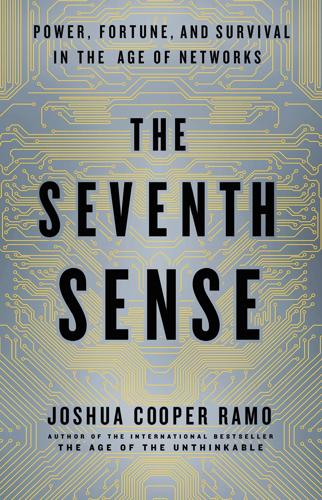
The Seventh Sense: Power, Fortune, and Survival in the Age of Networks
by
Joshua Cooper Ramo
Published 16 May 2016
We are children of the Enlightenment, after all, so we want to know what goes on inside the machines. We want them, at least, to be accountable to us. This tension is one reason why places such as Silicon Valley often leave a visitor with an uneasy feeling. Go drive along the anodyne strip of asphalt that runs in front of Sand Hill Road in Menlo Park, home of the greatest venture capital funds of our age. Inside those offices, revolutions are dreamed up, debated, and funded. You might expect to see, as a result, something as magnificent as the Vatican for these high priests of technology. But what you pass in that two-mile strip resembles nothing so much as a row of mildly prosperous dental practices.
…
What the Seventh Sense reveals as it feels our new power arrangements is gates. Everywhere. The world is not one big, flat equally connected topology. It is filled with closed and gated worlds. Facebook. Bitcoin users. Doctors with privileged access to genetic databases. Members of the New Caste. Those revolutionary investors disguised as dentists’ offices on Sand Hill Road. These are all are gated, in-or-out worlds. Look around and see how many gates enclose you or your family or your company. The Internet. The FTSE 100. Your Apple or Android operating system. In our connected age, the act of drawing lines between points is also an act of drawing a line around those points.
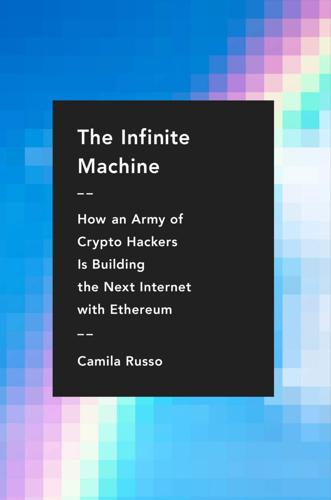
The Infinite Machine: How an Army of Crypto-Hackers Is Building the Next Internet With Ethereum
by
Camila Russo
Published 13 Jul 2020
There was no shortage of people wanting to be a part of it, and Vitalik was happy to bring everyone in. Vitalik wasn’t thinking about impressing VCs. He wasn’t thinking about company equity, either. In this brave new world of token sales, Ethereum could ditch startups’ mandatory trek to Silicon Valley’s Sand Hill Road. Ethereum didn’t need VC money because they could access investors from all over the world without them. Vitalik didn’t want VC money because, to him, Ethereum should be free and open for anyone to use, not owned by anyone. Post-Miami, the team’s priority was deciding where to set up either a company or a foundation.
…
After college, they wanted to try their own hand at running a company, and between 2005 and 2011 they, together with other cofounders, built two startups geared toward smartphone games, Mytopia and Particle Code, and sold them both. After that, Galia worked as an entrepreneur in residence at Trinity Ventures, one of the oldest VC firms in Sand Hill Road, and became a venture partner at Peter Thiel’s Founders Fund. In 2012 Galia moved to Tel Aviv to be a bridge for Founders Fund and the technology that was coming out of Israel. There she discovered Bitcoin and how developers were starting to think about building different layers and applications on top of it.
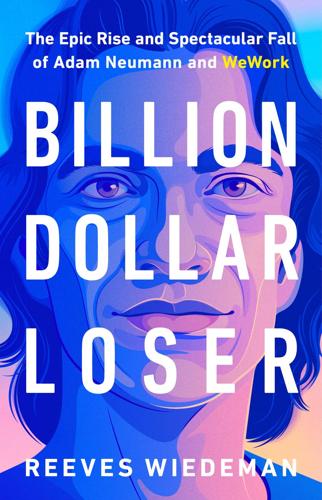
Billion Dollar Loser: The Epic Rise and Spectacular Fall of Adam Neumann and WeWork
by
Reeves Wiedeman
Published 19 Oct 2020
No one had yet tried to claim that real estate might be subject to network effects or that you could build a moat in a business where even the largest players control only a fraction of a percentage of the market. But Adam and Miguel flew to San Francisco armed with their new slogan and a pitch deck to make their case at Benchmark headquarters on Sand Hill Road, the heart of Silicon Valley’s venture capital world. This was a more intimidating experience than pitching Joel Schreiber. Adam and Miguel stood at the head of a conference room table watching nervously as Gurley sat at the opposite end, flipping through the business model they had been working off of for the past year.
…
What if WeWork could break that mold? A global brand known for providing the kinds of offices that people actually wanted to work in had huge potential alongside anonymous building operators like Brookfield and Vornado. Two percent of the market could make Amazon’s revenues look like a pittance. Investors from Wall Street to Sand Hill Road were also primed to hope. The post-recession era ushered in an age of hypergrowth, where one well-timed hit could make a career. Low interest rates enabled speculative investors to fund risky bets that could produce outsize returns. Individual investors were putting more of their money into index funds, which broadly tracked the economy, leaving mutual fund managers seeking alternatives to prove they could beat a market that was already booming.

Hype: How Scammers, Grifters, and Con Artists Are Taking Over the Internet―and Why We're Following
by
Gabrielle Bluestone
Published 5 Apr 2021
And still three people have died from crashes stemming from the software, with at least ten other nonfatal crashes also under investigation by the National Highway Traffic Safety Administration.52 Still, it’s no coincidence that, alongside a disregard for local laws, the vast majority of wealth created over the last few decades has been concentrated in the tech industry, starting with the rise of Silicon Valley venture capital that set the stage for today’s obscene IPOs. These days venture capital is centered around Sand Hill Road, the main thoroughfare connecting Palo Alto and Menlo Park, which might as well be paved in gold. These investment groups act as a sort of way station for big money with no particular place to be, like pension funds, endowments, and trust funds, even as economic inequality in the US continues to rise to untenable levels.
…
“These guys are very incentivized to deploy large amounts of capital, and the faster they can get it out the door and the faster they can mark it up on paper, the easier it is for them to go raise their next round. And a lot of them are charging three and thirty, and when you think about 3 percent on a billion-dollar fund, that’s $30 million a year for a group of twenty-five, thirty people on Sand Hill Road. They’re complicit because they don’t want to do hard work and blow up any of their investments. Who wants to be the VC firm that calls bullshit on Theranos? You’re not incentivized to. The incentivization is to get this thing where it’s ready to go public as fast as possible. Take it public and exit.”
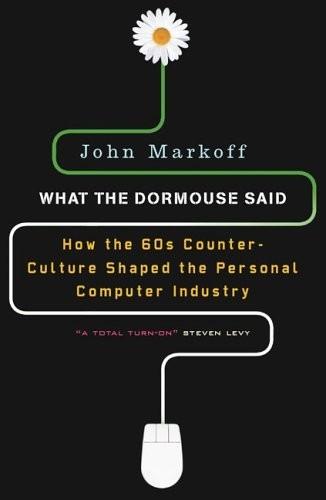
What the Dormouse Said: How the Sixties Counterculture Shaped the Personal Computer Industry
by
John Markoff
Published 1 Jan 2005
It was excellent training for a path that would ultimately lead Tesler directly to the modern personal computer. Lying west of Stanford are the Santa Cruz Mountains, which are frequently shrouded in fog and covered with a redwood forest that, though spotty, still wanders down to the coast in places. To reach the ocean, it was necessary only to drive past the university out Sand Hill Road to La Honda Road, a winding artery that makes its way from the elite Woodside mansions into a more rustic and rugged world, peopled by a mix of urban refugees thrown together with a rural community of artists, farmers, and bohemians. Anyone driving to the coast in August 1966 would have been surprised to see a large banner reading “Welcome Beatles!”
…
In fact, the idea that the codes were intellectual property was actually laughable to the experimenters. The instructions were simply necessary to imbue the machines with life. Eventually, the Homebrew meetings settled at the Stanford Linear Accelerator auditorium, located west of the university along Sand Hill Road, where at roughly the same time Silicon Valley’s venture capitalists were beginning to take up residence. The meetings just grew and grew until routinely as many as four hundred people showed up for each one. For the first six meetings, Fred Moore sat up front, took notes, and afterward sent out the club newsletter.
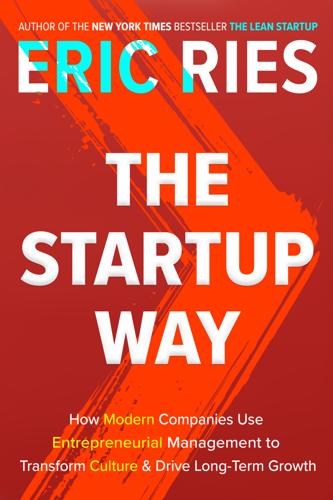
The Startup Way: Making Entrepreneurship a Fundamental Discipline of Every Enterprise
by
Eric Ries
Published 15 Mar 2017
WARNING: Do not try this at home until you have mastered the math that makes it possible. CHAPTER 9 INNOVATION ACCOUNTING In the early days of IMVU, the company I co-founded in 2004, we were attempting to raise money from some of the top venture capitalists in Silicon Valley. As we traveled up and down Sand Hill Road, we brought a pitch deck that summarized our progress to date. It included a few of the graphs I mentioned back in Chapter 3, when I told the story about how we were embarrassed by our very small numbers in spite of the fact that they showed clear progress, but we still earned the trust and investments of the VCs who not only understood our thinking as a team (it’s all about the team) but also knew how to read into those tiny numbers in a more sophisticated way.
…
Few of the policy makers I’ve been privileged to meet—both politicians and civil servants alike—think of themselves as entrepreneurs; I hope those who have read the preceding chapters will challenge this self-assessment. One recurring theme of this book has been the importance of seeing entrepreneurship as a tool for developing business ecosystems. Within a company, this means setting up structures and incentives to grow the next generation of entrepreneurial leaders. On Sand Hill Road, this means building a community of investing professionals who can identify and mentor the next generation of technology startup founders. In the preceding pages, I’ve argued that these two ecosystems are not as different as they seem. Now I’d like to add one more ecosystem to the mix: that of public policy.
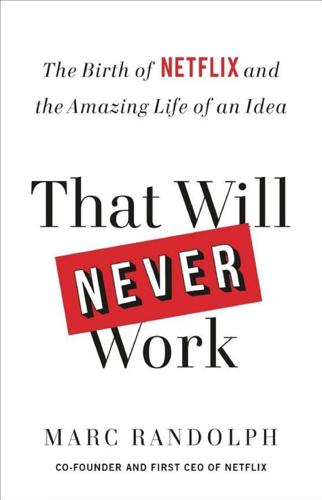
That Will Never Work: The Birth of Netflix and the Amazing Life of an Idea
by
Marc Randolph
Published 16 Sep 2019
Probably the most notable piece of décor—and the place is packed to the gills with stuff—is a motorless car suspended from the ceiling. Remember Soap Box Derby? Home-built wooden cars that you roll down a hill to race, in Boy Scouts? Well, consider this Silicon Valley’s version. Every year, there was a motorless car race on Sand Hill Road in Palo Alto, with multimillion-dollar VC firms fighting for bragging rights. Instead of wooden cars, these were spaceships on wheels. Their sponsors had sought out cutting-edge, hi-tech, carbon-fiber composite materials. They had used their connections to get time in the Lockheed Martin wind tunnels.
…
We weren’t approaching friends and family this time. We were approaching professional investors. Real venture capitalists. And they would need more than a sincere look communicating how hungry I was. They needed data. Sounds easy, right? Wrong. Flash-forward to my Volvo station wagon idling in a parking space in front of the Sand Hill Road offices of Institutional Venture Partners, a prominent Silicon Valley venture capital firm. In just twenty minutes, we will be ushered into an opulent conference room, where we’ll make the case for why IVP should invest in us. We’re asking for $4 million. I’m freaking out, and even Reed, who normally isn’t one to show emotion, is visibly concerned.

Palo Alto: A History of California, Capitalism, and the World
by
Malcolm Harris
Published 14 Feb 2023
Remnants of a hippie counterculture synthesized with high technology and big finance to produce the spiritually and materially ambitious heart of Silicon Valley. In some circles the small city—population near 70,000, as of this writing—has acquired the mythical reputation of a postmodern El Dorado, where money flows by the billions from the investors on Sand Hill Road to hundreds of garages where scrappy coders are changing the way we do everything, from driving around to eating food. On per-capita terms, the Valley ranks with the planet’s wealthiest spots: Qatar, Macao, Luxembourg. A few people seem convinced that Palo Alto is in fact the center of the world.
…
The huge capital-gains tax cut—more than 50 percent—and pension-investment deregulation helped turn venture capital from something small groups of well-connected buddies did in Cambridge, Massachusetts, and the Bay Area into a national growth strategy. Money raced from all over the world to Palo Alto’s Sand Hill Road, capital’s new capital, and into the hundreds of venture funds springing up like apricot trees. Capital in the funds quadrupled in the early 1980s, from $1 billion at the close of the 1970s to $4 billion in 1983.17 With Hoover goons at the national levers, Silicon Valley capitalism came into its own.
…
Dolores’s mother, Ramona Marine, was, too, and she was buried at Yuki Kutsuimi Šaatoš Inūxw, the Ohlone Indian cemetery, in 1921.9 These ancestral burial grounds were located under and around Leland’s stock farm, birthplace of the Palo Alto System. At the time of Ramona Marine Sanchez’s death, the land was owned by Stanford University, and Herbert Hoover was already on his way to the executive branch. Now the burial grounds cross the edge of campus, where the school is bordered by Sand Hill Road, the district that houses the highest concentration of venture capitalists in Silicon Valley and (based on pure conjecture) one of the highest concentrations of capital of any kind in world history.ii As you’ve seen, that sounds like a longer time than it is. When we talk about indigenous ancestors in California whose resting places have been displaced and disturbed by Leland Stanford’s capitalist eugenics project, we can do so in the sense of living people’s proximate relatives.

Smart and Gets Things Done: Joel Spolsky's Concise Guide to Finding the Best Technical Talent
by
Joel Spolsky
Published 1 Jun 2007
As soon as your team consists of more than one person, you’re going to have different people with different agendas. They want different things than you want. If you’re a startup founder, you might want to make a lot of money quickly so you can retire early and spend the next couple of decades going to conferences for women bloggers. So you might spend most of your time driving around Sand Hill Road talking to VCs who might buy the company and flip it to Yahoo!. But Janice the Programmer, one of your employees, doesn’t care about selling out to Yahoo!, because she’s not going to make any money that way. What she cares about is writing code in the latest coolest new programming language, because it’s fun to learn a new thing.
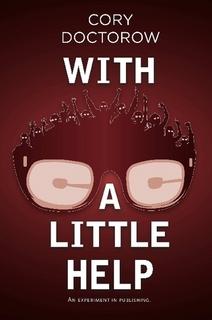
With a Little Help
by
Cory Efram Doctorow
,
Jonathan Coulton
and
Russell Galen
Published 7 Dec 2010
Time to think was critical to her brand of functional sculpture, and reflection was the scarcest commodity of all in 2027. 506 Which is why she was hoping that the venture capitalist would just leave her alone. He wasn't a paying customer, he wasn't a fellow artist -- he wanted to buy her, and he was thirty years too late. 507 "You know, I pitched you guys in 1999. On Sand Hill Road. One of the founding partners. Kleiner, I think. The guy ate a salad all through my slide-deck. When I was done, he wiped his mouth, looked over my shoulder, and told me he didn't think I'd scale. That was it. He didn't even pick up my business card. When I looked back as I was going out the door, I saw him sweep it into the trash with the wrapper from his sandwich." 508 The VC -- young, with the waxy, sweaty look of someone who ate a lot of GM yogurt to try to patch his biochemistry -- shook his head.
…
509 Gretl tossed her tablet with a crash on top of an overflowing barrel of primo plastics and wiped her hands on the cunningly stitched dress quilted from back pockets of vintage bootleg Levis, their frayed, misspelled red tags on proud display. "Son, that was 1999. Within a year, VCs weren't writing term-sheets. They were doing cram-downs on anything halfway decent in their portfolios, forcing out the founders, trying to flip them before the market cratered. But it wasn't that pitch that soured me on Sand Hill Road --" 510 "We're in Inglewood." 511 "Yes, you said." What the hell, it was Wednesday and she had all her week's commissions done already. The VC was at least pretty, if you liked them young. He had good teeth -- they all had good teeth now -- and a cute bump in the bridge of his nose that spoke of a little bit of brawling before his B-school days.

Machines of Loving Grace: The Quest for Common Ground Between Humans and Robots
by
John Markoff
Published 24 Aug 2015
The previous spring Jobs had acquired Siri, a tiny developer of a natural language software application that was designed to act as a virtual assistant, in effect a software assistant, on the iPhone. The acquisition had drawn a great deal of attention in Silicon Valley. Apple acquisitions, particularly large ones, are extremely rare. When word circulated that the firm had been acquired, possibly for more than $200 million, it sent shock waves up and down Sand Hill Road and within the burgeoning “app economy” that the iPhone had spawned. After Apple acquired Siri, the program was immediately pulled from the App Store, the iPhone service through which programs were screened and sold, and the small team of programmers who had designed Siri vanished back into “stealth mode” inside the Cupertino campus.
…
In the past, this had been an onerous chore for Gruber, since it required countless visits to venture capitalists who were often uninterested, arrogant, or both. This time their connection to SRI opened the doors to the Valley’s blue-chip venture firms. Dag Kittlaus was a master showman, and on their tour of the venture capital firms on Sand Hill Road, he developed a witty and charming pitch. He would take Cheyer and Gruber in tow to each fund-raising meeting. The men would then be escorted into a conference room and after they introduced themselves, Kittlaus innocently asked the VCs, “Hey, do any of you have one of those newfangled smartphones?”
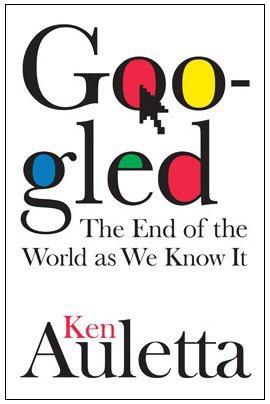
Googled: The End of the World as We Know It
by
Ken Auletta
Published 1 Jan 2009
The owners were friends: Susan Wojcicki, an engineer at Intel, and her husband Dennis Troper, a product manager at a tech company. The newly constituted Google had found its way to them because Sergey had dated Susan’s roommate at Stanford Business School. The house was not located in the upscale sections of Menlo Park, near the Sand Hill Road offices made famous by the venture capitalists whose offices are there, or in nearby Atherton, where many of these venture capitalists live and in 2008 an acre of land could sell for $3 million. Rather, it was on a dreary flag lot at 232 Santa Margarita Avenue. A concrete driveway led up to the garage, where a whiteboard had been attached with the legend, “Google Worldwide Headquarters.”
…
They set out to recruit two of the most prominent VC firms in the Valley, Kleiner Perkins Caufield & Byers, whose senior partner John Doerr was a trained engineer who had helped fund such start-ups as Amazon, Netscape, and AOL, and Sequoia Capital, where Oxford-educated former Time magazine reporter Michael Moritz was a partner and an early backer of Yahoo and PayPal. Doerr remembers the meeting vividly. They met in the conference room next to his glassed office on Sand Hill Road. Page and Brin made a brief PowerPoint presentation to establish the most telling facts: by the end of 1998 they had indexed twenty-six million Web pages and were now doing half a million searches a day. Doerr was impressed. Instead of a long-winded explanation of their mission, Page and Brin made a high-concept pitch consisting of eight words: “We deliver the world’s information in one click.”

Elon Musk: Tesla, SpaceX, and the Quest for a Fantastic Future
by
Ashlee Vance
Published 18 May 2015
Jim Clark, another billionaire who liked fast things, caught wind of the proposal and told a friend that he needed to rush over to the local Ferrari dealership to buy something that could compete. Musk had joined the big boys’ club. “Elon was super-excited about all of this,” said George Zachary, a venture capitalist and close friend of Musk’s. “He showed me the correspondence with Larry.” The next year, while driving down Sand Hill Road to meet with an investor, Musk turned to a friend in the car and said, “Watch this.” He floored the car, did a lane change, spun out, and hit an embankment, which started the car spinning in midair like a Frisbee. The windows and wheels were blown to smithereens, and the body of the car damaged.
…
After talking to a number of people in the car dealership business, the Tesla team decided to avoid selling their cars through partners and sell direct. With these basics of a plan in place, the three men went hunting for some venture capital funding in January 2004. To make things feel more real for the investors, the Tesla founders borrowed a tzero from AC Propulsion and drove it to the venture capital corridor of Sand Hill Road. The car accelerated faster than a Ferrari, and this translated into visceral excitement for the investors. The downside, though, was that venture capitalists are not a terribly imaginative bunch, and they struggled to see past the crappy plastic finish of this glorified kit car. The only venture capitalists that bit were Compass Technology Partners and SDL Ventures, and they didn’t sound altogether thrilled.
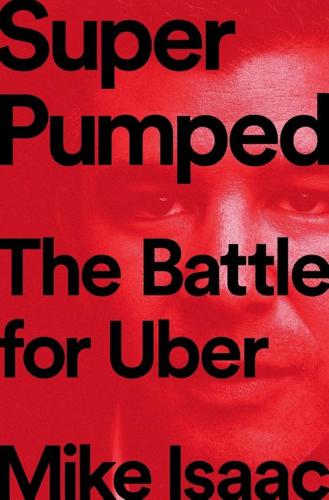
Super Pumped: The Battle for Uber
by
Mike Isaac
Published 2 Sep 2019
As had been the case when Jobs and Steve “Woz” Wozniak imagined the first Apple computer in their garage, the next great revolution in computing could come from anywhere, not just big publishers like Microsoft, Adobe—or even Apple. Hundreds of millions of dollars began to flow outward across San Francisco from the dozens of VC firms that lined the well-known stretch of Palo Alto’s Sand Hill Road. Armchair computer enthusiasts began to look at California with riches in their eyes. Venture funds began throwing money at twentysomethings, hoping to stumble into funding the next killer app. Doerr called it “the appification of the economy,” an era beyond the web and desktop that focused on mobility and independent creation, afforded by all the possibilities the iPhone had to offer.
…
Kalanick said, noting the steps his iPhone pedometer had tracked across the city. Levandowski would eventually create a separate company, Otto, right after leaving Google, as if he were interested in pursuing his own trucking startup. Then he would take venture investment meetings up and down Sand Hill Road—the famed home of top-tier Silicon Valley venture capitalists, including Andreessen Horowitz and Kleiner Perkins—to drum up money for the endeavor. But he would shrug those meetings off, opting instead to raise no outside capital. (Since they were operating independently mostly for appearance’s sake, it made no sense to fork over equity to outside investors.)

Whole Earth: The Many Lives of Stewart Brand
by
John Markoff
Published 22 Mar 2022
Decades before the western exit from campus led to the roost of Silicon Valley’s venture capitalists and the world’s most expensive real estate, Sand Hill Road offered the quickest route from Stanford to the Pacific Ocean and the California coast. It was a gateway to the fog-shrouded Santa Cruz Mountains and a way out through La Honda and the ribbon of Highway 1 running along the luminescent coastline down to Big Sur and Slates Hot Springs. This was a California that offered everything Brand hadn’t found in midwestern Illinois or even at Higgins Lake. Sand Hill Road became his get-out-of-jail pass. He first discovered Big Sur at an IIR foreign policy retreat held at Slates Hot Springs (now more commonly known simply as Big Sur Hot Springs).
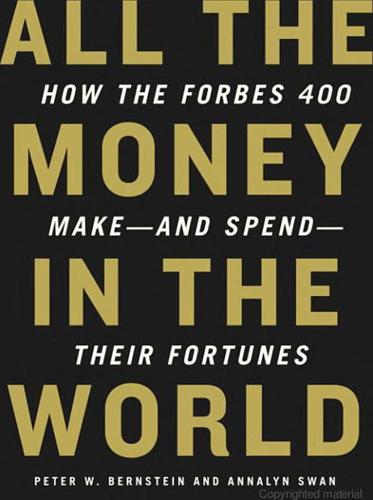
All the Money in the World
by
Peter W. Bernstein
Published 17 Dec 2008
Venture capitalist John Doerr (2006 net worth: $1 billion) describes the Valley as the site responsible for the “greatest legal accumulation of wealth in the history of the planet.” Aside from its stunning scenery, the Valley does not advertise its riches. With the country’s top venture-capital firms and its thriving high-tech companies, Sand Hill Road, the Valley’s main strip, is a sort of New Economy version of Wall Street. The four-lane highway runs through a hilly landscape from the town of Menlo Park past the mission-style buildings of Stanford University’s campus to the edge of Palo Alto. There are no iconic financial towers dominating the surrounding landscape; nor are there legions of briefcase-toting workers rushing by.
…
Sergey Brin Larry Page August 1, 1973 December 1,1972 Google 2004 The Google guys weren’t rich enough to make the Forbes list when they were 30, but at 31 and 32, respectively, they were each worth $4 billion. In 2006, Brin, 33, and Page, 34, were each worth $14.1 billion. * * * Before long, everyone at Stanford was Googling. And it was not much longer before the venture capitalists, many of whom were headquartered just a few miles up the road from Stanford on Sand Hill Road, came knocking with proposals in hand. One of them, Vinod Khosla50 of Kleiner Perkins Caufield & Byers, showed up with an offer from Excite, a company in which he was invested, to buy Google for $750,000. But Brin and Page held out for $1.6 million, and the deal fell through. In 1998, however, they got $100,00051 in start-up capital from another Silicon Valley investor, Andreas von Bechtolsheim, a cofounder of Sun Microsystems, and moved their company from Brin’s dorm room into a bedroom that they rented in a friend’s house.
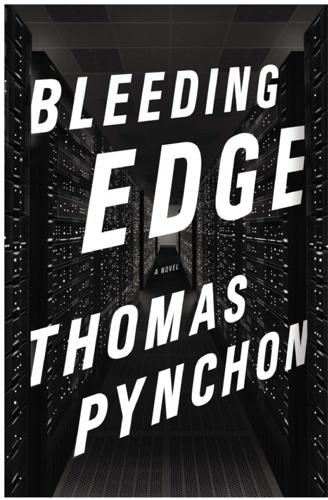
Bleeding Edge: A Novel
by
Thomas Pynchon
Published 16 Sep 2013
Kept running into each other within a tight radius of Margaret Jacks Hall, which in that day housed the Computer Science department and was affectionately known as Marginal Hacks. They primal-screamed their way together through one finals week after another, and by the time they graduated, they’d already put in weeks of pilgrimage up and down Sand Hill Road, pitching to the venture-capital firms which lined that soon-to-be legendary thoroughfare, arguing recreationally, trembling in performance anxiety, or, resolved to be Zenlike, just sitting in the traffic jams typical of that era, admiring the vegetation. One day they took a wrong turn and wound up caught in the annual Sand Hill soapbox derby.
…
They thought what they needed was a grim unforgiving workplace where the summer actually ended once in a while and discipline was a given daily condition. By the time they found out the truth, that the Alley was as much of a nut ward as the Valley, it was too late to go back. Having managed to score not only seed and angel money but also a series-A round from the venerable Sand Hill Road firm of Voorhees, Krueger, the boys, like American greenhorns of a century ago venturing into the history-haunted Old World, lost no time back east in paying the necessary calls, setting up shop around early ’97 in a couple of rooms sublet from a Website developer who welcomed the cash, down in the then still enchanted country between the Flatiron Building and the East Village.

Content: Selected Essays on Technology, Creativity, Copyright, and the Future of the Future
by
Cory Doctorow
Published 15 Sep 2008
Bertelsmann bought Napster out of the ensuing bankruptcy, a pattern that was followed by other music giants, like Universal, who slayed MP3.com in the courts, then brought home the corpse on the cheap, running it as an internal project. After that, the record companies had a field day: practically every venture-funded P2P company went down, and millions of dollars were funneled from the tech venture capital firms to Sand Hill Road to the RIAA's members, using P2P companies and the courts as conduits. But the record companies weren't ready to replace these services with equally compelling alternatives. Instead, they fielded inferior replacements like PressPlay, with limited catalog, high prices, and anti-copying technology (digital rights management, or DRM) that alienated users by the millions by treating them like crooks instead of customers.
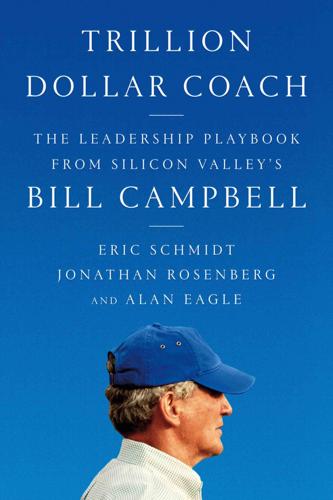
Trillion Dollar Coach: The Leadership Playbook of Silicon Valley's Bill Campbell
by
Eric Schmidt
,
Jonathan Rosenberg
and
Alan Eagle
Published 15 Apr 2019
Venture firms often have “entrepreneurs in residence,” bright, usually young, technologists who work at the firms while they noodle over their next big idea. Why not have an executive in residence, John thought, someone who was seasoned in operations and strategy, to help the firm’s startups through the ups and downs of growth (or lack thereof)? Bill agreed and settled into life on Sand Hill Road. THE GOOGLE COACH One day in 2001 a local startup, run by a couple of brash kids from Stanford, decided to bring in a “professional” CEO: Eric Schmidt. Eric built the software operations at Sun Microsystems and served as CEO and chairman at Novell. John Doerr advised Eric that he needed Bill Campbell as his coach.
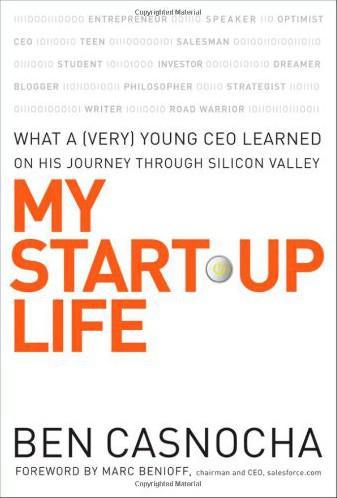
My Start-Up Life: What A
by
Ben Casnocha
and
Marc Benioff
Published 7 May 2007
(I also received “Most Likely to Be U.S. President,” but who cares about that?) CHAPTER 5.0 First Meeting with a VC (It’s All About the Network) My chief want in life is someone who shall make me do what I can. RALPH WALDO EMERSON For entrepreneurs, getting a meeting with a venture capitalist on the fabled Sand Hill Road, which runs through Menlo Park, and along the northern edge of the Stanford University campus, is a worthy accomplishment. If you don’t know a VC personally, it can take dozens of calls and emails to secure a meeting with someone who could fund your start-up. And dozens of calls and emails are no guarantee of an audience.
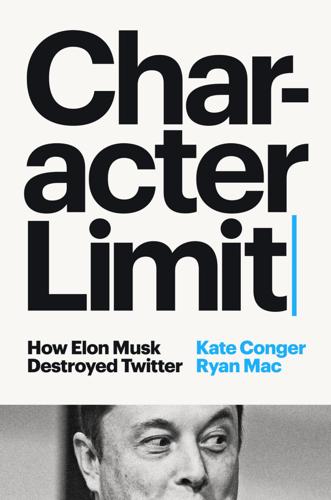
Character Limit: How Elon Musk Destroyed Twitter
by
Kate Conger
and
Ryan Mac
Published 17 Sep 2024
Cohn flew back to the West Coast and met Dorsey at Goldman Sachs’s office in Menlo Park on Sand Hill Road, the famed Silicon Valley corridor where the biggest venture capitalists set up shop to hear pitches from the most promising start-up founders. While Pichette and Kordestani had insisted that Cohn would recognize Dorsey’s genius once he saw him in person, Cohn felt as though he already knew reclusive founders like Dorsey—young men who believed they were uniquely capable of changing the world and clogged Sand Hill Road as they traipsed to investor meetings. While the venture capitalists might be convinced that all it took to succeed was a laptop-toting visionary, Cohn was more old-school.
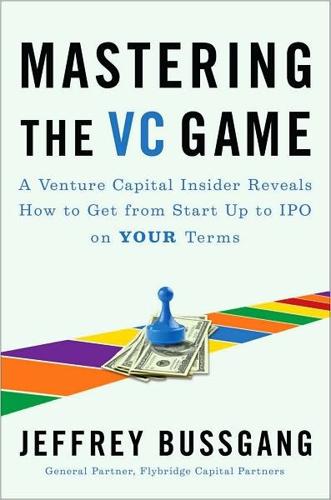
Mastering the VC Game: A Venture Capital Insider Reveals How to Get From Start-Up to IPO on Your Terms
by
Jeffrey Bussgang
Published 31 Mar 2010
After graduating from Harvard Business School, John went to work for Intel in 1974, just as the company was bringing out the 8080 Microprocessor (essentially the first microchip). He went on to become an amazingly successful VC, investing at an early stage in Amazon, Google, Sun, and Intuit, among others. I was excited to meet this Silicon Valley legend. It was not my first time visiting the nondescript low-rise office buildings on famous Sand Hill Road in the heart of Silicon Valley, but it was my first time doing it with hat in hand, trying to raise money and delivering the pitch. When we arrived, the receptionist and support staff made us feel at home offering cold drinks, fresh fruit, magazines, and newspapers—all with warm smiles and welcoming words.

Move Fast and Break Things: How Facebook, Google, and Amazon Cornered Culture and Undermined Democracy
by
Jonathan Taplin
Published 17 Apr 2017
When the two men got to Palo Alto in June, they ran into Parker, who was essentially homeless, having been thrown out of his latest company, Plaxo, an online address-book application. It is a tribute to Zuckerberg’s naive trust that he invited Parker to live in the house he and Moskovitz had rented. Parker promised to teach them about the shark tank known as Sand Hill Road—the center of the Valley’s venture capital business. In that role he did two important things. First, he kept Zuckerberg centered on Facebook, even though the young coder was spending a lot of time writing another program called Wirehog, which was essentially a version of Napster. Parker convinced him that it would be nothing but trouble in the form of lawsuits from the content community.
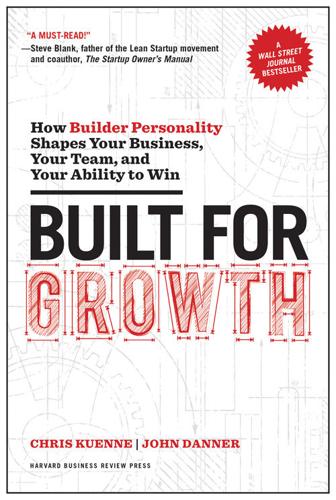
Built for Growth: How Builder Personality Shapes Your Business, Your Team, and Your Ability to Win
by
Chris Kuenne
and
John Danner
Published 5 Jun 2017
Product narcissism is the equivalent of the innovator’s dilemma for startups and can lead some Drivers to be one-hit wonders.3 A tendency to overreach with investors and customers: One of the Drivers we interviewed told us, “I will go to the end of the earth to get the money I need on the terms I deserve. I’ve told plenty of people on Sand Hill Road [the favored address for many Silicon Valley VCs] to f— off.” Your early market momentum can lead to an arrogance with investors—arrogance that can push your own valuation expectation so far above market you may not get the funding you need to continue to realize your dream of scale. Likewise, as growth and scale require expanding your customer base from tolerant and inventive innovators and early adopters to later-stage customers, you may have a hard time putting up with customers who aren’t as imaginative but who are far more demanding on pedestrian issues that may not inspire you.
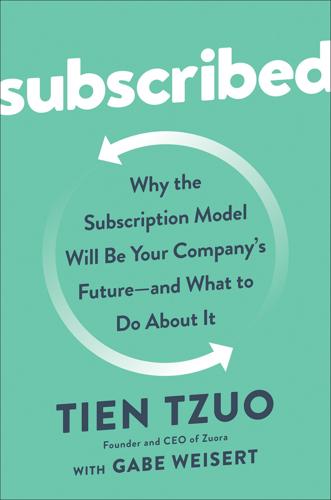
Subscribed: Why the Subscription Model Will Be Your Company's Future - and What to Do About It
by
Tien Tzuo
and
Gabe Weisert
Published 4 Jun 2018
Growth across the entire industry was flat or down—the 2001 crash wiped out a decade of gains, and there was talk of a “Software Nuclear Winter.” Multibillion-dollar companies like Siebel were being acquired or went out of business. Venture capitalists refused to fund new software start-ups. Tumbleweeds were rolling down Sand Hill Road (metaphorically, anyway). Wall Street declared that the industry had permanently matured and that firms should start paying out dividends like (gasp!) regular old utilities. Financial analysts argued that the software industry should be viewed as an area of “discretionary” spending that businesses would seek to minimize if the economy took another southward turn.
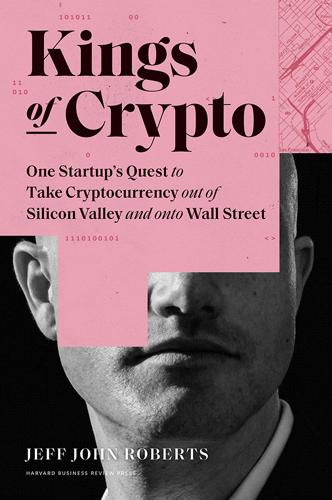
Kings of Crypto: One Startup's Quest to Take Cryptocurrency Out of Silicon Valley and Onto Wall Street
by
Jeff John Roberts
Published 15 Dec 2020
Before long, the venture capital world began pouring money into an emerging crypto industry already awash in cash. For the VCs, bets on crypto were a hedge of sorts. If Balaji was right, the forthcoming token economy was poised to upend the Valley’s longtime role as kingmaker of the startup scene. Better then to try and get an inside track on the emerging industry that could make Sand Hill Road—the famous strip of Palo Alto and Menlo Park that houses the most prestigious venture capital offices—irrelevant. Americans were glomming onto the growing crypto mania but it was nothing compared to what was happening across the Pacific. In South Korea, investing in crypto became as common as buying mutual funds, and by late 2017, one-third of the country’s workers owned some sort of digital currency.
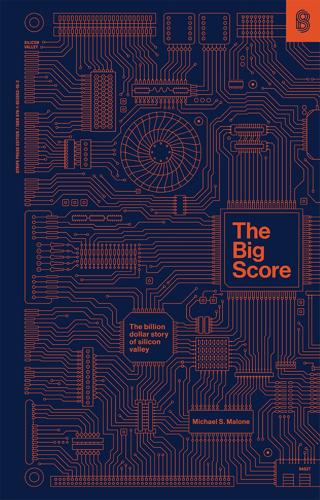
The Big Score
by
Michael S. Malone
Published 20 Jul 2021
So they create consortiums among themselves swapping information at the monthly WAVC meetings or in the Sun Deck cafeteria at 3000 Sand Hill Road in Menlo Park, the home of more than a dozen venture capital firms and the center of the business on the West Coast. Nevertheless, “you can’t really call us a cabal because sometimes we work together and sometimes we compete,” says Thomas Perkins, Kleiner Perkins’s general partner. In the eighties, the venture capital industry has changed, a victim of its own success. Though the old fraternal feelings survive on Sand Hill Road, the venture capital “family” of a decade ago is becoming a memory. There were a number of reasons for this change, among them the new investment laws adopted after the 1974 recession, which made venture capital more appealing to outsiders.
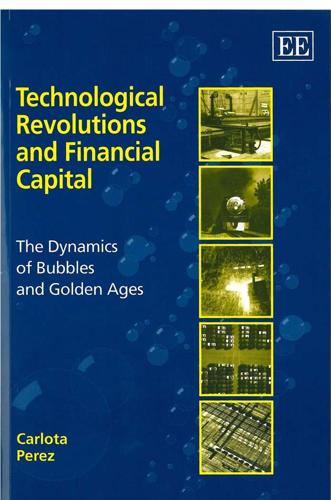
Technological Revolutions and Financial Capital: The Dynamics of Bubbles and Golden Ages
by
Carlota Pérez
Published 1 Jan 2002
Among the proposals signaling the direction of change, see Chris Freeman’s (2001b) brief and powerful essay ‘If I ruled the world,’ Richard Jolly’s (2002) measures to confront inequality, the Sagasti and Bezanson report on Global Public Goods, Radosevic (1999) and Ostry (1992) on harmonizing global regulation of foreign investment and the reports of the UNU-WIDER Research Programme (http://www.wider.unu) to help overcome world poverty. Ambitious proposals to reform the global financial and trade institutions are George Soros (2002) and Stiglitz (1992:1997 and 2002). Bibliography 173 Bibliography Abraham, Paul and Daniels, Caroline (2001), ‘A Desert Wind Blows Over Sand Hill Road’, Financial Times, IT Review, October 3, p. 1. Abramovitz, Moses (1986), ‘Catching Up, Forging Ahead and Falling Behind’, Journal of Economic History, Vol. 46, pp. 385–406. Aglietta, Michel (1976:1979), A Theory of Capitalist Regulation, London: New Left Books. Altshuler, Alan, Anderson, Martin, Jones, Daniel, Roos, Daniel and Womack, James (1984), The Future of the Automobile, Cambridge, MA: MIT Press.
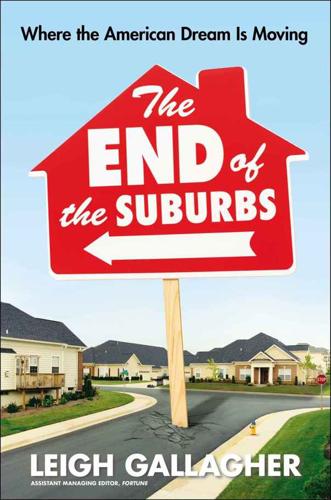
The End of the Suburbs: Where the American Dream Is Moving
by
Leigh Gallagher
Published 26 Jun 2013
Nowhere is this more obvious than in San Francisco, where some of the hottest tech start-ups are forgoing Silicon Valley for the city itself. Twitter, Zynga, Airbnb, Dropbox, Uber, Pinterest, and Yelp are among those that have opted to build new headquarters in San Franciscos proper instead of the stretch of suburbs that make up the Bay Area peninsula. Several venture capital firms, too, longtime fixtures of Menlo Park’s Sand Hill Road, have recently announced plans to either relocate or open satellite offices in San Francisco. In the mornings, the traffic on the 101, the main commuting freeway out of San Francisco toward the Valley, is now heavier heading out of the city than the reverse. One of the more interesting company relocations these days is happening in Las Vegas, where Zappos, the online shoe giant, is getting ready to move from a cookie-cutter suburban office park off a highway interchange in Henderson, Nevada, to a brand-new headquarters in Las Vegas’s old city hall.
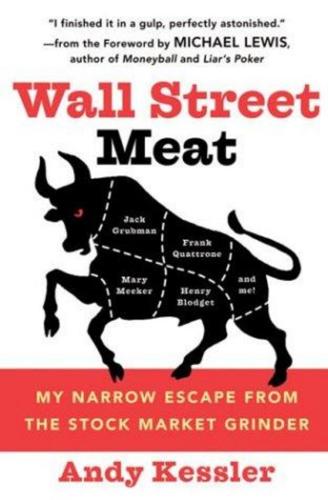
Wall Street Meat
by
Andy Kessler
Published 17 Mar 2003
Not five years earlier, Morgan Stanley had four technology 187 Wall Street Meat analysts with Frank Quattrone and a small crew as technology investment bankers. Now they had over fifty analysts covering every technology industry segment, including “periph-reeals,” and over one hundred investment bankers in their Sand Hill Road office in Menlo Park, California, alone. I struggled with what made this whole system tick. I had friends who had growth funds with $10 billion, $20 billion, even $40 billion in assets. They did absolutely no fundamental research. No Hank Hermann-like Piranha tactics to figure out what analysts were saying and how the market would react to the next piece of news.

Uncanny Valley: A Memoir
by
Anna Wiener
Published 14 Jan 2020
The word “disruption” proliferated, and everything was ripe for or vulnerable to it: sheet music, tuxedo rentals, home cooking, home buying, wedding planning, banking, shaving, credit lines, dry cleaning, the rhythm method. A website that allowed people to rent out their unused driveways raised four million dollars from elite firms on Sand Hill Road. A website taking on the kennel market—a pet-sitting and dog-walking app that disrupted neighborhood twelve-year-olds—raised ten million. An app for coupon-clipping enabled an untold number of bored and curious urbanites to pay for services they never knew they needed, and for a while people were mainlining antiwrinkle toxins, taking trapeze lessons, and bleaching their assholes, just because they could do it at a discount.
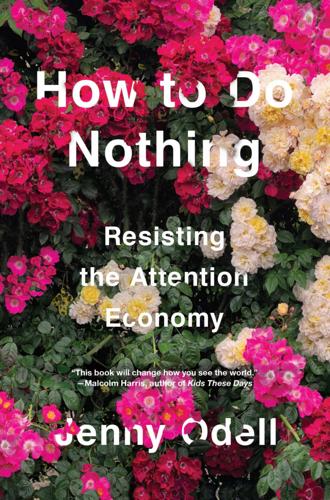
How to Do Nothing
by
Jenny Odell
Published 8 Apr 2019
* * * — GIVEN MY INSISTENCE on attending to the local and present, it’s important that this book is rooted in the San Francisco Bay Area, where I grew up and where I currently live. This place is known for two things: technology companies and natural splendor. Here, you can drive directly west from venture-capitalist offices on Sand Hill Road to a redwood forest overlooking the sea, or walk out of the Facebook campus into a salt marsh full of shorebirds. When I was growing up in Cupertino, my mom would sometimes take me to her office at Hewlett-Packard, where I once tried on a very early version of a VR headset. To be sure, I spent a lot of time inside on the computer.
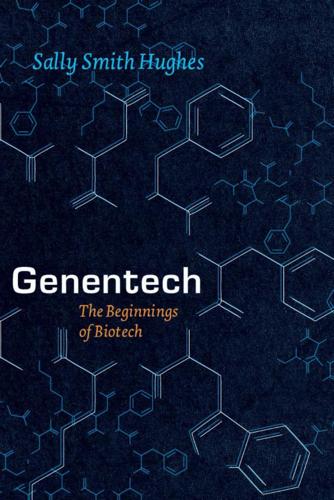
Genentech: The Beginnings of Biotech
by
Sally Smith Hughes
Serving on the board of the failing company, he met Eugene Kleiner, who with Thomas Perkins in 1972 had founded Kleiner & Perkins, a venture capital partnership with offices in San Francisco.8 Taking a measure of Swanson, Kleiner was impressed, according to Perkins, with the young man’s ability “to think straight and get things done.”9 When Swanson decided to leave Citibank and seek a new position, Kleiner recommended him to Perkins to fill a vacancy at the partnership. Perkins, a former Hewlett-Packard engineer with a Harvard MBA, respected Kleiner’s ability to assess individual character and motivation. Late in 1974 Swanson joined Kleiner & Perkins as a junior partner in its Menlo Park office on Sand Hill Road. He was twenty-six. One of Swanson’s assignments was to monitor the partnership’s substantial investment in Cetus Corporation, the company about to acquire Stan Cohen as scientific adviser.10 Kleiner and Perkins worried that Cetus was not focused on product development and feared their equity stake was turning sour.
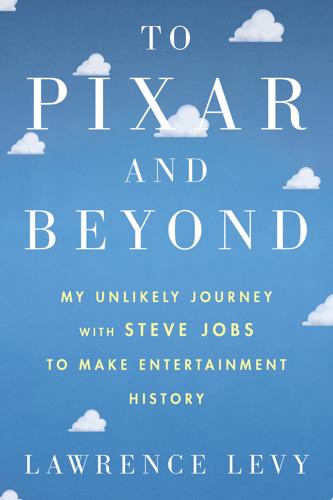
To Pixar and Beyond
by
Lawrence Levy
For the employees of those start-ups that do go public, the promise of riches and the imprimatur of success can become a reality. This is why Silicon Valley was, in large measure, built around the promise of the IPO. Out of a hundred start-ups spawned by the plush venture capital firms that lined Silicon Valley’s famed Sand Hill Road, only a very few would be fit enough to make the rare but game-changing leap from being a private to a public corporation. Corporations are owned through pieces of paper called stock certificates. Stock is simply a share of a corporation. The ownership of a corporation can be divided into as many shares as the corporation wants.

Blitzscaling: The Lightning-Fast Path to Building Massively Valuable Companies
by
Reid Hoffman
and
Chris Yeh
Published 14 Apr 2018
When people think of Silicon Valley, the first things that spring to mind—after the HBO television show, of course—are the names of famous start-ups and their equally glamorized founders: Apple, Google, Facebook; Jobs/Wozniak, Page/Brin, Zuckerberg. The success narrative of these hallowed names has become so universally familiar that people from countries around the world can tell it just as well as Sand Hill Road venture capitalists. It goes something like this: A brilliant entrepreneur discovers an incredible opportunity. After dropping out of college, he or she gathers a small team who are happy to work for equity, sets up shop in a humble garage, plays foosball, raises money from sage venture capitalists, and proceeds to change the world—after which, of course, the founders and early employees live happily ever after, using the wealth they’ve amassed to fund both a new generation of entrepreneurs and a set of eponymous buildings for Stanford University’s Computer Science Department.

The Greed Merchants: How the Investment Banks Exploited the System
by
Philip Augar
Published 20 Apr 2005
Hard-bitten private equity firms have a hand in most IPOs and like other sellers, such as corporations spinning off divisions or governments privatizing companies, are regular users of the capital markets and should be able to use their experience and muscle to drive a hard bargain. But although a few in San Francisco’s Sand Hill Road venture capital community grumbled during the bubble, on the whole issuers were as quiescent about the money left on the table as they were about the 7 per cent spread. Academics use prospect theory to explain why vendors are prepared to accept underpricing. People and organizations on the point of selling something for tens, hundreds even thousands of million dollars appear reluctant to jeopardize the whole process by upsetting the advisers on price.

Live Work Work Work Die: A Journey Into the Savage Heart of Silicon Valley
by
Corey Pein
Published 23 Apr 2018
As a favor of sorts, I sent Kyle an email letting him know that even though he had apparently blown off his Friday afternoon commitments, I would still be open to the possibility of an investment from Greylock. Funny enough, he never wrote back. Perhaps I would have better luck establishing relationships with monied techies in a more intimate, well-lubricated, convivial setting? Acting on a tip, I ventured out to Sand Hill Road for what was described to me as the hottest night out in Menlo Park: Cougar Night. This, I learned, was a tradition at the Stanford University–owned Rosewood Hotel, dating to 2009, with several interruptions related to public accusations of prostitution. The men who showed up were too old to be classified as cougar bait, but I can confirm that the debauchery of Cougar Night lived up to the legend, with all the fervid groping of last call at a British nightclub combined with the hyperpreppy attire of a velvet-rope club in New York’s Meatpacking District and the tangible awkwardness of any Silicon Valley social event.
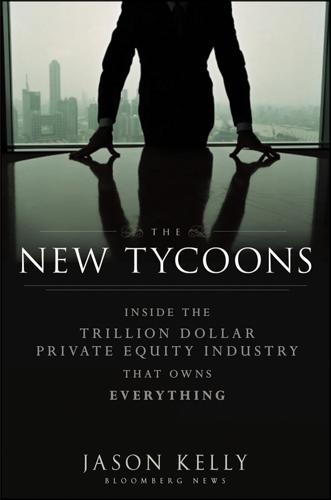
The New Tycoons: Inside the Trillion Dollar Private Equity Industry That Owns Everything
by
Jason Kelly
Published 10 Sep 2012
The gift was designated to fund the construction of a new home for the business school, part of a $6.3 billion project to create a new Columbia campus in West Harlem.2 Kravis told me he’s opted to focus his philanthropy on groups tied to education, culture, and medicine, three categories that obviously give him a huge set of options. He’s increasingly interested in applying lessons learned in his day job to charity. “I love starting something new or fixing something,” he said. KKR’s Menlo Park office sits in a tidy low-rise building along Sand Hill Road, the thoroughfare where the world’s best-known venture capital firms are tucked into similarly unassuming structures, minutes from Stanford University, and less than an hour’s drive from San Francisco. The echoes of 9 West are unmistakable throughout, the office itself feels like the more relaxed California cousin to its New York counterpart.

How to Fix the Future: Staying Human in the Digital Age
by
Andrew Keen
Published 1 Mar 2018
The discussion focused on how local players could barge their way onto the global Plattform-Kapitalismus. But many of the American attendees at DLD, particularly those from Silicon Valley, remained pessimistic about Germany’s ability to turn around its poor first-half performance. One investor from Sand Hill Road, the Palo Alto street adjacent to Stanford University that has become a synonym for venture capital firms, told me that Germany lacked the angel investment networks and the cultural acceptance of failure to “do digital” successfully. Others complained about the conservative nature of German corporations, particularly the absence of a risk-taking ethic among senior executives.

Please Report Your Bug Here: A Novel
by
Josh Riedel
Published 17 Jan 2023
“I want to show you the pitch deck.” The deck was for our Series A investment, the first major infusion of capital into DateDate since our launch. While the angel investors from our pre-launch seed round had contributed money on the basis of their faith in the Founder’s idea, the venture capital firms on Sand Hill Road expected a plan. The Founder scrolled through slides too fast for me to analyze, but slow enough for me to see that he was proposing several options for monetization. Advertisements, premium accounts, paid add-ons. Regardless of the method, user growth was paramount. The Founder paused on a slide titled “Our Growing Community.”
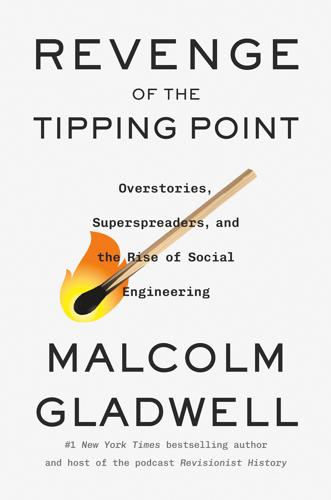
Revenge of the Tipping Point: Overstories, Superspreaders, and the Rise of Social Engineering
by
Malcolm Gladwell
Published 1 Oct 2024
Of course, it wasn’t fine: If you left the panther alone and kept it pure, it was doomed to extinction. Part Two The Social Engineers CHAPTER FOUR The Magic Third “I WOULD SAY, ABSOLUTELY, THERE IS SOME TIPPING POINT IN MY EXPERIENCE.” 1. Palo Alto is the heart of Silicon Valley, home to Stanford University and Sand Hill Road, where many of the venture-capital firms that launched the computer age have their headquarters. There are parts of the city—and the surrounding towns of Menlo Park and Atherton—where the streets and homes are as beautiful as any place in America. To the east and north of the city, however, is the other Palo Alto.

More Joel on Software
by
Joel Spolsky
Published 25 Jun 2008
As soon as your team consists of more than one person, you’re going to have different people with different agendas. They want different things than you want. If you’re a startup founder, you might want to make a lot of money quickly so you can retire early and spend the next couple of decades going to conferences for women bloggers. So you might spend most of your time driving around Sand Hill Road talking to VCs who might buy the company and flip it to Yahoo!. But Janice the Programmer, one of your employees, doesn’t care about selling out to Yahoo!, because she’s not going to make any money that way. What she cares about is writing code in the latest coolest new programming language, because it’s fun to learn a new thing.

The Perfect Thing: How the iPod Shuffles Commerce, Culture, and Coolness
by
Steven Levy
Published 23 Oct 2006
In March 1999, I wrote a column for Newsweek outlining the threat to the established order it represented, as well as the possibilities for glory if the music industry embraced the model. One of my readers showed the piece to her husband. He was Hank Barry, a copyright lawyer who was also a venture capitalist at Hummer, Winblad, one of the alpha dogs of Sand Hill Road, where Silicon Valley s top VC firms were located. Barry was so intrigued that he not only got Hummer to invest in Napster but became its CEO. Barry's job was to make Napster legit, first offering, then begging the record labels to help the company shift to selling songs legally. "We're trying to build a bridge to everybody involved in Napster, from music educators and users to record companies," he told me in 2000 after thanking me for cluing him in to the company.

Capitalism Without Capital: The Rise of the Intangible Economy
by
Jonathan Haskel
and
Stian Westlake
Published 7 Nov 2017
After all, VC is a form of financing that developed alongside some of the world’s fastest growing intangible-intensive businesses. Most of the intangible-rich businesses of Silicon Valley, and many high-growth businesses beyond, got their earliest investments from the venture capital firms on Sand Hill Road. This form of financing has evolved together with businesses like Intel, Google, Genentech, and Uber, whose competitive advantages depend on intangibles: valuable R&D, novel product design, software, and organizational development. Indeed, like the beaks of Darwin’s Galapagos finches that evolved to feed on particular cacti, many of the distinctive features of venture capital relate directly to the unusual characteristics of intangible investments that VC-funded businesses tend to make.
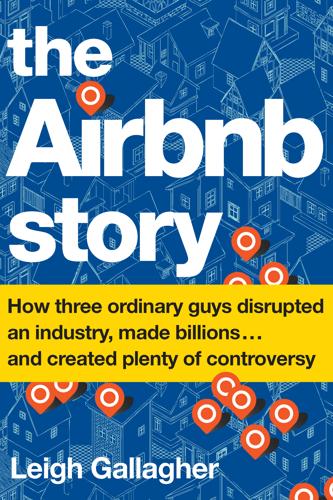
The Airbnb Story: How Three Ordinary Guys Disrupted an Industry, Made Billions...and Created Plenty of Controversy
by
Leigh Gallagher
Published 14 Feb 2017
“The first person who told me about them pitched the business badly,” he says, adding that that person was “a little bit of a doofus when it came to these businesses.” But Jeremy Stoppelman, the cofounder of Yelp and an early Airbnb angel investor, told Hoffman it was an exciting idea and said he really needed to meet with its founders. Ten days later, the Airbnb founders drove down to the Greylock offices on Sand Hill Road in Menlo Park—the mecca for venture capital—to meet with Hoffman. Within a few minutes, Hoffman says, it became clear to him that the concept was not Couchsurfing at all; it was eBay for space, which he saw as an infinitely bigger and far more original idea. He stopped them midway and told them there was no need to keep pitching.
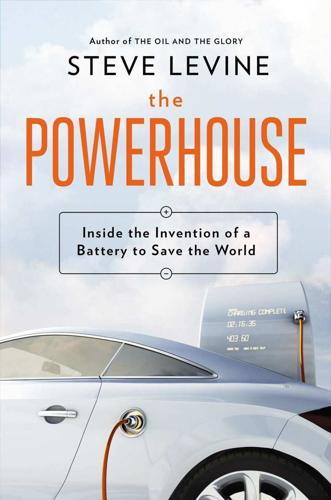
The Powerhouse: Inside the Invention of a Battery to Save the World
by
Steve Levine
Published 5 Feb 2015
He could approach VCs and say, “Look, here is a new opportunity. I don’t have the license deal yet, but you have to act fast. Here are the terms we’ve agreed on with Argonne.” “And, bang,” Chamberlain said, “you have three million dollars. He got it immediately.” By comparison, Chamberlain had crawled Sand Hill Road just a couple of years before. When asked about his prior experience, Chamberlain replied that he “absolutely” had built a business from scratch—at Cabot. But venture capitalists felt differently about achievements within a big corporate setting. It wasn’t the same as success on a tight budget with a small staff and the risk on your own shoulders.
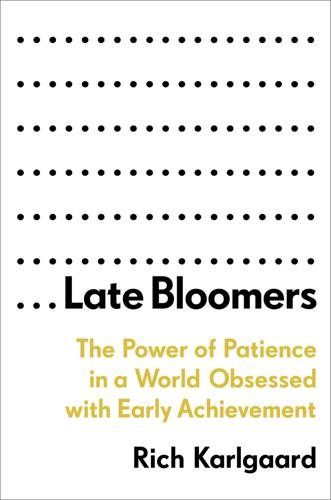
Late Bloomers: The Power of Patience in a World Obsessed With Early Achievement
by
Rich Karlgaard
Published 15 Apr 2019
It was spring break at Stanford, and half the campus, it seemed, had lit out for skiing vacations. I’d never skied before and lacked the money anyway. But I was in the best shape of my running life. I was running about seventy miles a week. On this Saturday, I put on my running shoes and headed out Sand Hill Road west of the campus with the idea of running a fourteen-mile loop, then drinking some beer and finding a pickup softball game. But five miles into the run, I had a crazy idea. Maybe I could turn right and head up a steep hill with twisting roads to the Santa Cruz Mountains skyline. I began the thirteen-hundred-foot climb, expecting that my curiosity itch would be scratched, and I would shortly head back down.
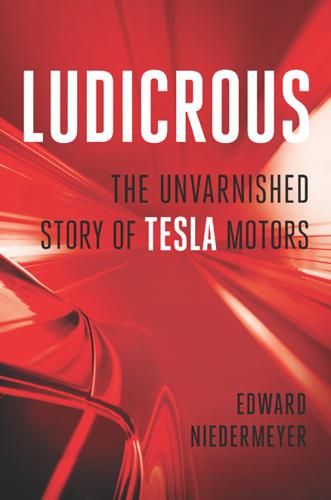
Ludicrous: The Unvarnished Story of Tesla Motors
by
Edward Niedermeyer
Published 14 Sep 2019
“Would you be interested in participating with one of those companies?” he asked. Musk was indeed interested. At the time, Tesla Motors was little more than Eberhard, Tarpenning, their technical specifications, a business plan, and a small office space. Eberhard and Tarpenning had pitched several venture capital firms, even bringing a tzero to Sand Hill Road near Stanford to convince Silicon Valley’s money men to take a chance on their company, but they had obtained only token support. Most high-tech investors were still focused on opportunities in the digital frontier that the information technology revolution had opened up, and they couldn’t get comfortable backing such an unusual play, especially in the notoriously challenging and low-margin car business.

Enshittification: Why Everything Suddenly Got Worse and What to Do About It
by
Cory Doctorow
Published 6 Oct 2025
Later Google dysfunctions owe much to management’s panic when upstarts like OpenAI shot past the company with chatbots and image generators. Today, Google is playing catch-up with its comically inept Gemini AI.) Silicon Valley has a long history of close collaboration with the US military. The region’s mix of naval shipbuilding and high-tech companies, along with historic ties between Stanford, Sand Hill Road venture capitalists, and the Pentagon afforded many opportunities for tech giants to fund their business- and consumer-facing products with fat, secret military contracts. As an added bonus, the Pentagon had a history of stepping in to rescue its key tech contractors from antitrust enforcement with emphatic statements to regulators and courts that the United States could not win its many wars unless its tech monopolists remained intact.
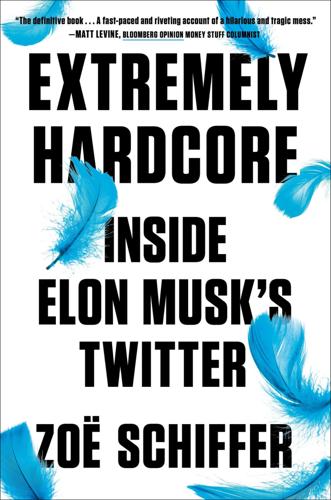
Extremely Hardcore: Inside Elon Musk's Twitter
by
Zoë Schiffer
Published 13 Feb 2024
Musk poured more than half his earnings into an ambitious enterprise called X.com, an online financial services startup. In 2000, X.com merged with Confinity, a rival payments company cofounded by Peter Thiel. Musk became the CEO of the company that would later be known as PayPal. That March, Musk took Thiel for a ride in the McLaren. “So what can this do?” Thiel asked, as they drove up Sand Hill Road in the heart of Silicon Valley. “Watch this,” Musk replied. He rammed his foot onto the gas, changed lanes, and hit an embankment. The car shot up in the air and started spinning. When the McLaren landed, fortuitously pointing in the right direction, the impact less fortuitously shattered the windows.
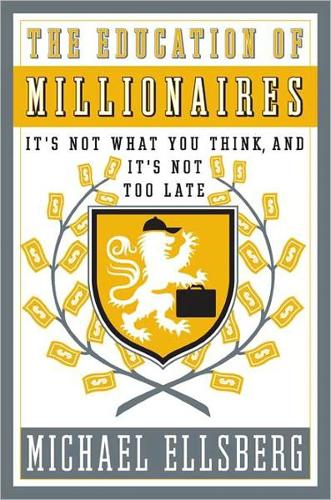
The Education of Millionaires: It's Not What You Think and It's Not Too Late
by
Michael Ellsberg
Published 15 Jan 2011
A serious meditator and student of Buddhism for many decades (and a fellow graduate of my alma mater, Brown), he’s one of the only people in Silicon Valley who could talk with equal authority on structuring multihundredmillion-dollar rounds of private equity financing and the finer points of Buddhist philosophy. I talked with Randy at his office on Sand Hill Road in Silicon Valley. He told me that, a lot of the time, people put off taking any steps toward living a more fulfilling life, with the idea of “keeping their options open.” Yet, according to Randy, the idea of “keeping your options open” is an illusion. Randy pointed out to me that the words “decision” and “decide” stem from the roots “cise” and “cide,” to cut off and to kill, also the roots of many other words related to cutting and killing, such as “incise,” “concise” (cutting out nonessentials), and “homicide.”
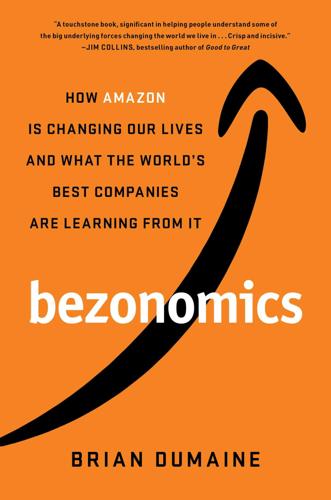
Bezonomics: How Amazon Is Changing Our Lives and What the World's Best Companies Are Learning From It
by
Brian Dumaine
Published 11 May 2020
While the advertising market is one of Amazon’s fastest-growing new segments, in the long run that business could pale next to another of the company’s undertakings—revolutionizing the health-care industry. John Doerr is one of the world’s most successful venture capitalists. As a partner at the Sand Hill Road powerhouse Kleiner Perkins, he was an early investor in both Google and Amazon. Doerr served on the Amazon board from 1995 to 2010 and is a friend of Bezos’s. In late 2018, he made a stunning prediction at a Forbes health-care conference in New York City. When asked about disruption in the health-care industry, he said: “Amazon has assembled an amazing asset with 120 million people who are Prime subscribers.

The Big Nine: How the Tech Titans and Their Thinking Machines Could Warp Humanity
by
Amy Webb
Published 5 Mar 2019
Alibaba sold to 515 million customers in 2017 alone, and that year its Singles’ Day Festival—a sort of Black Friday meets the Academy Awards in China—saw $25 billion in online purchases from 812 million orders on a single day.40 China has the largest digital market in the world regardless of how you measure it: more than a trillion dollars spent annually, more than a billion people online, and $30 billion invested in venture deals in the world’s most important tech companies.41 Chinese investors were involved in 7–10% of all funding of tech startups in the United States between 2012 and 2017—that’s a significant concentration of wealth pouring in from just one region.42 The BAT are now well established in Seattle and Silicon Valley, operating out of satellite offices that include spaces along Menlo Park’s fabled Sand Hill Road. During the past five years, the BAT invested significant money in Tesla, Uber, Lyft, Magic Leap (the mixed-reality headset and platform maker), and more. Venture investment from BAT companies is attractive not just because they move quickly and have a lot of cash but because a BAT deal typically means a lucrative entrée into the Chinese market, which can otherwise be impossible to penetrate.

Mindf*ck: Cambridge Analytica and the Plot to Break America
by
Christopher Wylie
Published 8 Oct 2019
Since then, Andreessen had made hundreds of millions of dollars investing in companies like Skype, Twitter, Groupon, Zynga…and Facebook. He also sat on Facebook’s board. I flew to San Francisco in the spring of 2016 to start briefing relevant parties on what I’d seen at Cambridge Analytica. Sheela set up a meeting at the Andreessen Horowitz offices, on Sand Hill Road in Menlo Park. From the outside, the building looked like a slightly upscale suburban dentist’s office, but inside, a rather bland lobby gave way to walls hung with fantastically expensive art. I met with Andreessen employees in a conference room and told them about Cambridge Analytica, the millions of Facebook profiles it had misappropriated, and the malicious way it was using the profiles to interfere with the election.
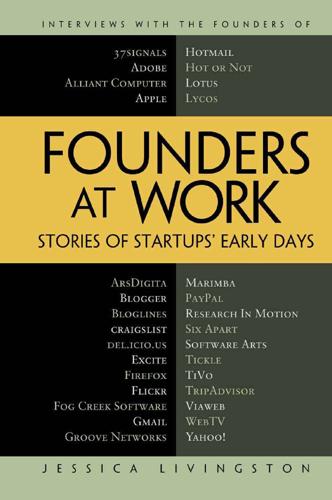
Founders at Work: Stories of Startups' Early Days
by
Jessica Livingston
Published 14 Aug 2008
You have resources here and people who understand technology. There’s a high concentration of talent that you can draw on. You don’t have to relocate people to get them there. Steve Perlman 187 Then there’s Sand Hill Road with all the VCs and other potential investors, who are all clustered together. You literally might do two or three presentations to different VCs all in the cluster of buildings on Sand Hill Road. The other thing is that there’s kind of an attitude here that people should try things, and, if they fail, if they understand why they failed, they may actually be a better investment in the next round than somebody who quickly succeeded just by sheer luck.
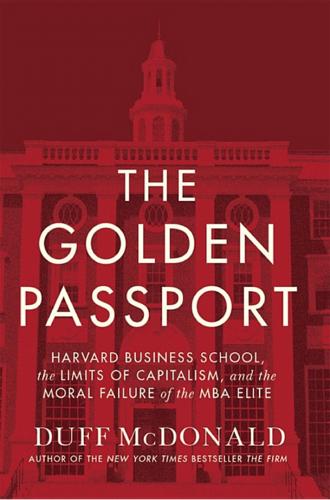
The Golden Passport: Harvard Business School, the Limits of Capitalism, and the Moral Failure of the MBA Elite
by
Duff McDonald
Published 24 Apr 2017
Five years later, the School held its first annual HBS Business Plan contest for students, and a year after that, Stevenson and his colleagues finally got their due: Entrepreneurial Management was officially added as a faculty unit. In 1997, the School belatedly opened an outpost in Silicon Valley—the “California Research Center” on Menlo Park’s Sand Hill Road. In 2000, a new course, The Entrepreneurial Manager, was added to the required first-year curriculum in place of a curricular mainstay, General Management. Ten years before, the class had included cases on Bank One, General Electric, and Nokia. In 2000? Charles Schwab, Intuit, and Chemdex.com.
…
Harvard today cannot be complacent but certainly need not be apologetic.”9 HBS may have been reluctant to accept criticism from the likes of BusinessWeek, but it was still attuned to the changing desires of its students, and in the mid-1990s realized that the pull of Silicon Valley—and the rise of its West Coast rival, Stanford’s Graduate School of Business—could no longer be ignored. Thus began what is undoubtedly the most important overhaul of its curriculum in the last half century, away from the needs of big business and toward the needs of a student body that increasingly had eyes on being their own boss, as entrepreneurs. In 1997, HBS opened a Research Center on Sand Hill Road in Menlo Park, California, and promptly began organizing job-hunting trips for MBAs to the West Coast. Just as it had argued almost a century before that going to HBS provided more experience than actual experience, the School began crafting an argument that going to HBS provided more entrepreneurial juice than working at an actual startup.
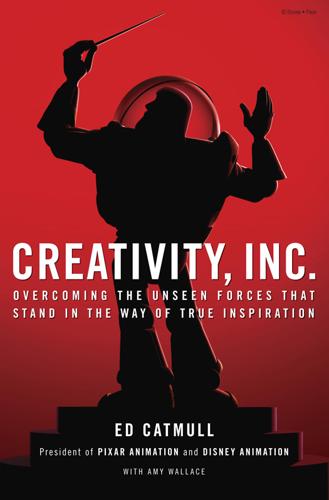
Creativity, Inc.: Overcoming the Unseen Forces That Stand in the Way of True Inspiration
by
Ed Catmull
and
Amy Wallace
Published 23 Jul 2009
Our offices were located in San Rafael, about an hour’s drive from Palo Alto, the heart of Silicon Valley—a moniker that was just gaining traction then, as the semiconductor and computer industries took off. That proximity gave me a front-row seat from which to observe the many emerging hardware and software companies—not to mention the growing venture capital industry—that, in the course of a few years, would come to dominate Silicon Valley from its perch on Sand Hill Road. I couldn’t have arrived at a more dynamic and volatile time. I watched as many startups burned bright with success—and then flamed out. My mandate at Lucasfilm—to merge moviemaking with technology—meant that I rubbed shoulders with the leaders of places like Sun Microsystems and Silicon Graphics and Cray Computer, several of whom I came to know well.

Bit Rot
by
Douglas Coupland
Published 4 Oct 2016
I think for most people, Silicon Valley is largely a state of mind more than it is a real place—a strip-malled Klondike of billionaires with proprioception issues, clad in khakis in groups of three, awkwardly lumbering across a six-lane traffic artery with a grass median, all to get in on the two-for-one burrito special at Chili’s before the promotion ends next Tuesday. I’ve many happy memories of the Valley. One afternoon, in a long-ago world called Before 9/11, I’d park my car just inside Menlo Park, the Valley’s venture-capital capital, on the other side of Interstate 280, just west of the Sand Hill Road exit. Walking through what seemed to be a Christmas-tree farm, I’d arrive at a chain-link fence with a Department of Energy warning sign, duck through one of its many breaches and sit beside the Stanford Linear Accelerator,* two miles long and operational until 1966. I don’t know what I was expecting to see, but it was nice to lie in the grass like Tom Sawyer and imagine baryon asymmetry and positrons committing suicide while a Cooper’s hawk soared high above, scoping out the 280 for roadkill.

Endure: Mind, Body, and the Curiously Elastic Limits of Human Performance
by
Alex Hutchinson
Published 6 Feb 2018
No one attributed their success to Halo’s tDCS headphones (which, a trainer for the team confirmed, an unspecified number of players had experimented with)—but the high-tech device fit in with the team’s techno-utopian storyline. Since the then-bumbling Warriors franchise was purchased by a group of Silicon Valley venture capitalists, in 2010, it has acquired a reputation as “tech’s team,” playing with the wonky, numbers-driven approach of Sand Hill Road venture capitalists. The Warriors have also been enthusiastic early adopters of technology ranging from “intelligent sleep masks” for countering jet lag to body-worn sensors that detect pressure on the knees and ankles. Now they were among the first to try brain stimulation—and, as their rivals (not to mention fans and amateur athletes) couldn’t help noticing, they were winning a lot of games.
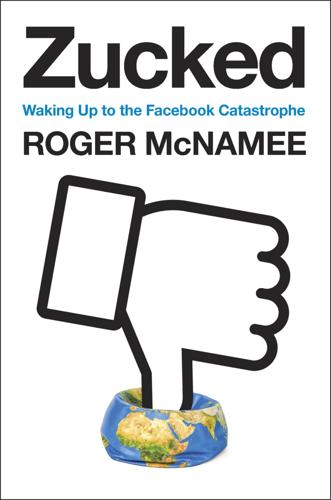
Zucked: Waking Up to the Facebook Catastrophe
by
Roger McNamee
Published 1 Jan 2019
News Feed, the heart of Facebook’s user experience, was not yet available. The company had only nine million dollars in revenue in the prior year. But Facebook had huge potential—that was already obvious—and I leapt at the opportunity to meet its founder. Zuck showed up at my Elevation Partners office on Sand Hill Road in Menlo Park, California, dressed casually, with a messenger bag over his shoulder. U2 singer Bono and I had formed Elevation in 2004, along with former Apple CFO Fred Anderson, former Electronic Arts president John Riccitiello, and two career investors, Bret Pearlman and Marc Bodnick. We had configured one of our conference rooms as a living room, complete with a large arcade video game system, and that is where Zuck and I met.

Don't Be Evil: How Big Tech Betrayed Its Founding Principles--And All of US
by
Rana Foroohar
Published 5 Nov 2019
Wall Street guys were raking in money, but not nearly as much as the Silicon Valley geeks who had the trappings of money, and yet also somehow a greater sense of having earned it, by creating real value in the form of their companies. Yet most of that value would prove to be on paper only. Sand Hill Road venture capitalists were pouring millions into Silicon Valley’s dot-com companies; British investors tried to emulate them. Continental banks desperate for higher margins were also trying to get in on the easy money. European players like the Dutch bank ING, and Credit Suisse First Boston, a subsidiary of the Swiss financial giant, were aggressively going after new deals, even bringing in investment bankers from the United States to help them identify the hottest targets.
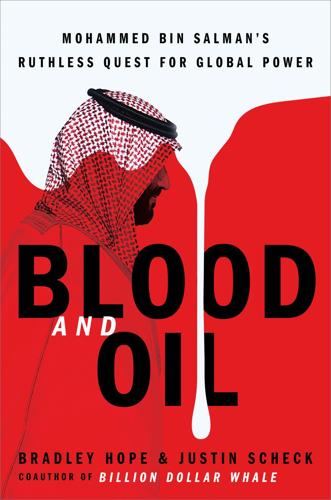
Blood and Oil: Mohammed Bin Salman's Ruthless Quest for Global Power
by
Bradley Hope
and
Justin Scheck
Published 14 Sep 2020
In pressed jeans and a blazer, Mohammed posed for photos with Mark Zuckerberg and visited Google’s founders. The reception was less effusive among the venture capitalists (VCs) whose ranks Mohammed wanted to join. While entrepreneurs were hungry for Saudi money, the VCs were a different breed. Often pompous, driving Teslas to their low-slung offices on Sand Hill Road in the hills above Palo Alto, they specialized in making small deals in early-stage start-ups that could pay giant returns in the unlikely event of success. Their industry was booming. The last thing the successful VCs needed was a prince with hundreds of billions of dollars inflating the valuations of new start-ups and telling them how to do their jobs.

Genius Makers: The Mavericks Who Brought A. I. To Google, Facebook, and the World
by
Cade Metz
Published 15 Mar 2021
Page accused him of being “specieist” because he favored carbon-based life-forms over the needs of new species built with silicon. At least for Tegmark, this debate over late-night cocktails showed the attitudes that were lining up against each other in the heart of the tech industry. * * * — ABOUT six months after the conference in Puerto Rico, Greg Brockman walked down Sand Hill Road, the short stretch of asphalt that winds past more than fifty of the biggest venture capital firms in Silicon Valley. He was headed for the Rosewood—the upscale, urban, California ranch–style hotel where entrepreneurs plotted their pitches to the big venture capitalists—and he couldn’t stop worrying about the time.
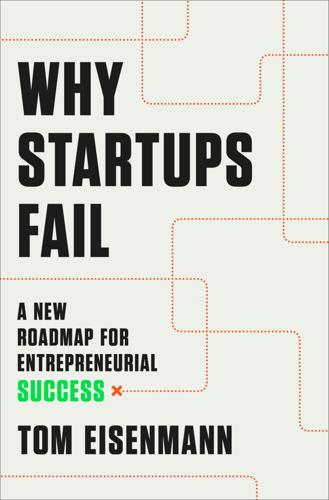
Why Startups Fail: A New Roadmap for Entrepreneurial Success
by
Tom Eisenmann
Published 29 Mar 2021
In early-stage startups: For analysis of early-stage funding decisions, see Brad Feld and Jason Mendelson, Venture Deals: Be Smarter Than Your Lawyer and Venture Capitalist (Hoboken, NJ: Wiley, 2011); Jeffrey Bussgang, Mastering the VC Game: A Venture Capital Insider Reveals How to Get from Start-up to IPO on YOUR Terms (New York: Portfolio, 2011); Jason Calacanis, Angel: How to Invest in Technology Startups (New York: Harper Business, 2017); and Scott Kupor, Secrets of Sand Hill Road: Venture Capital and How to Get It (New York: Portfolio, 2019). As my HBS colleague Bill Sahlman: Wasserman, Founder’s Dilemmas, p. 291. Marc Andreessen suggests: Marc Andreessen, “Part 6: How Much Funding Is Too Little? Too Much?” The Pmarca Guide to Startups website, July 3, 2007.
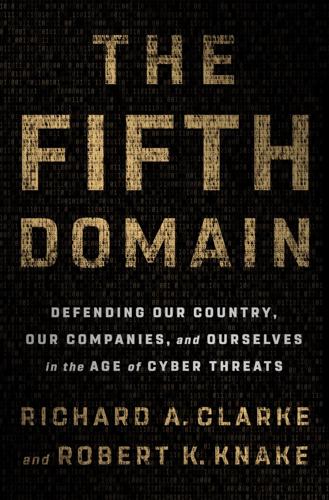
The Fifth Domain: Defending Our Country, Our Companies, and Ourselves in the Age of Cyber Threats
by
Richard A. Clarke
and
Robert K. Knake
Published 15 Jul 2019
The trouble is that even $800 million in venture funding is not enough to build out all the capabilities on Sounil’s matrix. Venture Tourism and Thin Peanut Butter If anyone can be blamed for this state of affairs it is Silicon Valley. And if we reserve a special place in cybersecurity hell for the enablers of vice, then Sand Hill Road should burn. The tech start-up battle cry of “Move fast and break things,” originally coined by Facebook CEO Mark Zuckerberg, has been pushed by the venture capitalists of the Valley in an effort to build large, monolithic monopolies at the expense of consumers, regulations, ethics, and cybersecurity.

The Perfect Weapon: War, Sabotage, and Fear in the Cyber Age
by
David E. Sanger
Published 18 Jun 2018
Meanwhile, the tech companies became gradually aware of another international threat to their future: China’s carefully laid-out plan to become the world’s dominant economic and technological power by 2049, the hundredth anniversary of Mao’s revolution. To accomplish this goal, Beijing developed a new strategy—one in which Chinese investors, rather than the venture capitalists of Sand Hill Road, were quietly becoming a critical source of cash for a range of new start-ups. Suddenly, the valley’s billionaires discovered they needed something that they had never really thought about before: a foreign policy. * * * — In the spring of 2016, under pressure to reverse the Islamic State’s expansion in Syria and Iraq, the Pentagon announced for the first time that it was declaring cyberwar on a foreign entity.
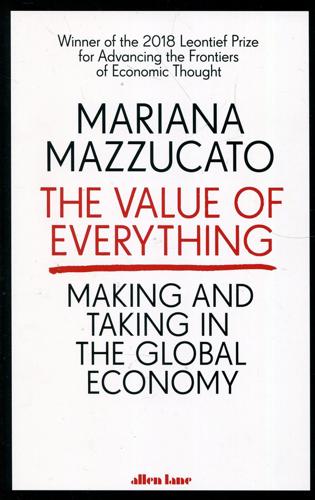
Value of Everything: An Antidote to Chaos The
by
Mariana Mazzucato
Published 25 Apr 2018
The creation of a highly liquid national market for more speculative corporate securities was important for attracting venture capitalists to invest in the IT industry, secure in the knowledge that there was now a feasible exit route from their investments.11 Venture capitalists typically look to exit from investments within three to five years, impatient to make a buck in one enterprise and start again elsewhere. In 1972, the Silicon Valley VC industry began to coalesce at 3000 Sand Hill Road in Palo Alto; a year later the National Venture Capital Association (NVCA) was formed. The NVCA quickly became an influential lobby. By the early 1980s it persuaded Congress to halve capital gains tax rates, arguing that it would be an incentive to greater VC investment. Warren Buffett became a lead critic of this policy, admitting that he and most investors don't look at tax, they look at opportunities.12 Indeed, the VC industry, from when it began, followed the opportunities created by direct ‘mission-oriented' government investments in areas like the Internet, biotech, nanotech and cleantech.

American Foundations: An Investigative History
by
Mark Dowie
Published 3 Oct 2009
"Raising the money is the easy part," he told his cousin Henry, who recently called to boast about the first $50 million raised for his New York Investment Fund. "The hard part is knowing what to do with it." Following Suit Business cannot succeed if society fails. -Jack MacAllister, CEO, U S West Less than a mile down Sand Hill Road from George Roberts's office in Palo Alto is the Mayfield Fund, a leading Silicon Valley venture capital firm. Mayfield general partner Gib Myers, who helped start Compaq Computers and Silicon Graphics, keeps a close watch on Roberts-not as a competitor in the capital markets but as a pioneering philanthropist.

The Coming Wave: Technology, Power, and the Twenty-First Century's Greatest Dilemma
by
Mustafa Suleyman
Published 4 Sep 2023
If anything, this is perhaps the most persistent, entrenched, dispersed incentive of all. Profit drives the Chinese entrepreneur to develop moldings for a radically redesigned phone; it pushes the Dutch farmer to find new robotics and greenhouse technologies to grow tomatoes year-round in the cool climate of the North Sea; it leads suave investors on Palo Alto’s Sand Hill Road to invest millions of dollars in untested young entrepreneurs. While the motivations of their individual contributors may vary, Google is building AI, and Amazon is building robots, because as public companies with shareholders to please, they see them as ways to make a profit. And this, the potential for profit, is built on something even more long-lasting and robust: raw demand.
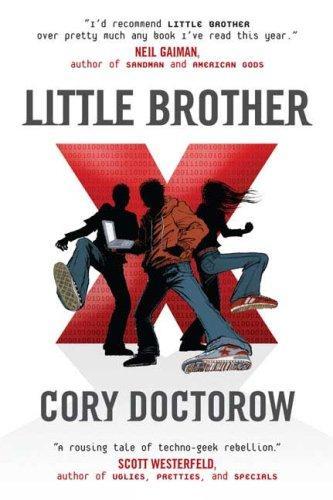
Little Brother
by
Cory Doctorow
Published 29 Apr 2008
The organization -- a charitable nonprofit -- had been co-founded by Barbara and some of her lawyer friends right after the liberation of Treasure Island. The funding was kicked off by some tech millionaires who couldn't believe that a bunch of hacker kids had kicked the DHS's ass. Sometimes, they'd ask us to go down the peninsula to Sand Hill Road, where all the venture capitalists were, and give a little presentation on Xnet technology. There were about a zillion startups who were trying to make a buck on the Xnet. Whatever -- I didn't have to have anything to do with it, and I got a desk and an office with a storefront, right there on Valencia Street, where we gave away ParanoidXbox CDs and held workshops on building better WiFi antennas.
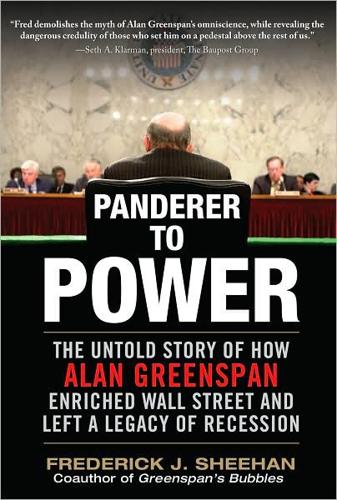
Panderer to Power
by
Frederick Sheehan
Published 21 Oct 2009
Silicon Valley is a tribute both to American ingenuity and to the financial system’s ever-increasing ability to supply venture capital to the entrepreneurs who are such a dynamic force in our economy.”16 Wall Street firms that had opened offices in Silicon Valley during the IPO mania could not have hired a better public relations representative. Their behavior was often scandalous (that, we knew at the time) and criminal (as the courts would decide, in due course). Greenspan capped off his ode to the venture capitalists who lined Sand Hill Road in Menlo Park, California, in a stellar summation: “More recent evidence remains consistent with the view that this capital spending has contributed to a noticeable pickup in productivity.”17 Within weeks, Michael Wolff, an entrepreneur who had taken full advantage of the pickup in productivity, published his memoir.
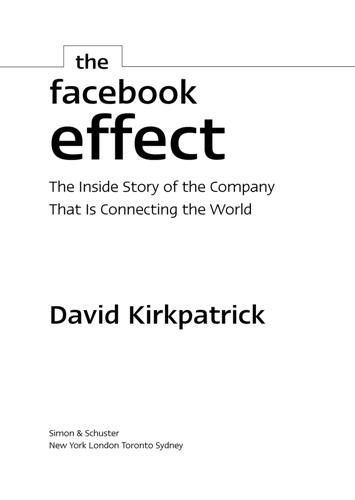
The Facebook Effect
by
David Kirkpatrick
Published 19 Nov 2010
Sequoia, for its part, was so eager to get close to them that partner Roelof Botha willingly accepted the idea. The boys hatched a plan. On the appointed day, they overslept. They were supposed to meet at 8 A.M. Botha called at 8:05—“Where are you guys?” Zuckerberg and Andrew McCollum, his Wirehog partner, rushed over to Sequoia’s swanky offices on Menlo Park’s Sand Hill Road in pajama bottoms and T-shirts. Though they said they’d overslept, it was deliberate. “It was actually supposed to be worse,” says Zuckerberg. “We won’t even go there.” Then, as the stiff but attentive partners of Sequoia looked on, Zuckerberg made his presentation. He showed ten slides. He didn’t even make a pitch for Wirehog.
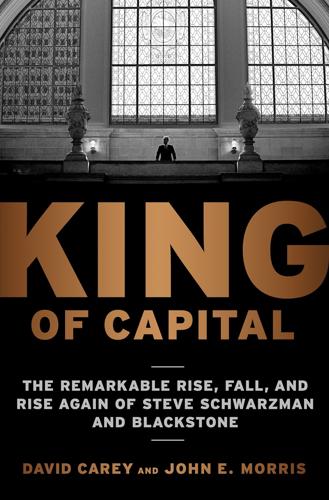
King of Capital: The Remarkable Rise, Fall, and Rise Again of Steve Schwarzman and Blackstone
by
David Carey
Published 7 Feb 2012
The epicenter of the U.S. buyout industry is Midtown Manhattan, where Blackstone, KKR, Apollo, Warburg Pincus, and dozens of other firms are headquartered within a few blocks of one another in a world of starched shirts and Hermès ties, chauffeured Mercedes, and office towers. Ground zero of the venture world is Sand Hill Road, a landscaped boulevard rising into the gentle, suburban hills behind Palo Alto, California. There capital flows in a dress-down world of khakis and golf shirts, low-rise office compounds surrounded by groves of live oaks and towering eucalyptuses. Venture capitalists drive themselves to work in Ferraris and Porsches.
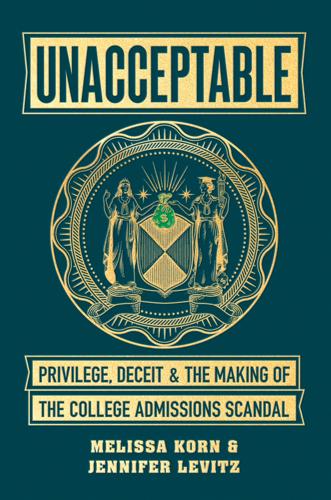
Unacceptable: Privilege, Deceit & the Making of the College Admissions Scandal
by
Melissa Korn
and
Jennifer Levitz
Published 20 Jul 2020
Just 4.7 percent of applicants for the fall 2017 entering class made the cut, 2,085 out of more than 44,000 who tried. By fall 2018, the admit rate was below 4.4 percent. The perfect weather and stunning campus were just part of the draw. Stanford sat a few miles from the venture capital firms of Sand Hill Road, where investors looked for the next Facebook or Uber. The engineering and computer science departments were among the best in the nation, and the faculty had an embarrassment of Nobel laureates and MacArthur geniuses. Bay Area companies clamored to be brought in on classroom projects. And the football team was pretty darn good.
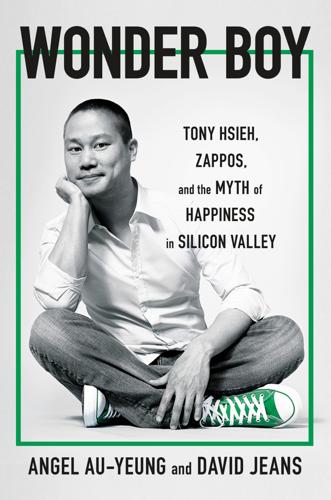
Wonder Boy: Tony Hsieh, Zappos, and the Myth of Happiness in Silicon Valley
by
Angel Au-Yeung
and
David Jeans
Published 25 Apr 2023
The other retail space would be the Venture Frogs Restaurant, which Tony gave to his parents, Richard and Judy, to manage with the goal of feeding the founders and other employees working out of the incubator. It would go through several iterations, including noodle dishes and boba. At one point its menu had a tech industry theme, with cocktails named after venture funds on Sand Hill Road, the famous street in Palo Alto where all the biggest firms like Kleiner Perkins and Accel were located. The dishes, meanwhile, were named after tech companies, like SoftBank Chicken Satay and Cisco Chinese Chicken Salad. More than a decade before Adam Neumann, the Israeli entrepreneur and marketing spin doctor who blurred the lines between work, play, and other parts of life with the ethos of the co-working venture WeWork and its residential arm WeLive, Tony fused those elements together at 1000 Van Ness, just as he had done at Harvard.
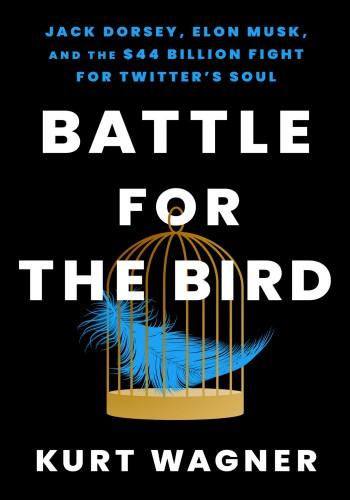
Battle for the Bird: Jack Dorsey, Elon Musk, and the $44 Billion Fight for Twitter's Soul
by
Kurt Wagner
Published 20 Feb 2024
There was just one remaining hurdle: Nobody had told Elliott. * * * Jack Dorsey sat in the afternoon sunshine outside the Goldman Sachs office in Menlo Park, about thirty-five miles south of San Francisco. Like almost every major investment bank and venture capital firm, Goldman Sachs had an office on Sand Hill Road, the iconic Silicon Valley thoroughfare near Stanford’s campus where the wealthiest and most influential investors in technology all clustered together in tony office parks. It was the kind of place where someone as famous as Dorsey would easily be recognized, but the Twitter CEO didn’t care about being inconspicuous; he needed fresh air.
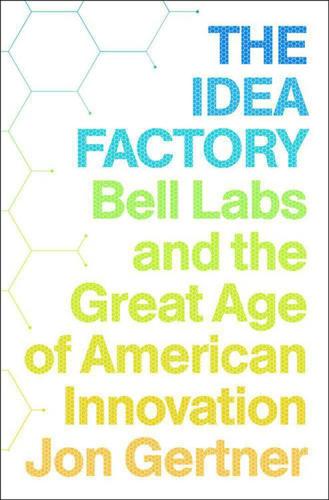
The Idea Factory: Bell Labs and the Great Age of American Innovation
by
Jon Gertner
Published 15 Mar 2012
From the 1970s on, a host of Silicon Valley entrepreneurs proved that new ideas didn’t need to be attached to a large corporation to become world-altering technologies. A good idea could arise from a teacher or student at a school like Stanford, and the purveyor of that idea could then get funding from a venture capitalist on Sand Hill Road, the wide avenue that runs along the university’s western boundary. In turn, the idea purveyor—now simply labeled an entrepreneur—could launch his or her technology through a small start-up company in a nearby town like Palo Alto or Cupertino or Mountain View. Not incidentally, in the process of backing a winner, everyone involved could get very, very rich.
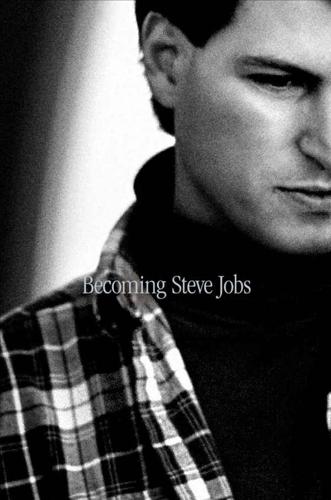
Becoming Steve Jobs: The Evolution of a Reckless Upstart Into a Visionary Leader
by
Brent Schlender
and
Rick Tetzeli
Published 24 Mar 2015
THE DRIVE SOUTH to Palo Alto is a trip through the history of Silicon Valley. From Route 92 in San Mateo over to Interstate 280, a “bucolic” eight-laner skirting San Andreas Lake and Crystal Springs Reservoir, which store drinking water for San Francisco piped in from the Sierras; past the blandly ostentatious venture-capitalist habitat along Sand Hill Road in Menlo Park and traversing the oblique, mile-long Stanford Linear Accelerator, which slashes like a hairline fracture through the landscape and beneath the freeway; past the “Stanford Dish” radio telescope, and the white-faced Herefords and ornate oak trees dotting the expansive greenbelt behind the university campus.
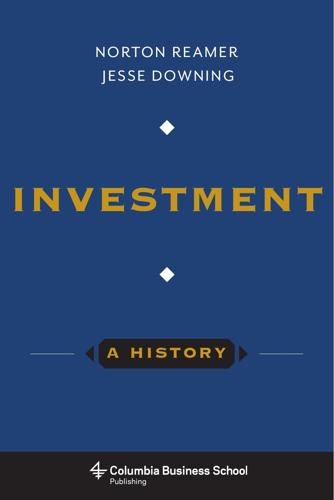
Investment: A History
by
Norton Reamer
and
Jesse Downing
Published 19 Feb 2016
More New Investment Forms 279 table 8.2 Venture Capital Firms 1991 2001 2011 No. of VC Firms in Existence 362 917 842 No. of VC Funds in Existence 640 1,850 1,274 3,475 8,620 6,125 4 45 45 40 325 173 No. of Professionals No. of First Time VC Funds Raised No. of VC Funds Raising Money This Year VC Capital Raised this Year ($B) 1.9 39.0 18.7 VC Capital Under Management ($B) 26.8 261.7 196.9 Avg VC Capital Under Mgt per Firm ($M) 74.0 285.4 233.8 Avg VC Fund Size to Date ($M) 37.4 95.4 110.6 Avg VC Fund Raised this Year ($M) 47.5 120.0 108.1 1,775.0 6,300.0 6,300.0 Largest VC Fund Raised to Date ($M) Source: “2012 National Venture Capital Association Yearbook,” National Venture Capital Asso ciation and Thomson Reuters, last modified 2012, http://www.finansedlainnowacji.pl/wp-content/uploads /2012/08/NVCA-Yearbook-2012.pdf, 9. technology. The first Silicon Valley initial public offerings were of Varian in 1956, HP in 1957, and Ampex in 1958. Sand Hill Road, in Menlo Park, California, became the hub for venture capital institutions, with today’s quite recognizable firms (Sequoia Capital and Kleiner Perkins Caufield & Byers) coming to life in 1972. Furthermore, California has almost four times more venture capital–backed companies than any other state, with a focus in all sectors, but especially consumer Internet.42 Compared to venture capital investment in the United States, the amount of venture capital funds invested in other areas of the world does not reach the same level.

Capitalism in America: A History
by
Adrian Wooldridge
and
Alan Greenspan
Published 15 Oct 2018
Fairchild Semiconductor was formed in 1957 when “the traitorous eight” left Shockley Conductor because they couldn’t take Shockley’s abusive management style any longer. The Valley had two other ingredients that proved essential for the commercialization of ideas: a large venture capital industry centered on Sand Hill Road and a ready supply of immigrants. Andy Grove, Intel’s long-term CEO, was a refugee from Hungary. Steve Jobs was the son of a Syrian immigrant (though he was adopted shortly after birth). According to AnnaLee Saxenian, 27 percent of the four thousand companies started between 1990 and 1996 were run by Chinese or Indians (double the proportion in the previous decade).
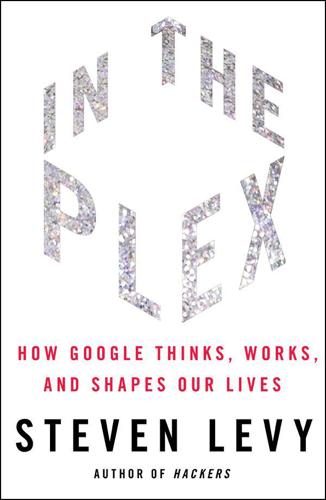
In the Plex: How Google Thinks, Works, and Shapes Our Lives
by
Steven Levy
Published 12 Apr 2011
At industry conferences, Doerr would speak so rhapsodically of technology’s potential to save the world that one might assume his work had been solely in nonprofits. He was indeed a businessman, though, and his judgment of the brainy, shaggy-haired supplicants who filed into his conference room in the glass-walled buildings in Menlo Park’s Sand Hill Road was astute. He’d seen plenty of smart nerds with good ideas, and was more than happy, on the recommendation of Andy Bechtolsheim, to see two more. Google’s idea, presented with Kamangar’s slides, was compelling. And its founders seemed straight out of the mold of previous winners from Stanford.
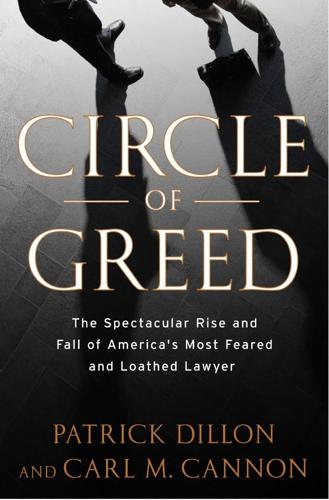
Circle of Greed: The Spectacular Rise and Fall of the Lawyer Who Brought Corporate America to Its Knees
by
Patrick Dillon
and
Carl M. Cannon
Published 2 Mar 2010
It was held at the San Francisco home of Sanford “Sandy” Robertson, one of Doerr’s fellow high-tech venture capitalists. Doerr had already vowed to his partner Brook Byers that he would “crush” Lerach and his initiative. Now he’d found someone—a Democrat, no less—who could help him do it. With Doerr’s blessing, Randlett virtually ran the anti-Lerach campaign out of Kleiner Perkins’s headquarters on the Sand Hill Road near Stanford University, which that summer and autumn featured a huge banner reading “NO ON 211.” The air war against Lerach was conducted by Goddard Claussen, the top-drawer Sacramento-based media campaign consultancy responsible for the “Harry and Louise” ads that helped derail then–first lady Hillary Clinton’s 1993–94 health care initiative.

This Is How They Tell Me the World Ends: The Cyberweapons Arms Race
by
Nicole Perlroth
Published 9 Feb 2021
Terheggen was in the Netherlands on business but lived in Silicon Valley, and he regaled the young men with stories of start-ups and the venture-capital dollars that seemed to magically appear out of thin air. The two imagined Silicon Valley to be a techie’s paradise, nestled among redwoods and verdant mountains—like Switzerland, only with smiling engineers pedaling up and down Sand Hill Road in logoed hoodies. Terheggen invited them to visit. “Great, we’ll be there in two weeks,” they said. When the two arrived in San Francisco that summer, they only managed a brief stop at the redwoods. They spent the bulk of their time driving up and down Highway 101, visiting the campuses of Facebook, Google, and Apple.

Empire of AI: Dreams and Nightmares in Sam Altman's OpenAI
by
Karen Hao
Published 19 May 2025
Altman proceeded to invite Musk to the private dinner on the future of AI and humanity to meet a group of top engineers and AI researchers that he hoped to get on board the project. With Musk’s confirmation of attendance, the dinner venue upgraded to a restaurant at one of the SpaceX founder’s go-to spots: the upscale sixteen-acre, $1,000-a-night Rosewood Hotel, nestled between dozens of venture-capital firms along the picturesque, tree-lined Sand Hill Road, which slices through Silicon Valley. The private dining room they gathered in opened to a balcony that overlooked a beautiful pool rimmed with Italian cypress trees and garden roses. As Musk walked in over an hour late, the rest of the men were eagerly waiting. Among them: Altman, Greg Brockman, Dario Amodei, and Ilya Sutskever.

The Innovators: How a Group of Inventors, Hackers, Geniuses and Geeks Created the Digital Revolution
by
Walter Isaacson
Published 6 Oct 2014
But it was a lack of insight at the leadership level. A lot of them told us, ‘Search is not that important.’ ”162 As a result, Page and Brin decided to start a company of their own. It helped that within a few miles of the campus there were successful entrepreneurs to act as angel investors, as well as eager venture capitalists just up Sand Hill Road to provide working capital. David Cheriton, one of their professors at Stanford, had founded an Ethernet product company with one such investor, Andy Bechtolsheim, which they had sold to Cisco Systems. In August 1998 Cheriton suggested to Page and Brin that they meet with Bechtolsheim, who had also cofounded Sun Microsystems.
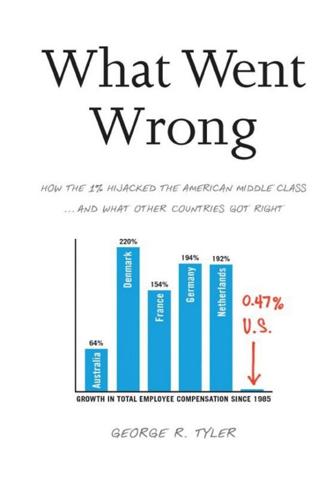
What Went Wrong: How the 1% Hijacked the American Middle Class . . . And What Other Countries Got Right
by
George R. Tyler
Published 15 Jul 2013
MSNBC reports it took the gamers ten days in September 2011 to solve it.40 Innovation is the lifeblood of economic growth and future prosperity. Here is how Thomas Mason, director of the Oak Ridge National Laboratory, and Persis Drell, director of the SLAC National Accelerator laboratory atop Sand Hill Road overlooking Stanford, explained its importance: “Fully half of US economic growth since 1945 can be attributed to investments in science and technology…. Innovation—not trade policy or labor costs—is the most important factor in global economic competitiveness and continued American prosperity.”41 This statement clarifies why the narcissistic American business community that prioritizes mergers, stock buybacks, and quarterly earnings over R&D is America’s Achilles heel, deemphasizing innovation, which, “… is the most important factor in global economic competitiveness and continued American prosperity.”

Facebook: The Inside Story
by
Steven Levy
Published 25 Feb 2020
The process had quietly begun for what would be the biggest tech IPO ever. Facebook, unsurprisingly, chose Morgan Stanley to lead the effort. Its top banker, Michael Grimes, had been snaring the juiciest offerings with regularity. His office was not in New York City or even the financial district in San Francisco but on Sand Hill Road in Menlo Park, where the big VC firms made their bets. He had worked on the Google IPO and recently on LinkedIn’s. And he was friendly with Sheryl Sandberg. (As usual, other investment banks and advisers joined in, including Goldman Sachs and JPMorgan.) Zuckerberg had firm ideas about the way Facebook’s stock structure would operate.
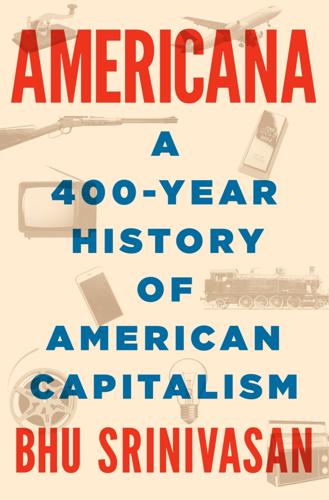
Americana: A 400-Year History of American Capitalism
by
Bhu Srinivasan
Published 25 Sep 2017
The burn rate, the rate at which a start-up spends in its quest to become a viable business, was higher than Clark had anticipated. This was partly by design. Sensing the need to move as fast as possible, Clark spent freely to speed progress toward the first commercial Web browser. He then turned to Sand Hill Road, the famed road in Silicon Valley where the major venture capital firms were located. Kleiner Perkins, one of the pioneers in formal venture capital, agreed to put in $5 million for 20 percent of the company. With the money Netscape was able to launch its browser into the marketplace. It was immediately clear that Netscape had a hit.

Americana
by
Bhu Srinivasan
The burn rate, the rate at which a start-up spends in its quest to become a viable business, was higher than Clark had anticipated. This was partly by design. Sensing the need to move as fast as possible, Clark spent freely to speed progress toward the first commercial Web browser. He then turned to Sand Hill Road, the famed road in Silicon Valley where the major venture capital firms were located. Kleiner Perkins, one of the pioneers in formal venture capital, agreed to put in $5 million for 20 percent of the company. With the money Netscape was able to launch its browser into the marketplace. It was immediately clear that Netscape had a hit.
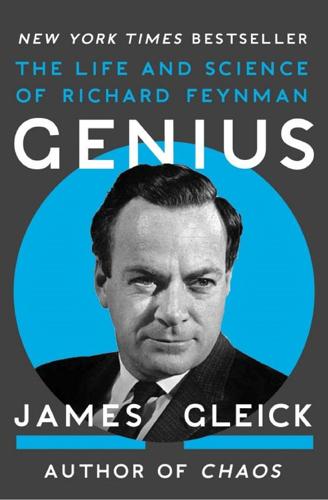
Genius: The Life and Science of Richard Feynman
by
James Gleick
Published 1 Jan 1992
He began visiting SLAC regularly in the summer of 1968, however, and saw how much simpler was the interaction offered by electron-proton collisions, the electron tearing through the proton like a bullet. He stayed with his sister; she had moved to the Stanford area to work for a research laboratory, and her house was just across Sand Hill Road from the accelerator center. The physicists who would gather on the outdoor patio to listen to his stories that summer would see him slamming his open hands together in a boisterous illustration of a new idea he had. He was talking about “pancakes”—flat particle pancakes with hard objects embedded in them.
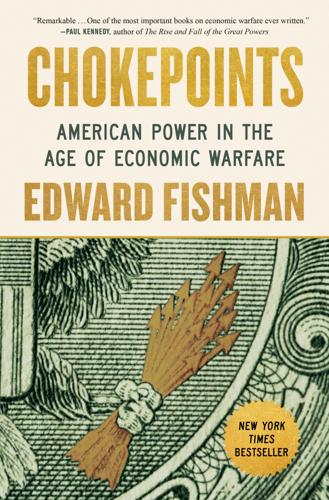
Chokepoints: American Power in the Age of Economic Warfare
by
Edward Fishman
Published 25 Feb 2025
But as Senator John Cornyn, one of its main proponents, testified, “The context for this legislation is important and relatively straightforward, and it’s China.” Gone were the days when Beijing-backed firms could snatch up stakes in Silicon Valley tech startups as if they were just like any other VC fund on Sand Hill Road. In the months that followed, Trump also signed laws that strengthened export control authorities and created the U.S. International Development Finance Corporation, a new institution intended to enable the United States to make overseas investments in competition with China’s Belt and Road Initiative.
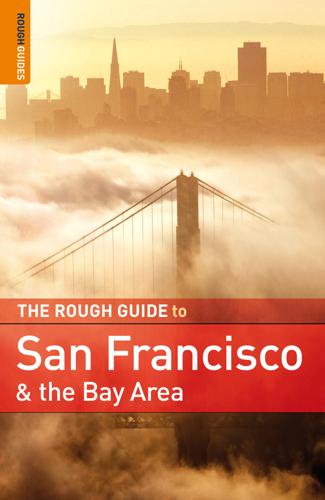
Rough Guide to San Francisco and the Bay Area
by
Nick Edwards
and
Mark Ellwood
Published 2 Jan 2009
| South along the Bay 331 Nearby, history buffs will enjoy the Herbert Hoover Memorial Exhibit Pavilion (Tues–Sat 11am–4pm; free), which displays changing exhibits from the vast Hoover collection of posters, photographs, letters, and other documents. If you are more interested in the latest trends in subatomic behavior, you won’t want to miss the Stanford Linear Accelerator (visitor center Mon–Fri 9am–4pm; tours by appointment only; free; t 650/926-2204, w www.slac .stanford.edu), a mile west of the central campus on Sand Hill Road, where infinitesimally small particles are crashed into one another at very high speeds to see what happens. For a bird’s-eye view of the campus (and the rest of the Bay Area), head up one of the hiking trails that leads from the gate along Junípero Serra Boulevard at Stanford Avenue to Stanford’s giant communications dish atop the foothills to the west of the campus.

The Stack: On Software and Sovereignty
by
Benjamin H. Bratton
Published 19 Feb 2016
For those unfamiliar, Survival Research Laboratories is a Bay Area-based “industrial performing arts” collective famous for its pyrotechnic displays of machinic mayhem and which might typify a DIY engineering ethic often associated with the “California Ideology,” whereas Page Mill Road in Palo Alto (and Sand Hill Road in Menlo Park) have housed important clusters of important Silicon Valley venture capital firms. 21. Nick Whitford-Dyer, “Red Plenty Platforms,” Culture Machine 14 (2013): 1–27, and Tiziana Terranova, “Red Stack Attack!” in #Accelerate: The Accelerationist Reader, ed. Robin Mackay and Armen Avanessian (Falmouth, Cornwall: Urbanomic and Merve Verlag, 2014), 379–400, both make explicit connections between Spufford's version of cybernetic planning, contemporary computing platforms, and my Stack thesis.

Parks Directory of the United States
by
Darren L. Smith
and
Kay Gill
Published 1 Jan 2004
An 8-mile bike path in the park connects to the 25-mile Cape Cod Rail Trail. ★2728★ NASHUA RIVER RAIL TRAIL 595 Main St Townsend, MA 01474 Web: www.mass.gov/dcr/parks/northeast/nash.htm Phone: 978-597-8802 Size: 11 miles. Location: Runs through Ayer, Groton, Pepperell, and Dunstable, with access at Ayer Center, Groton Center, Groton Sand Hill Road, and Dunstable at state line. Facilities: Scenic overlooks, rest stops; drinking water at Groton Town Hall; non-flush public toilets at trailhead in Ayer. Activities: ★2732★ NORWOTTUCK RAIL TRAIL c/o Connecticut River Greenway State Park 136 Damon Rd Northampton, MA 01060 Web: www.mass.gov/dcr/parks/central/nwrt.htm Phone: 413-586-8706 535 9.